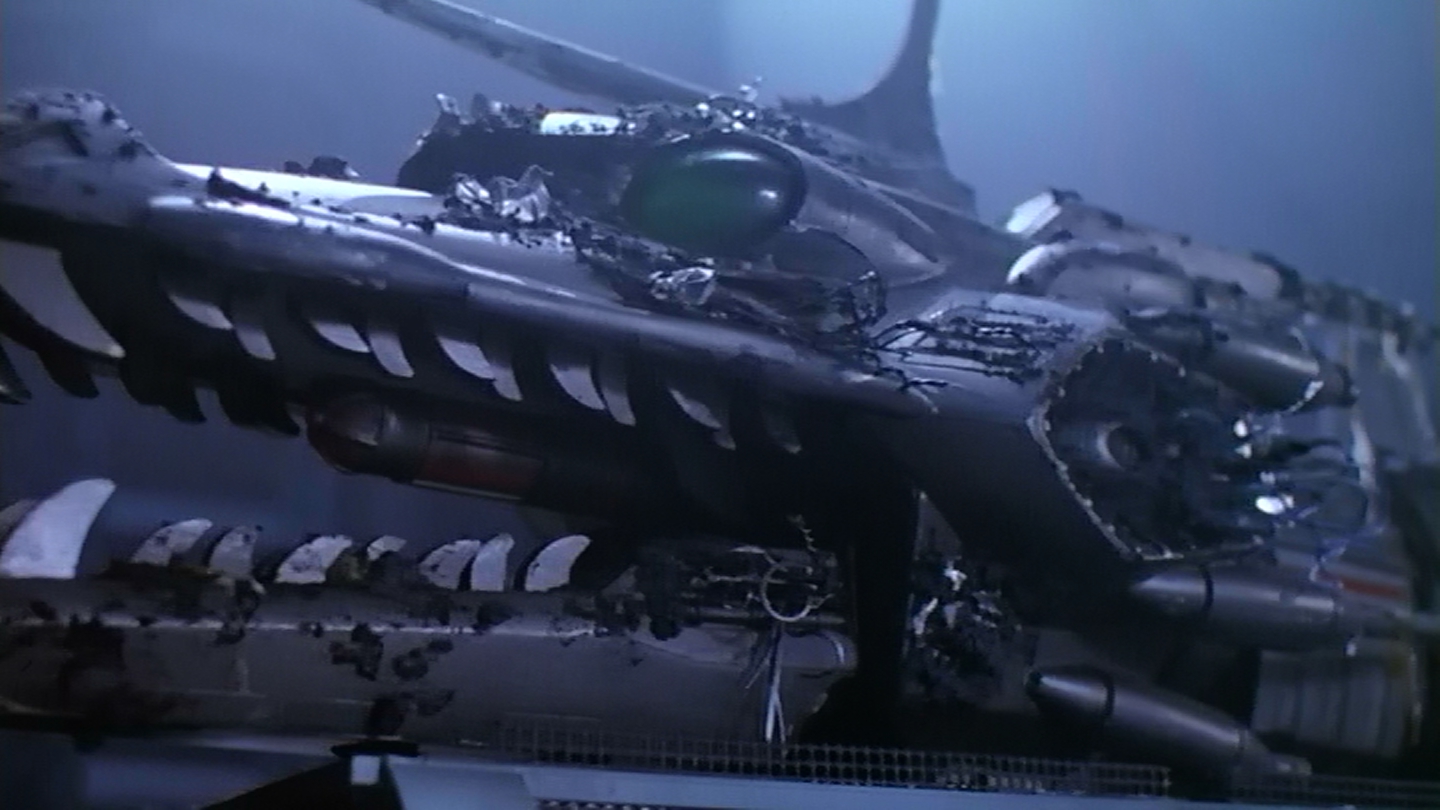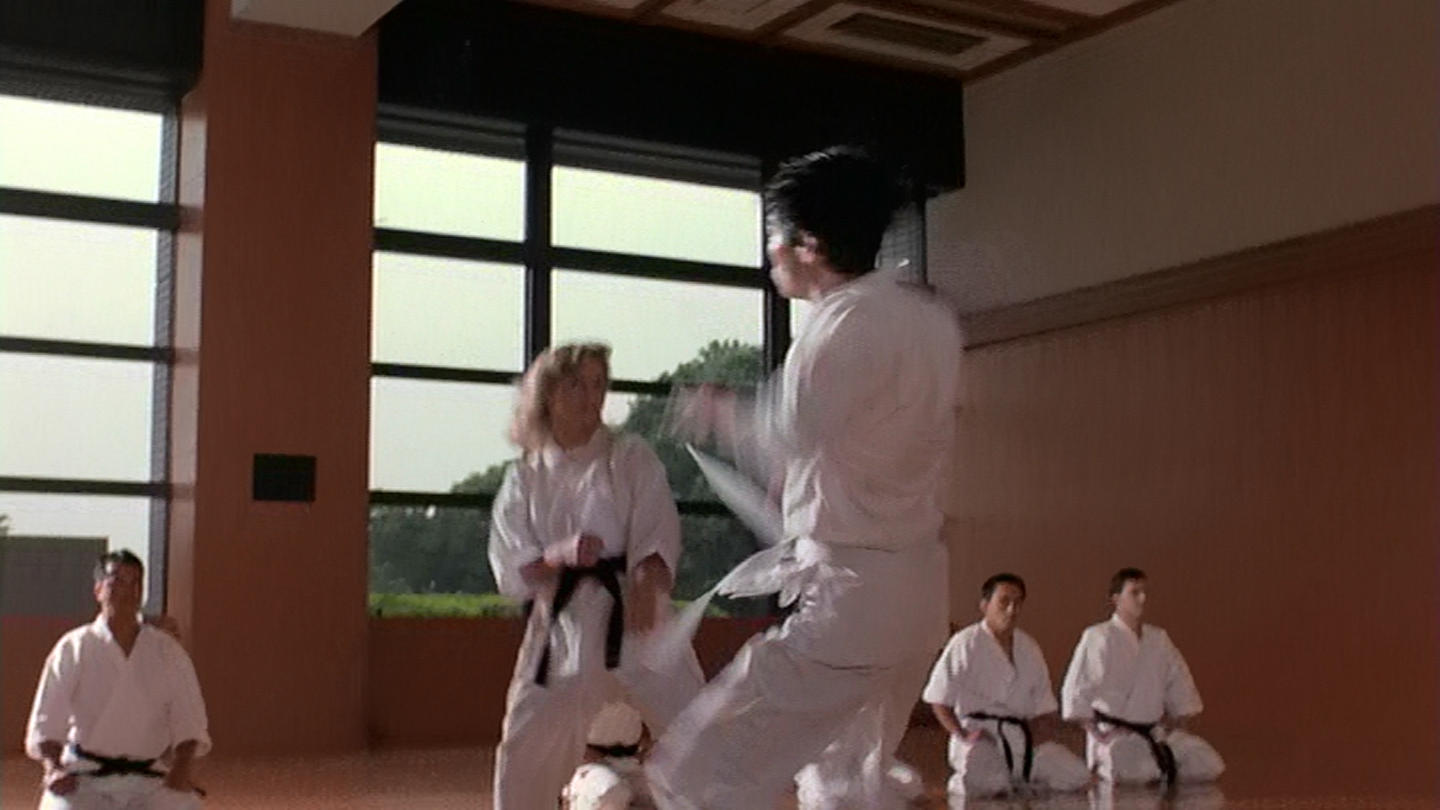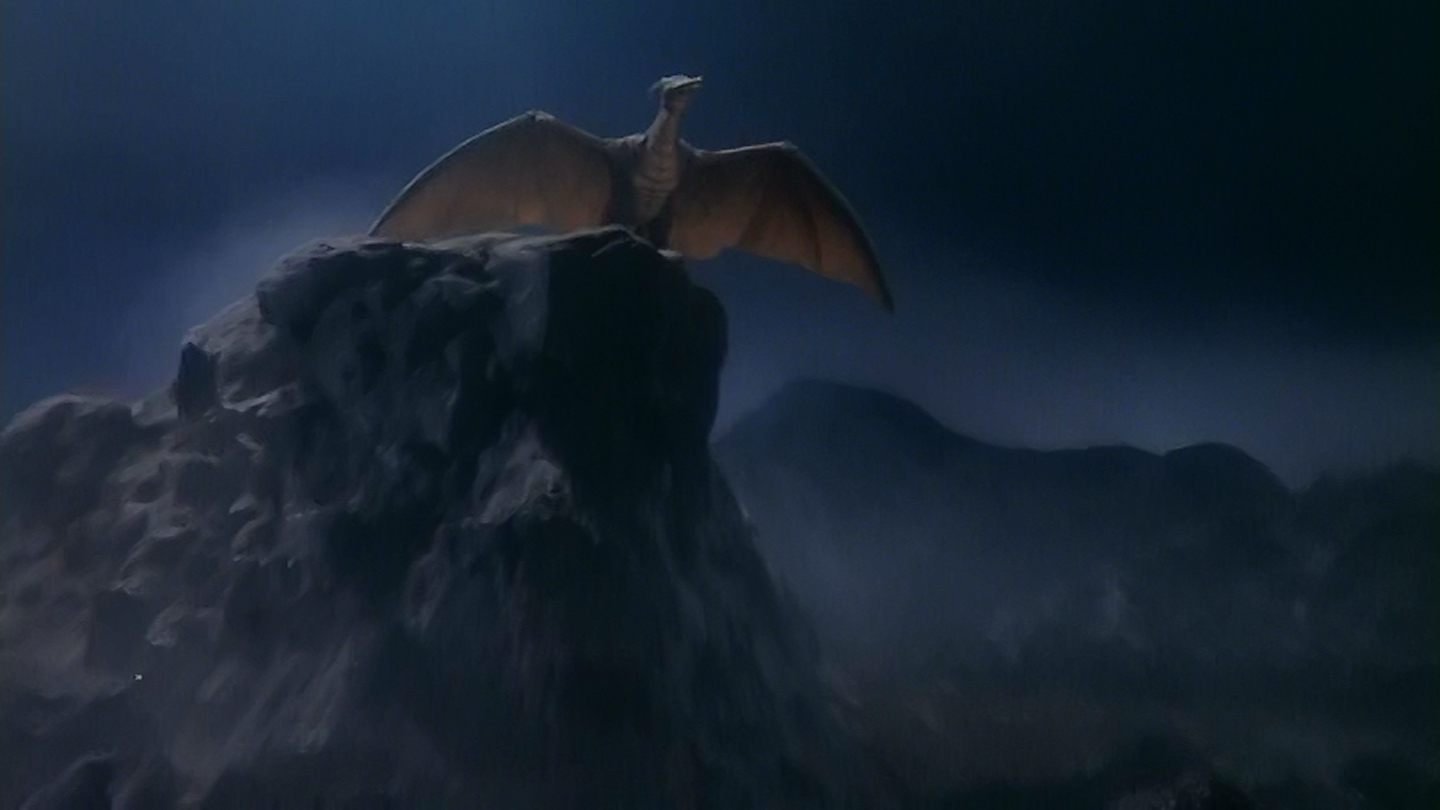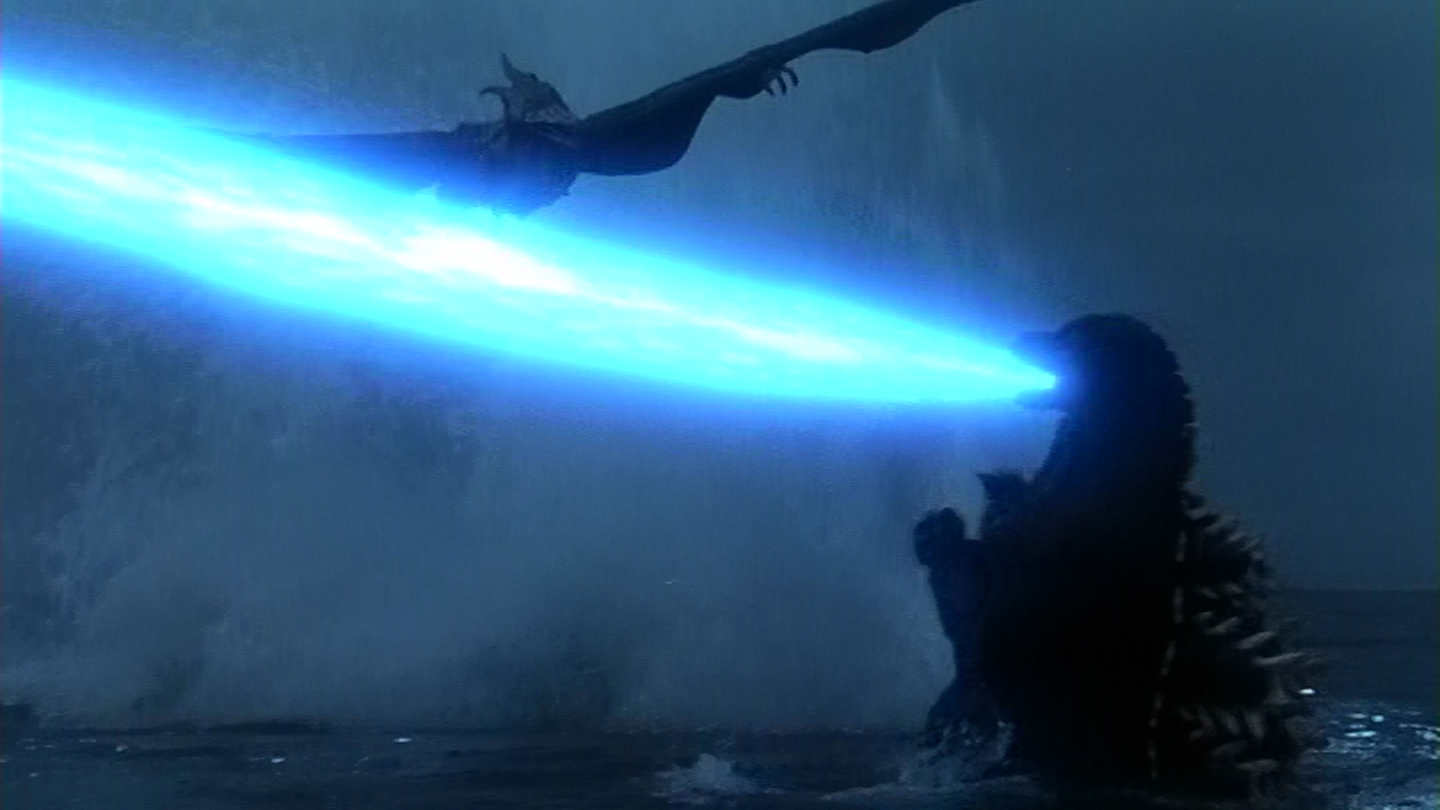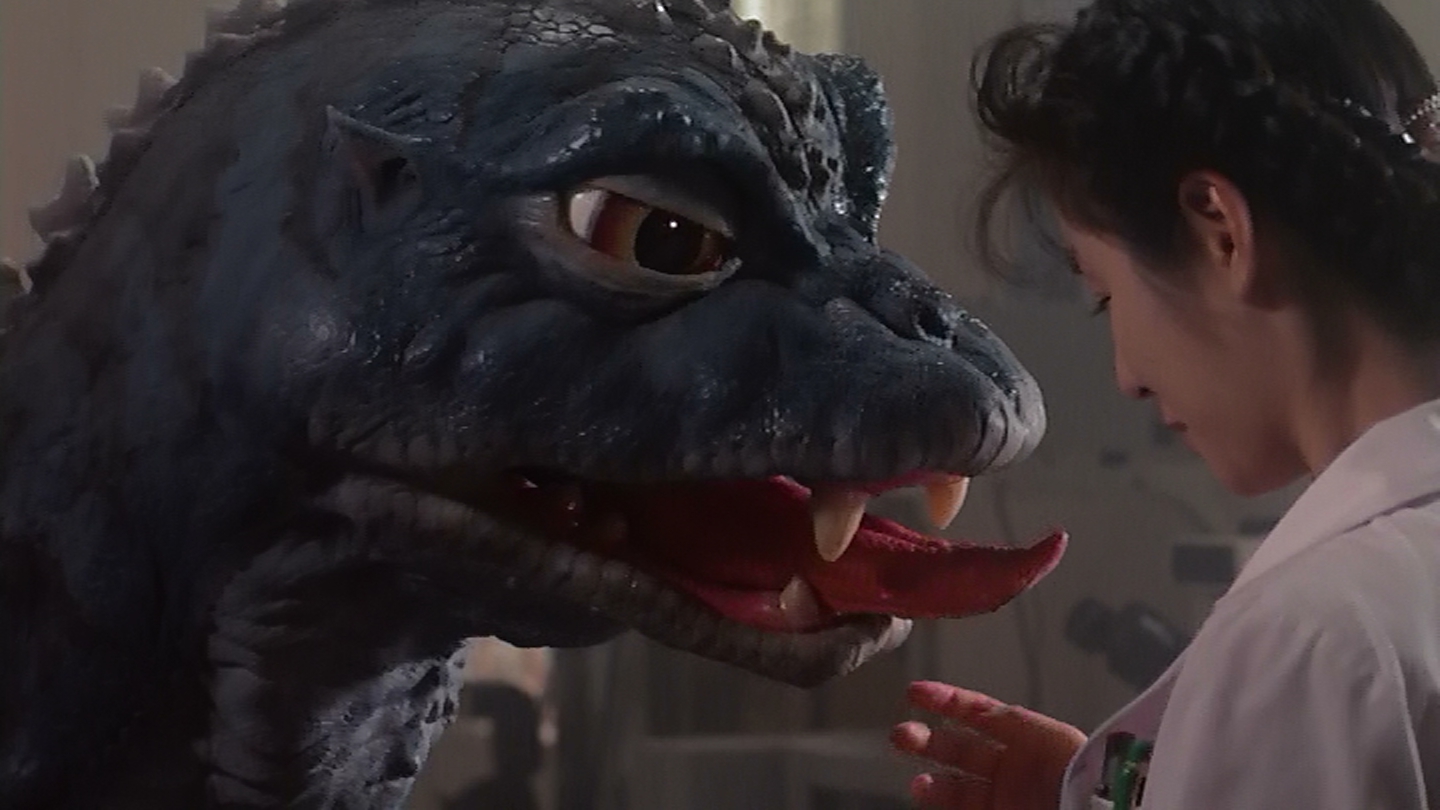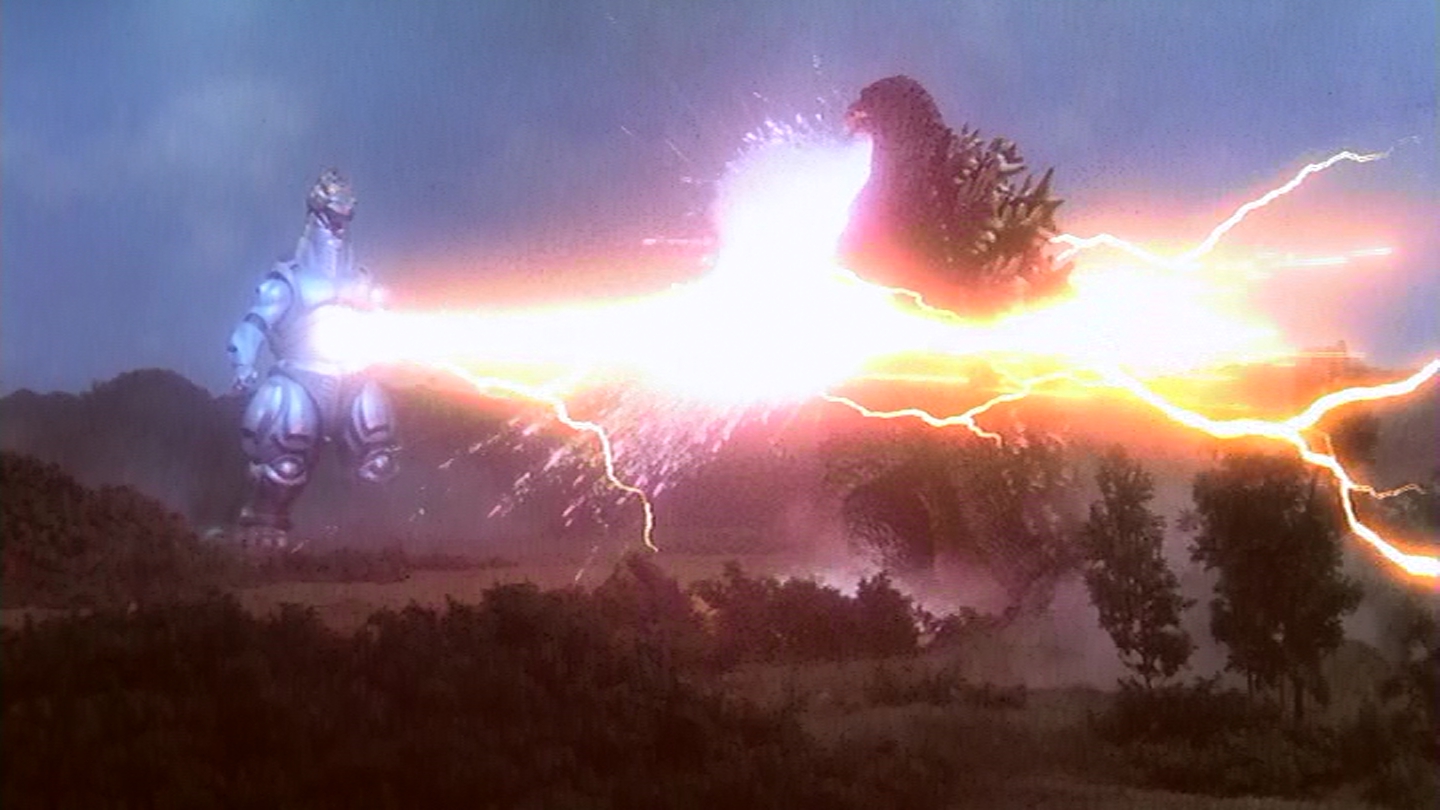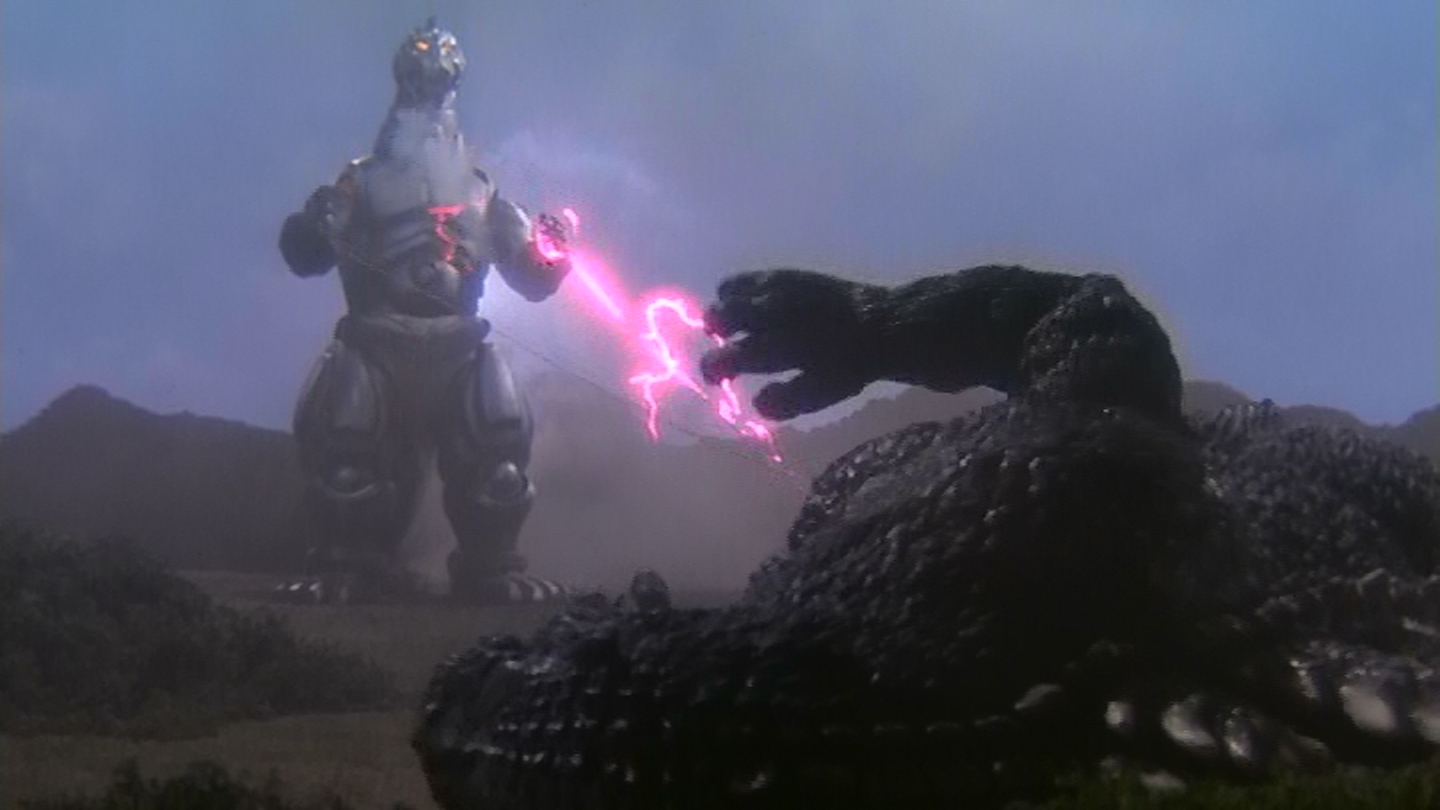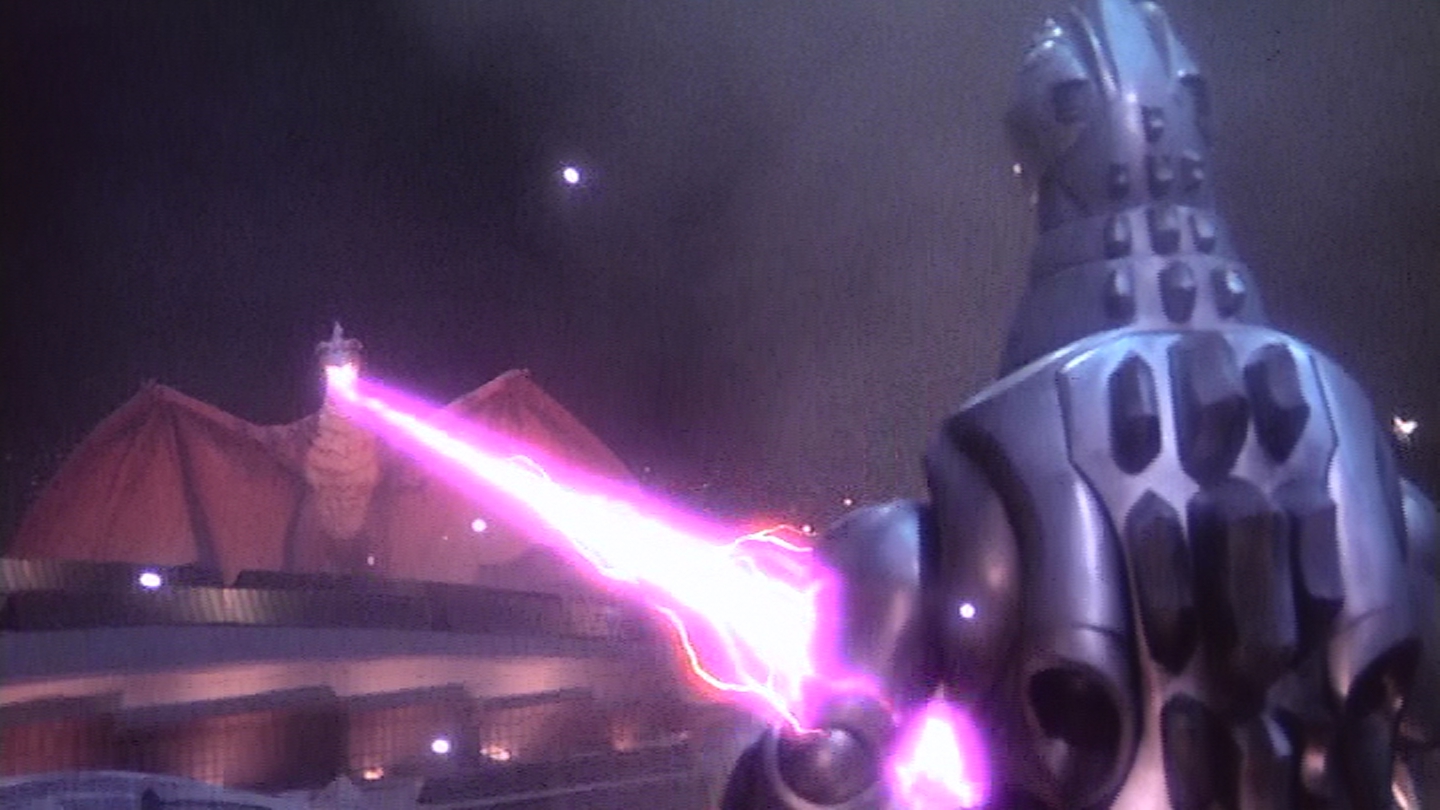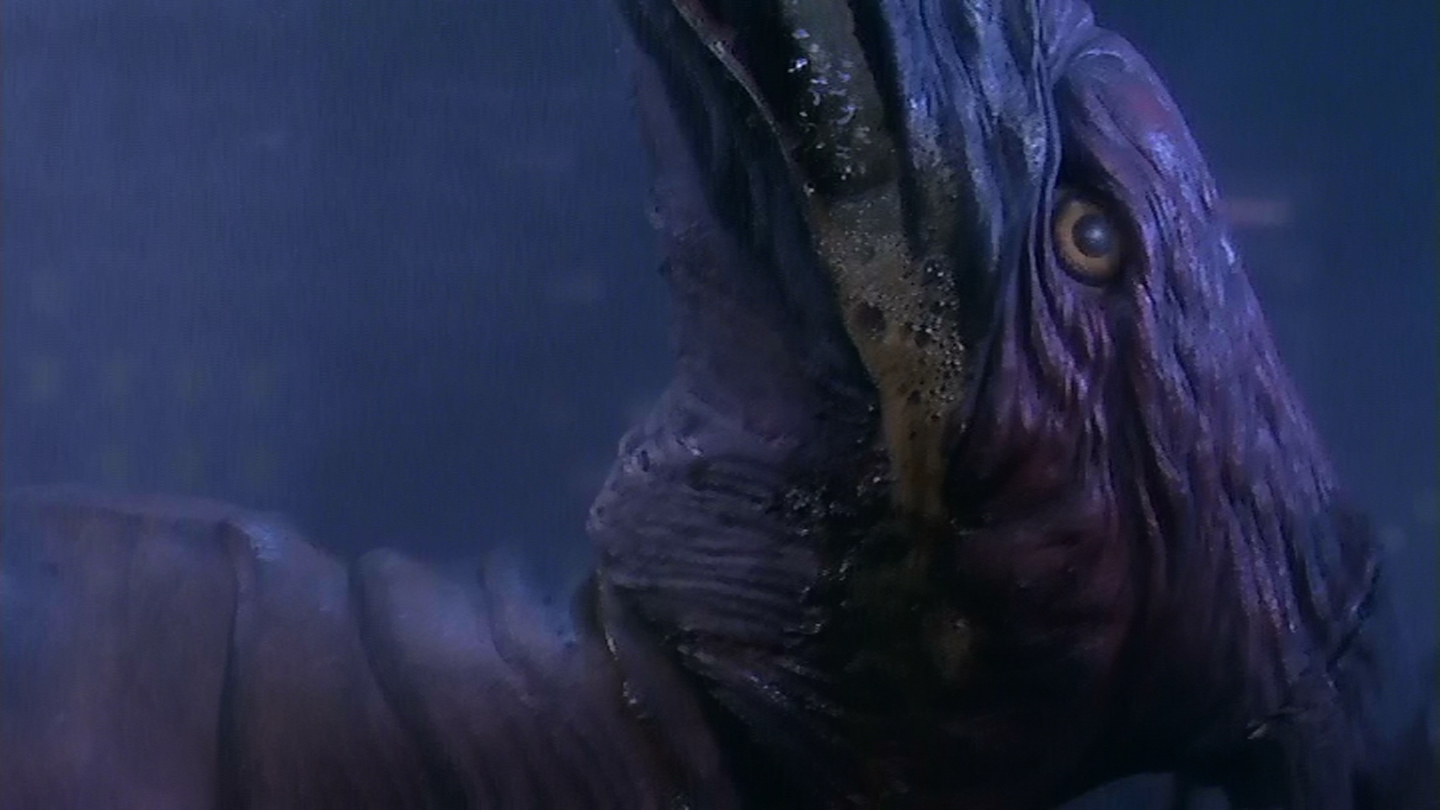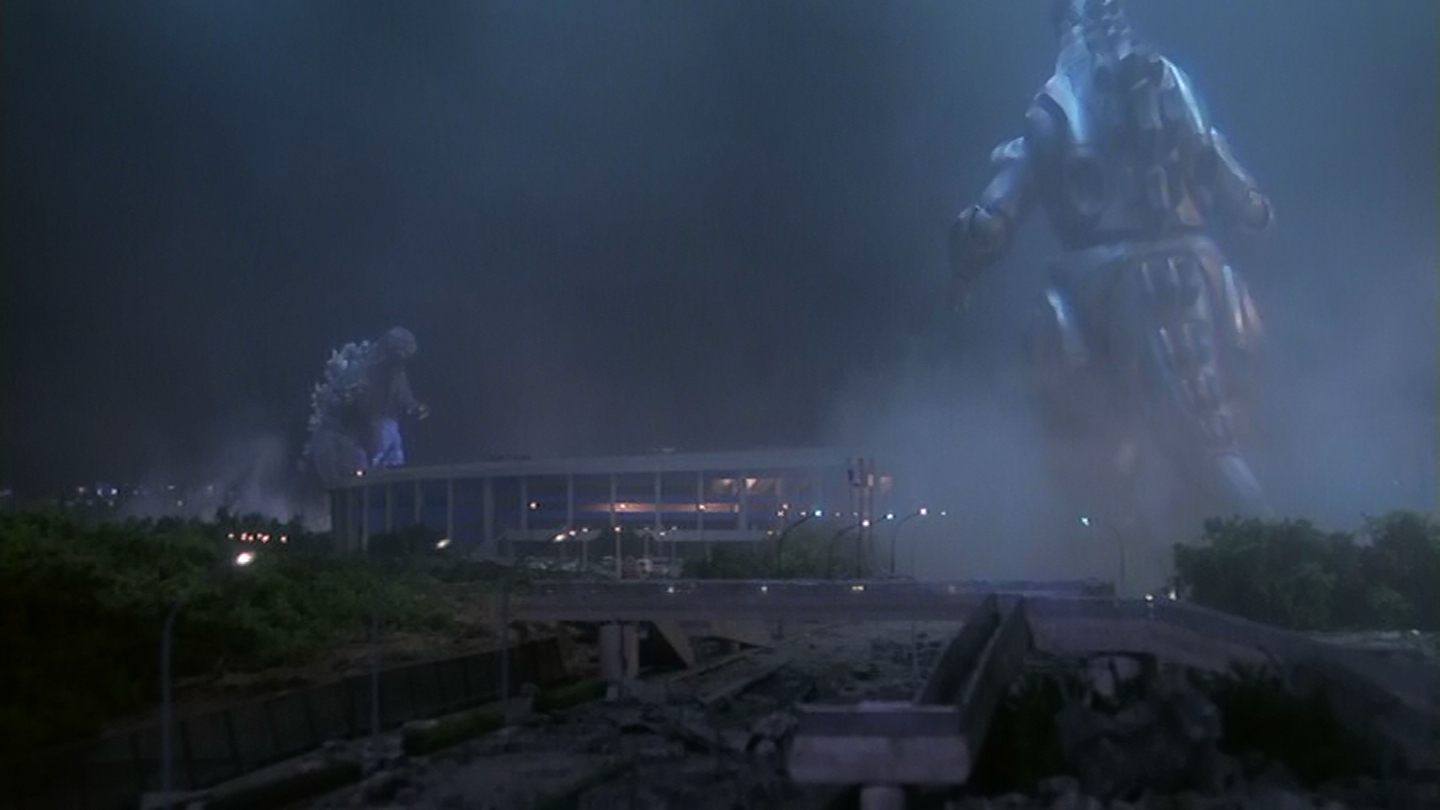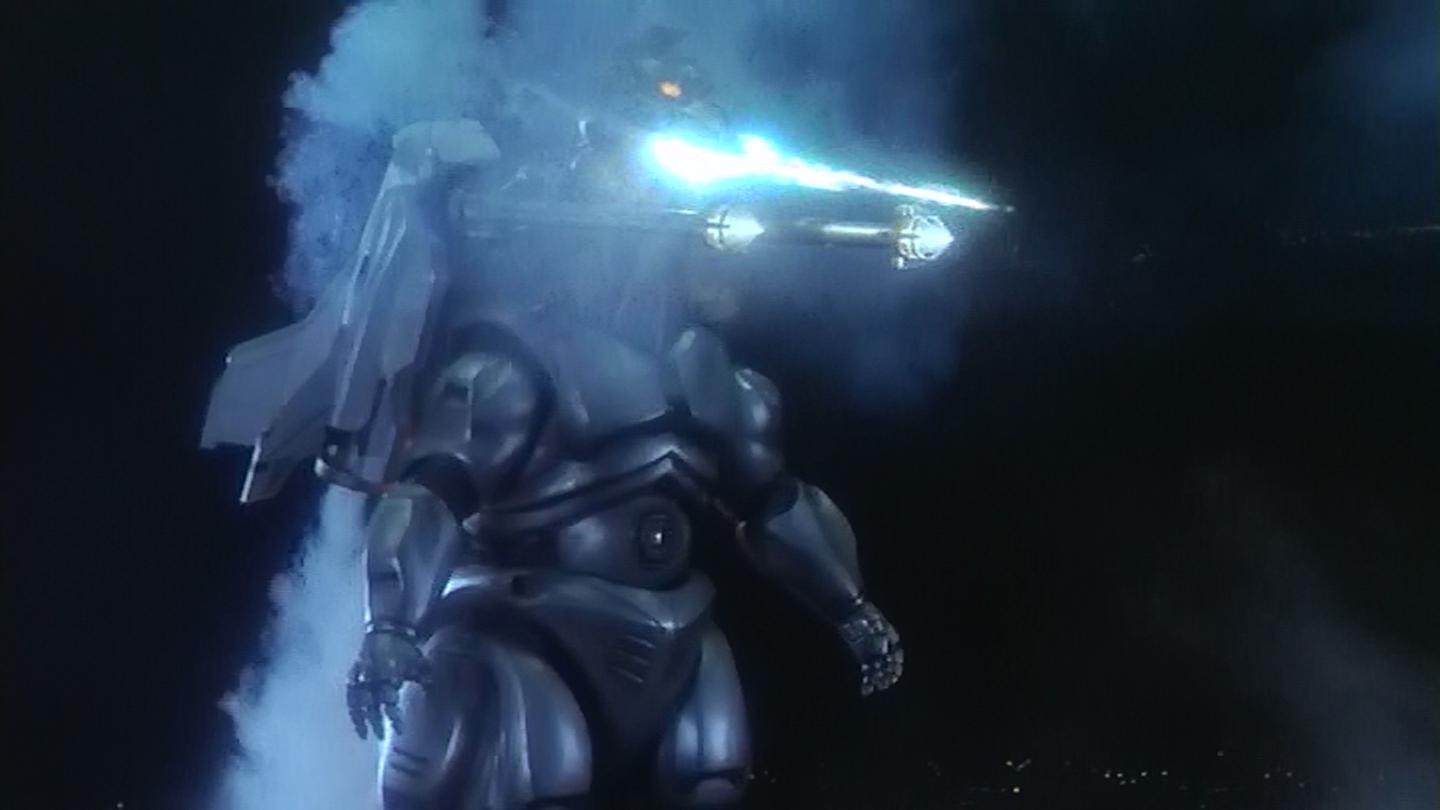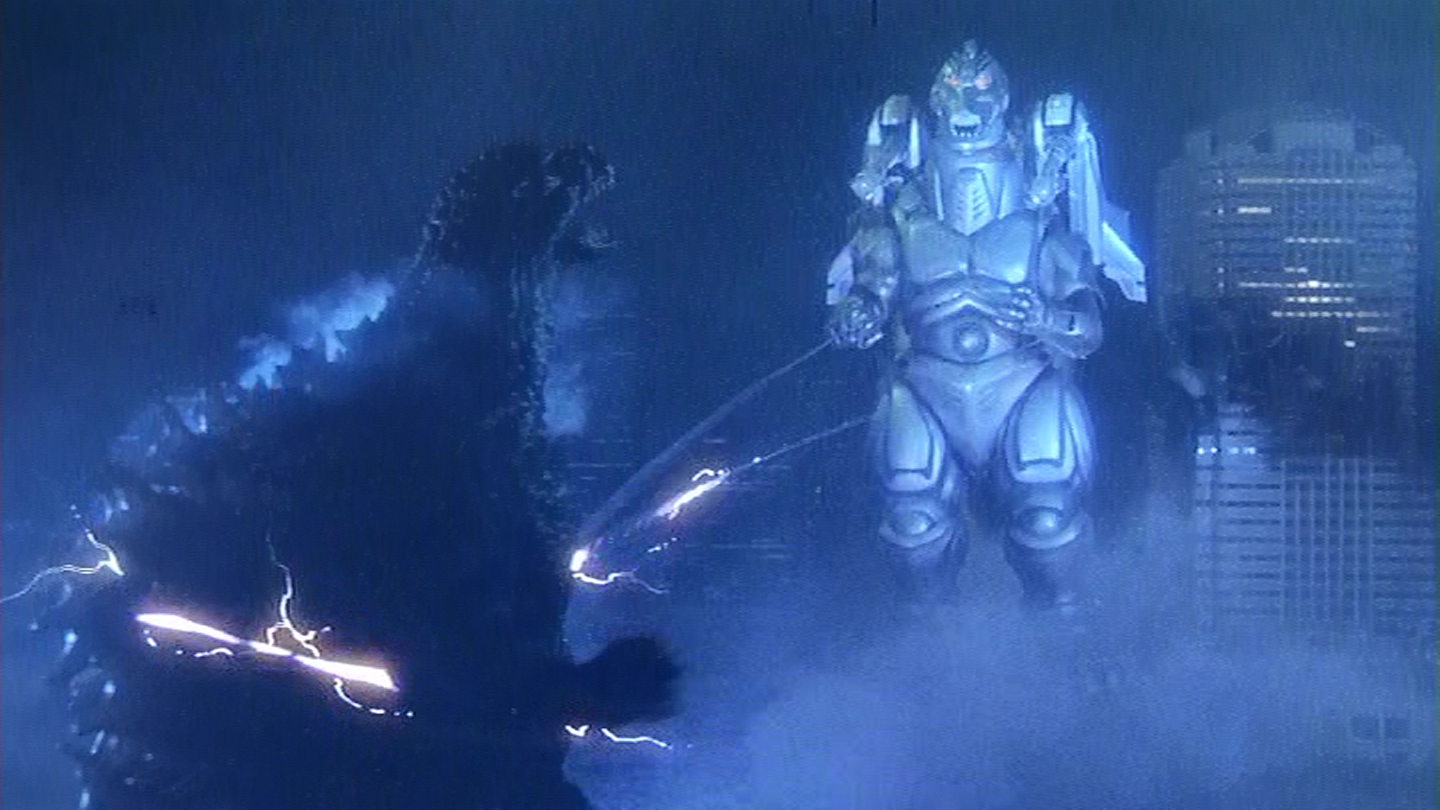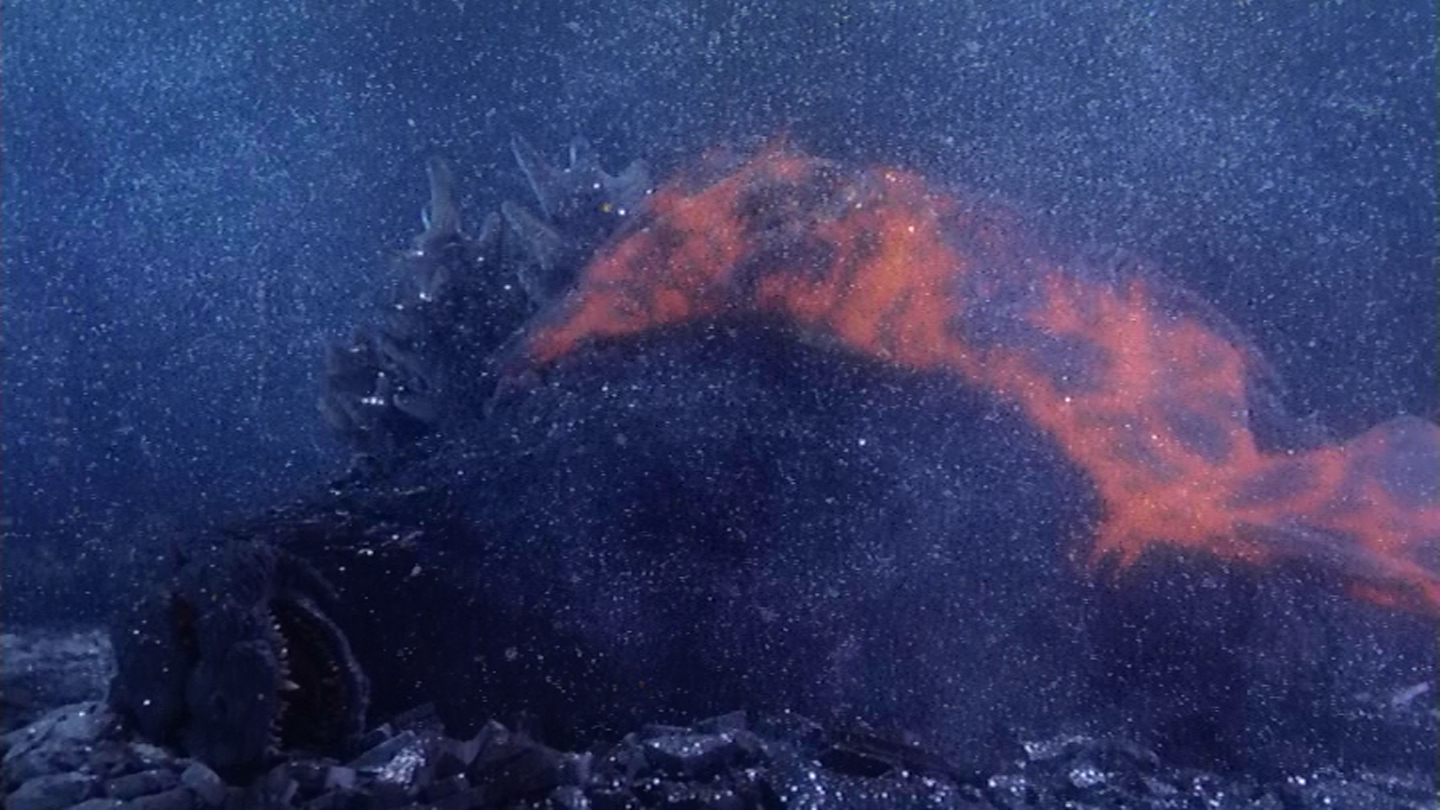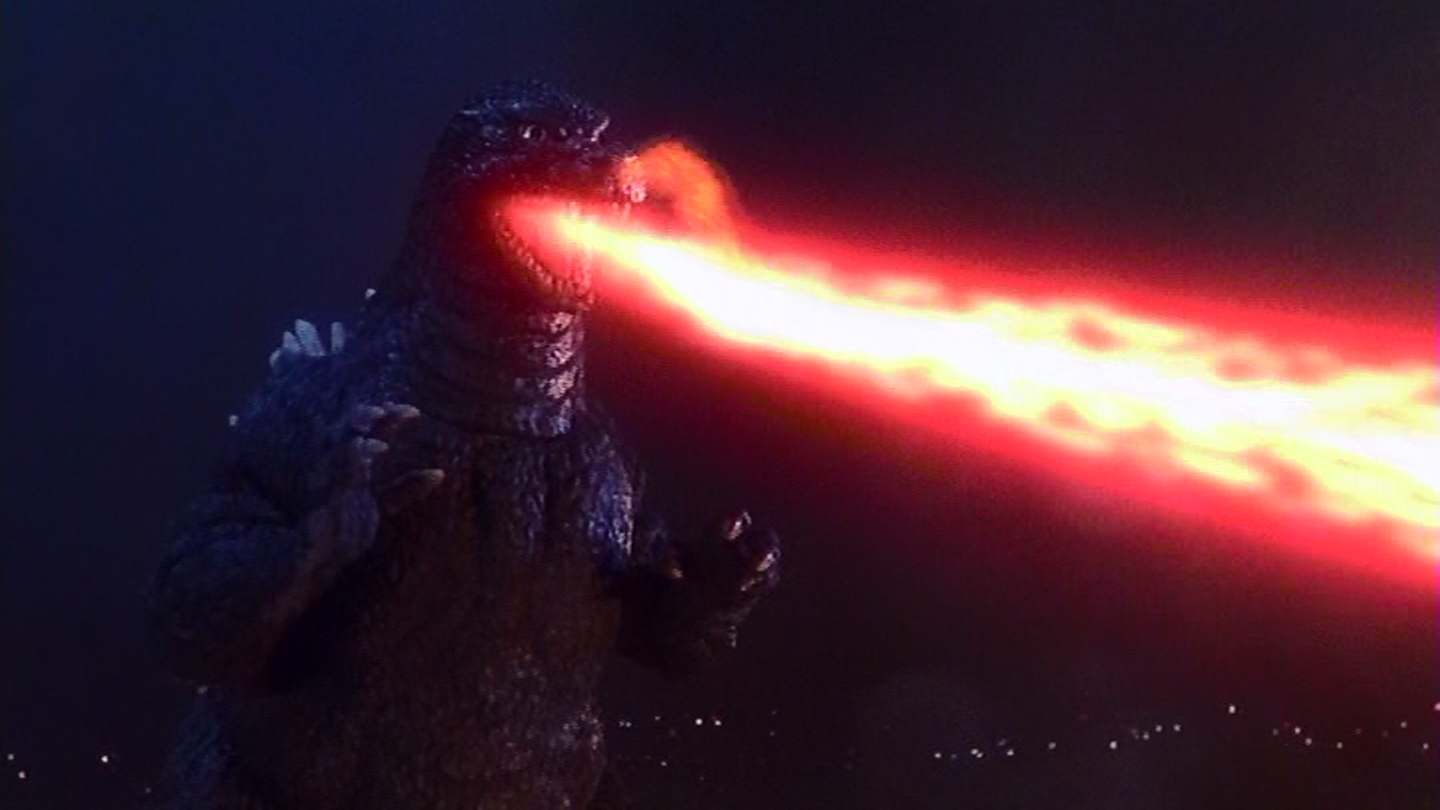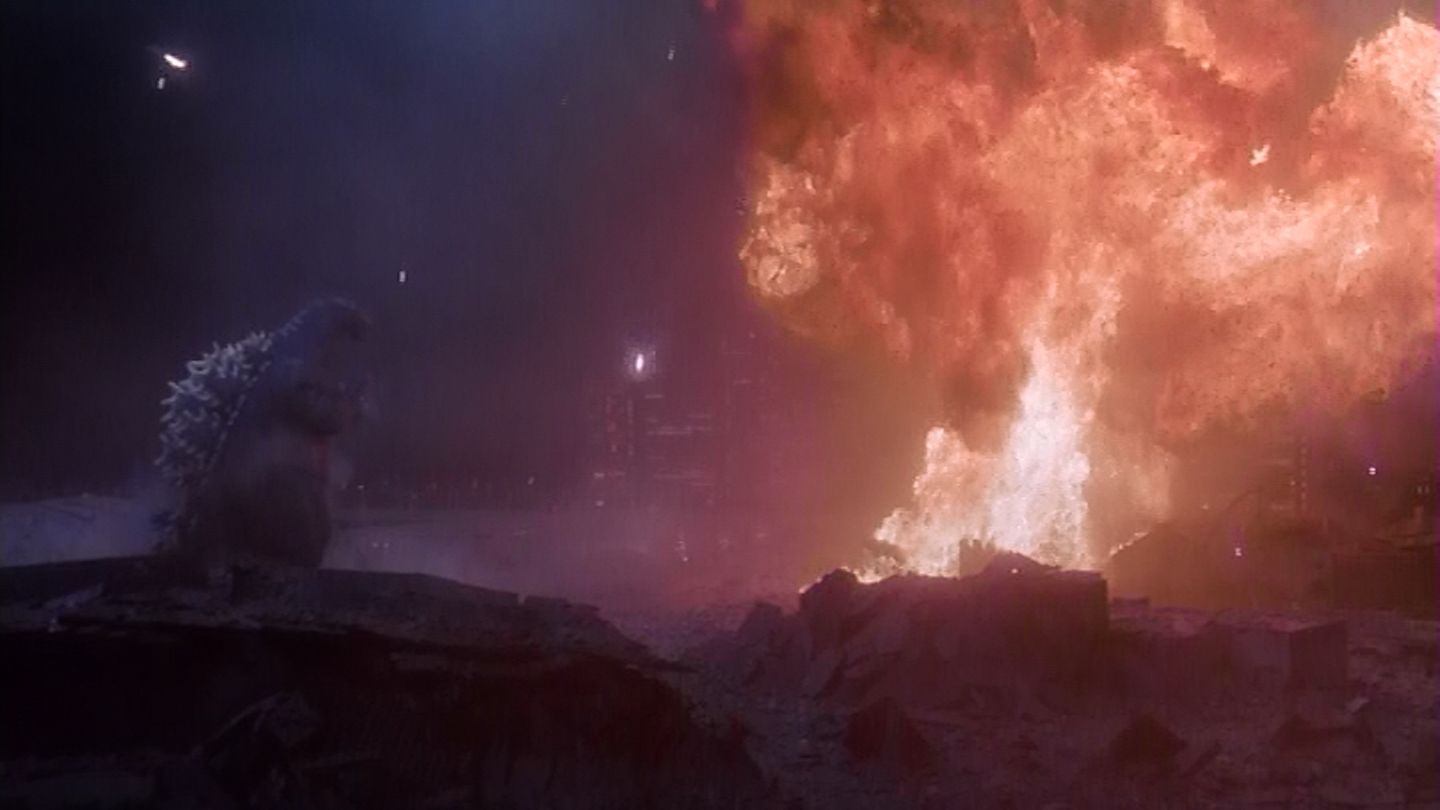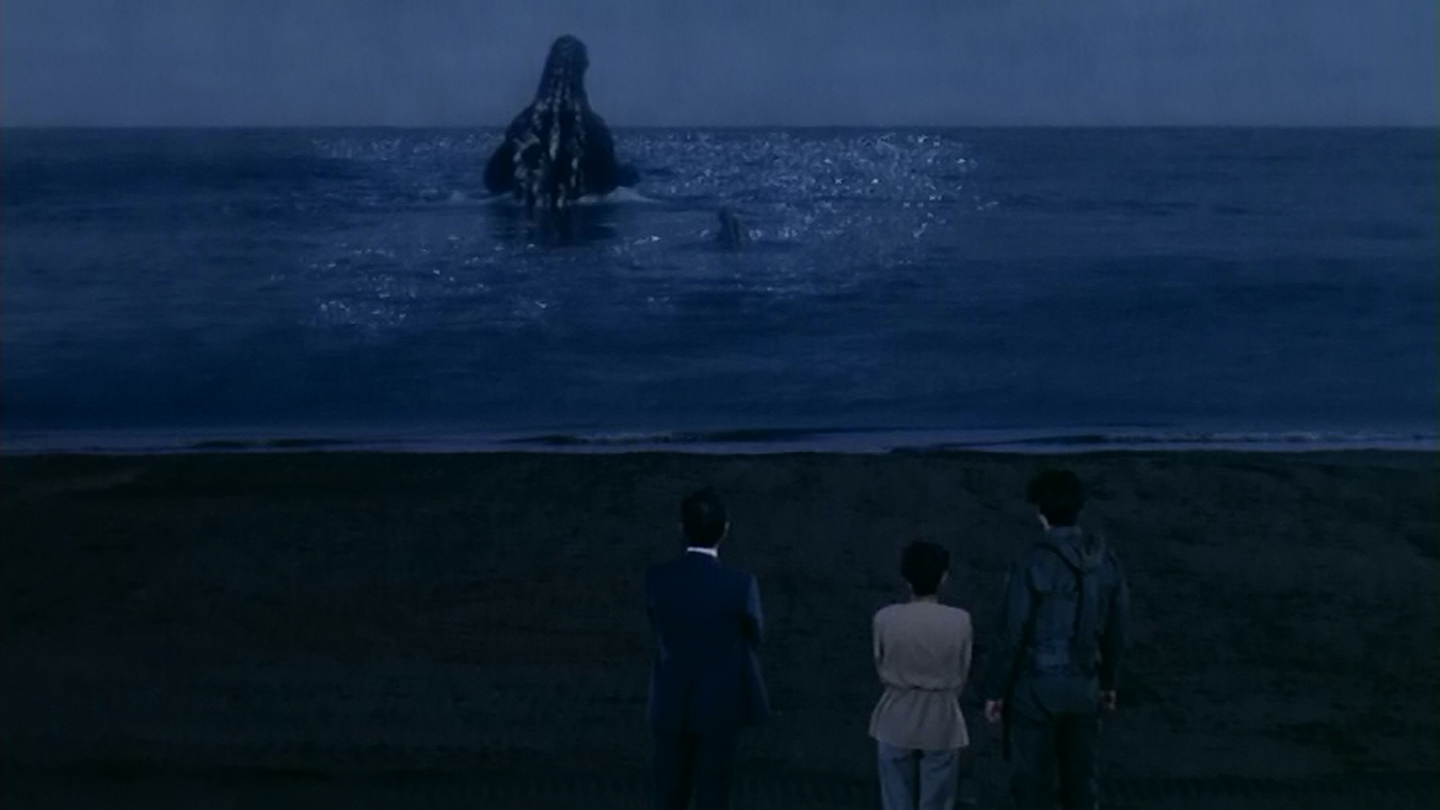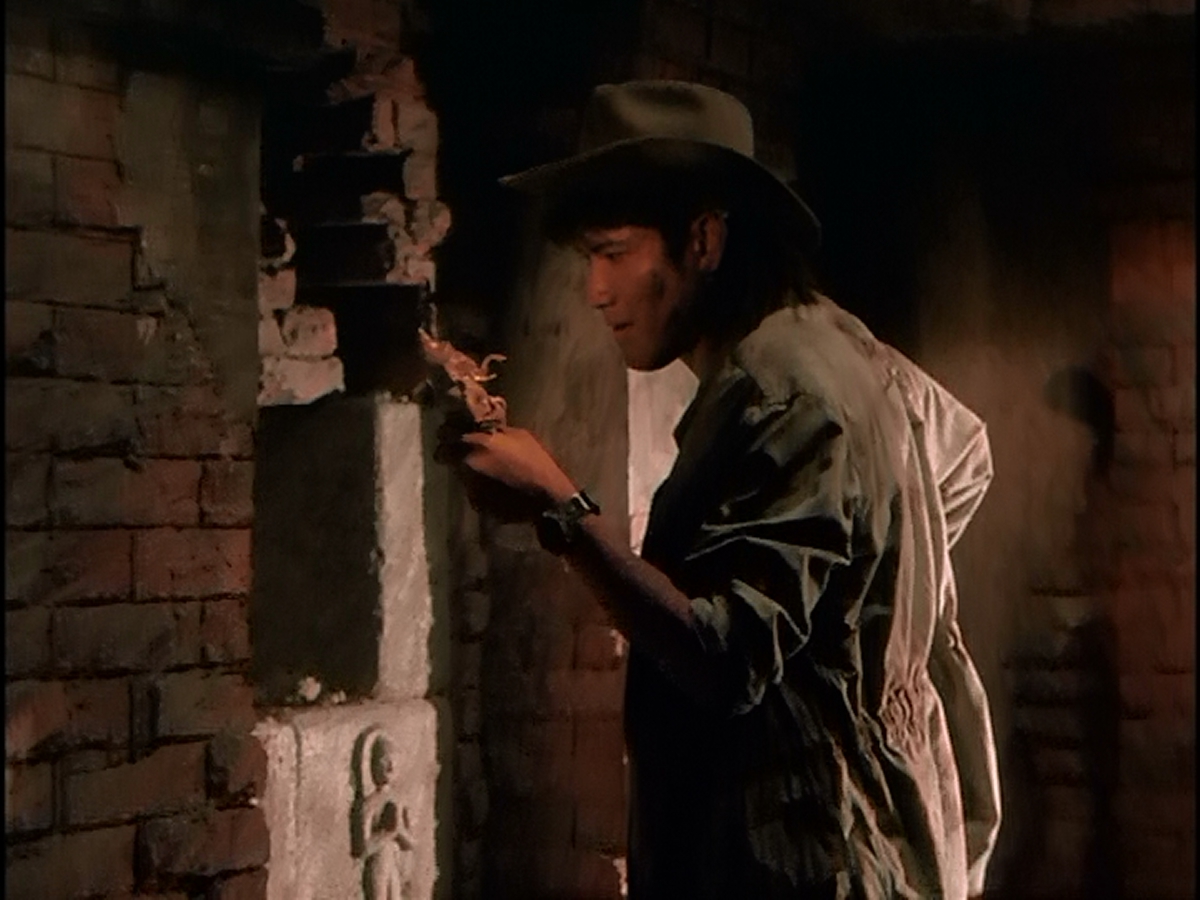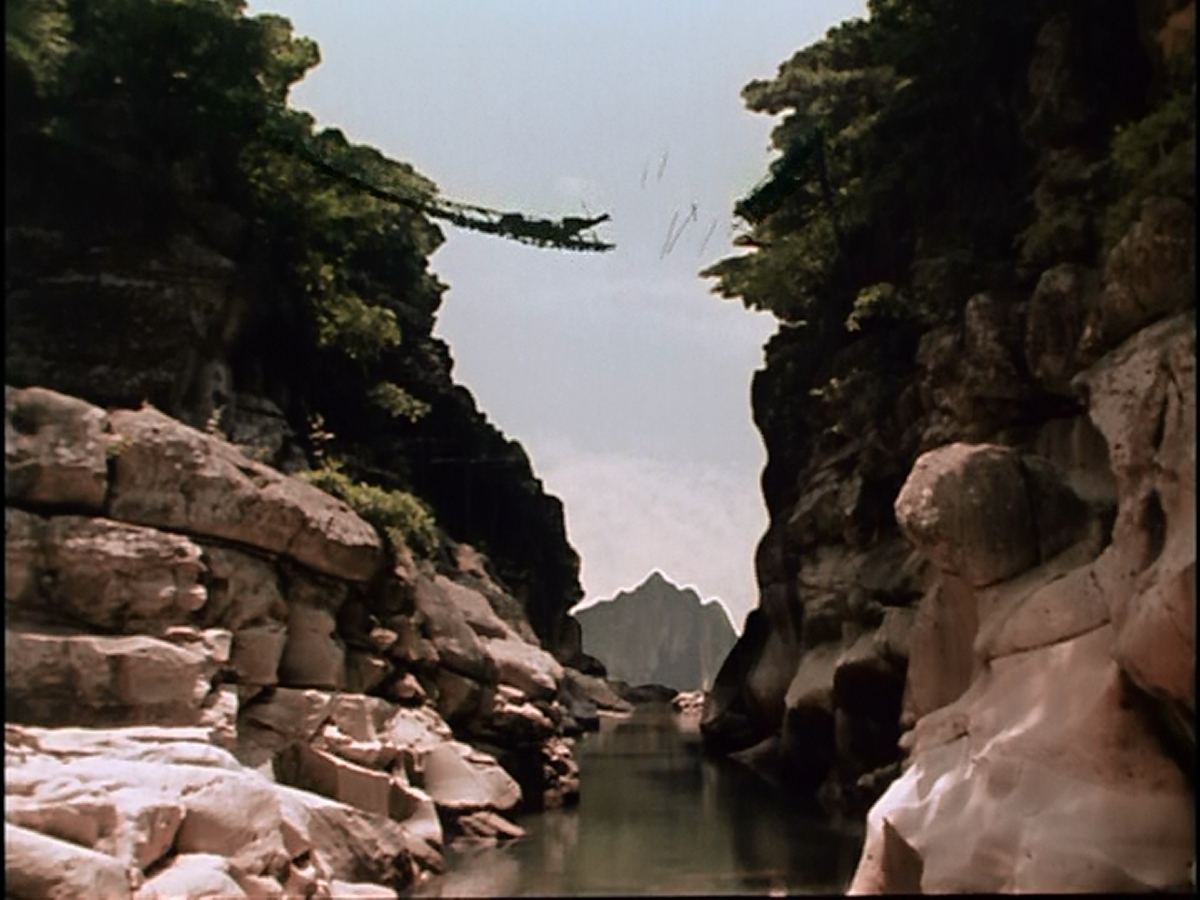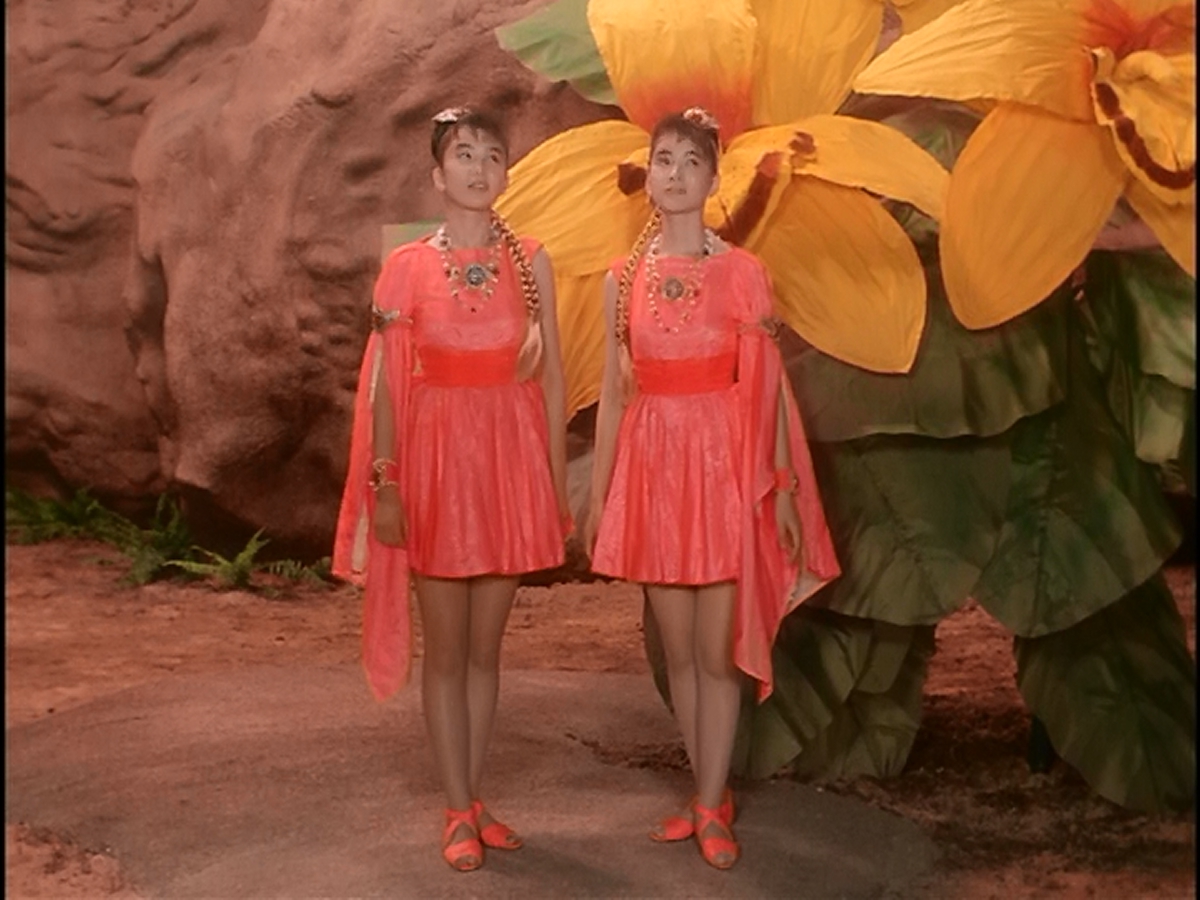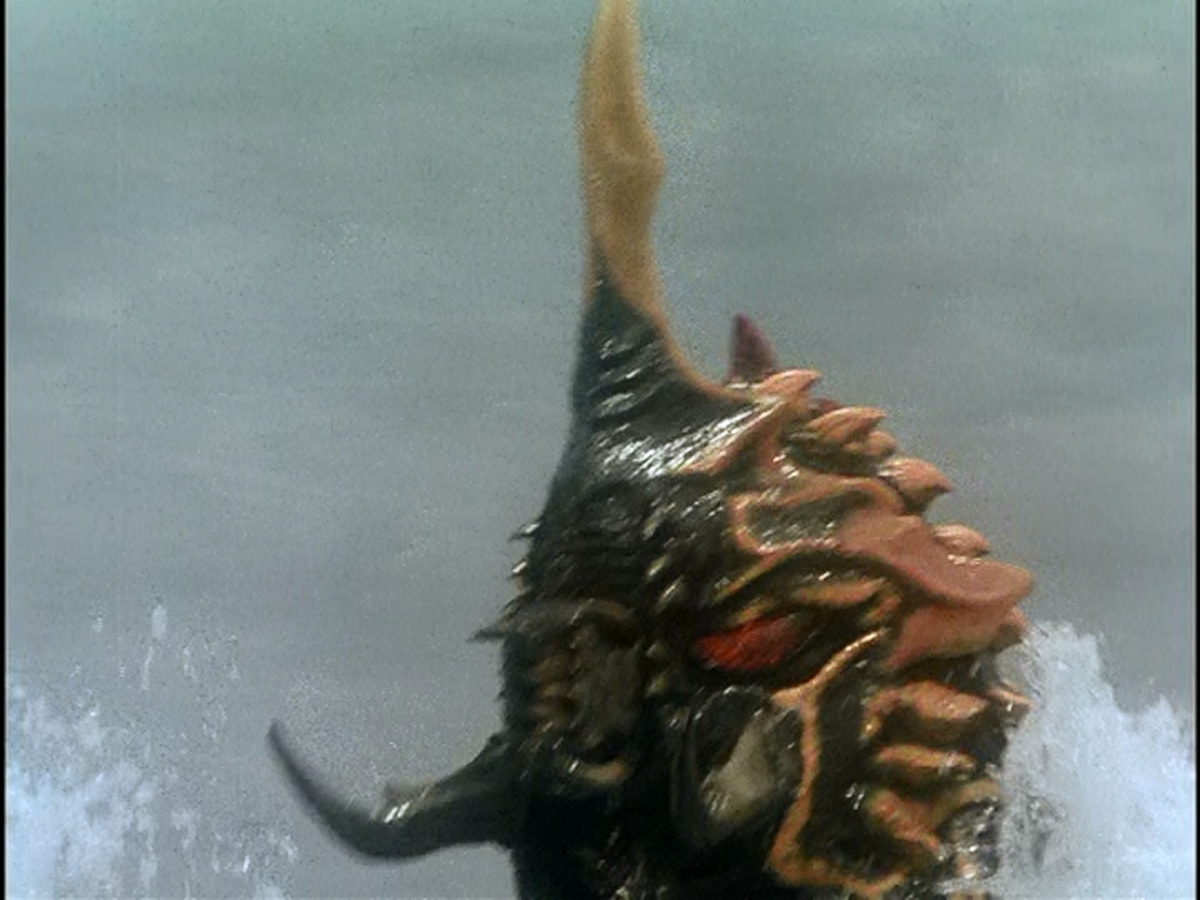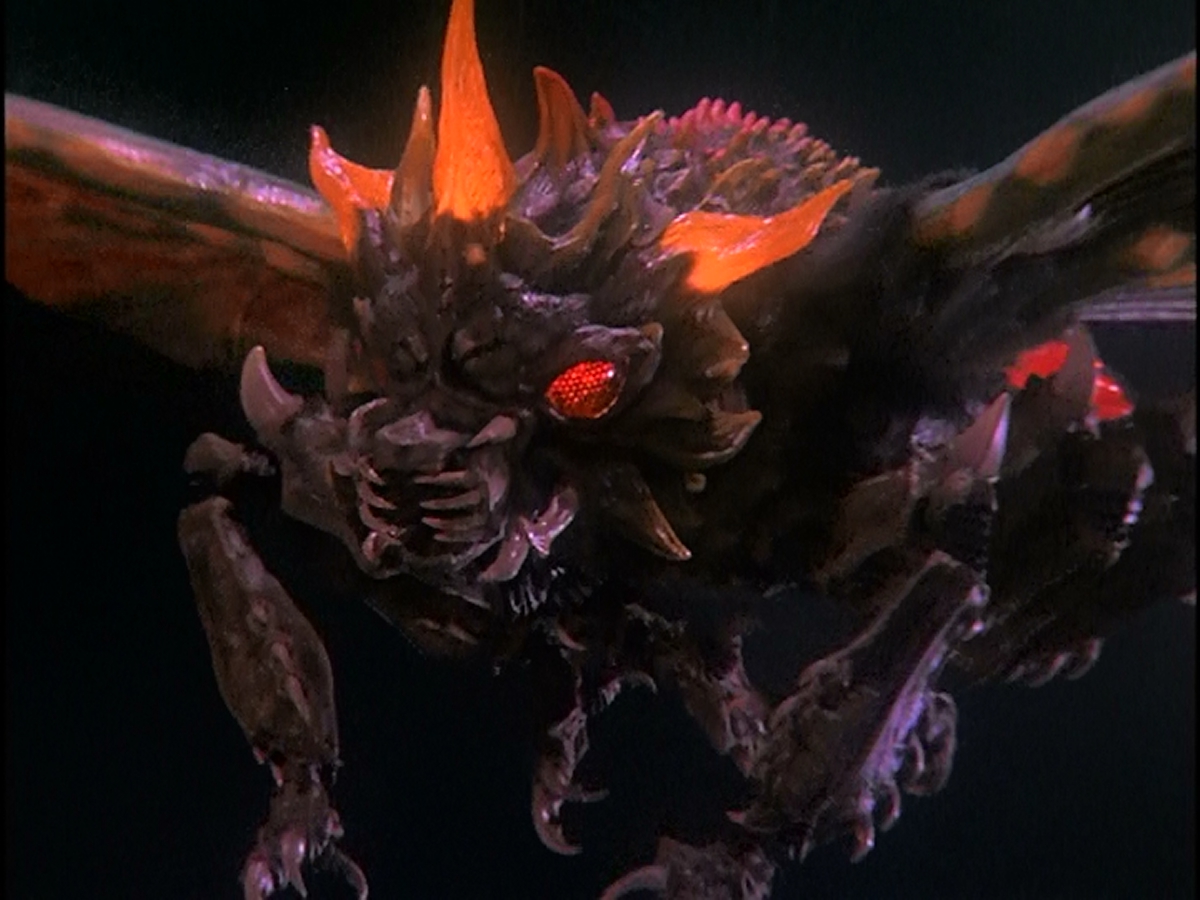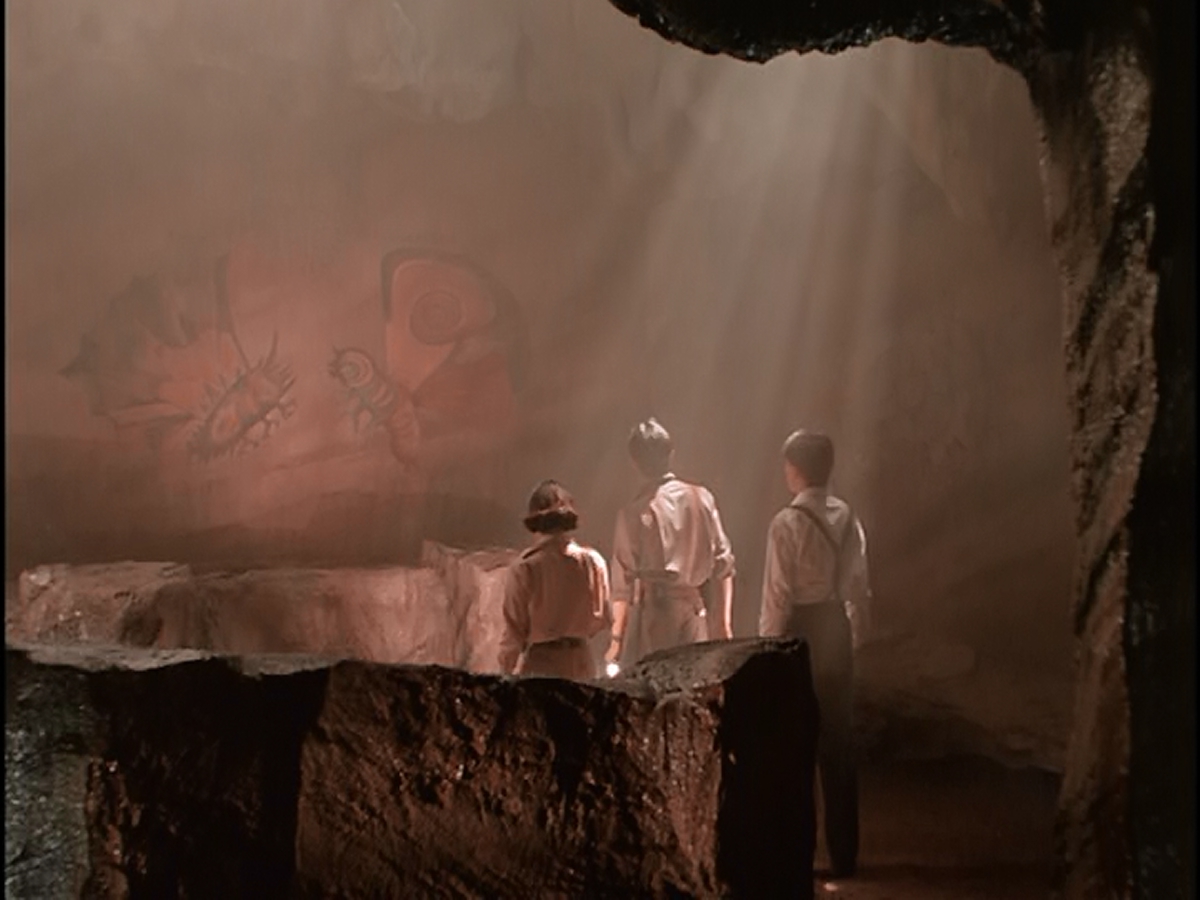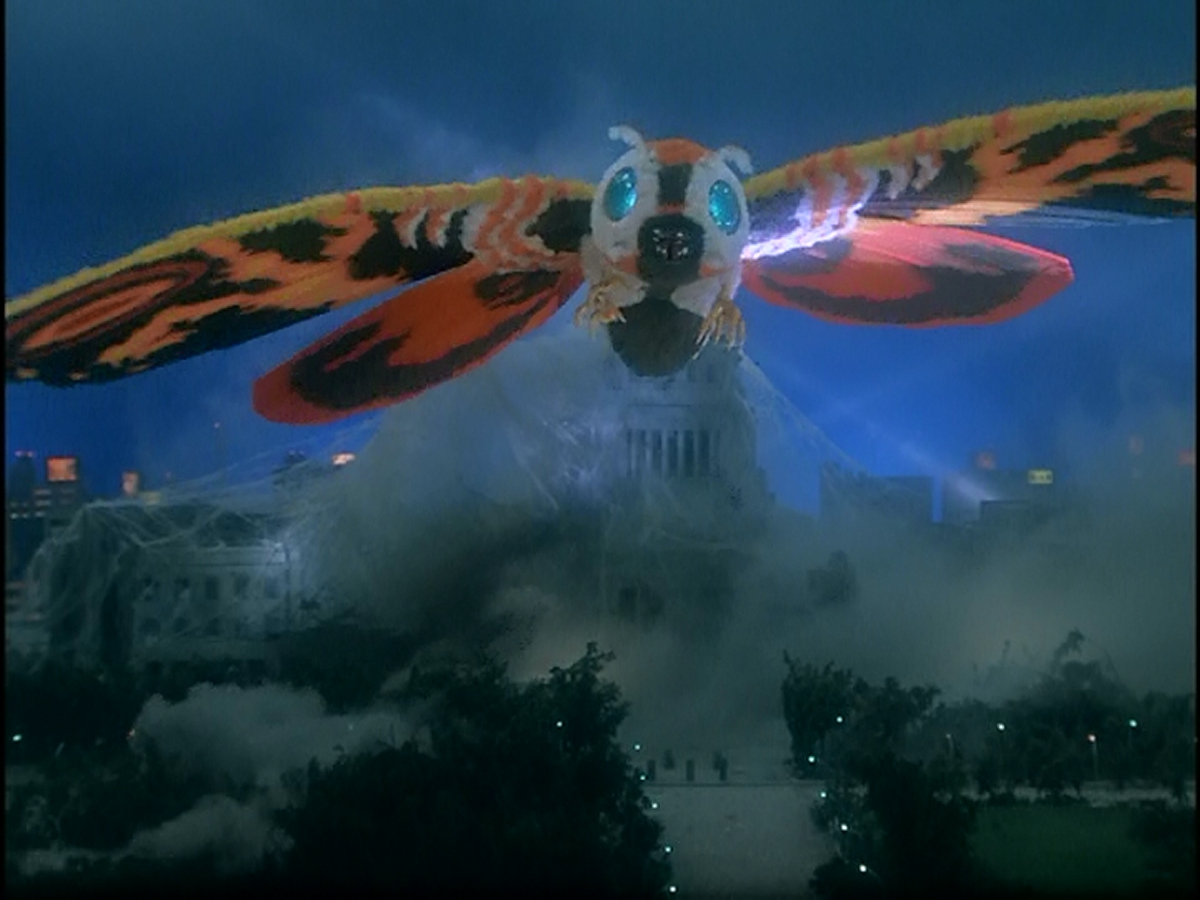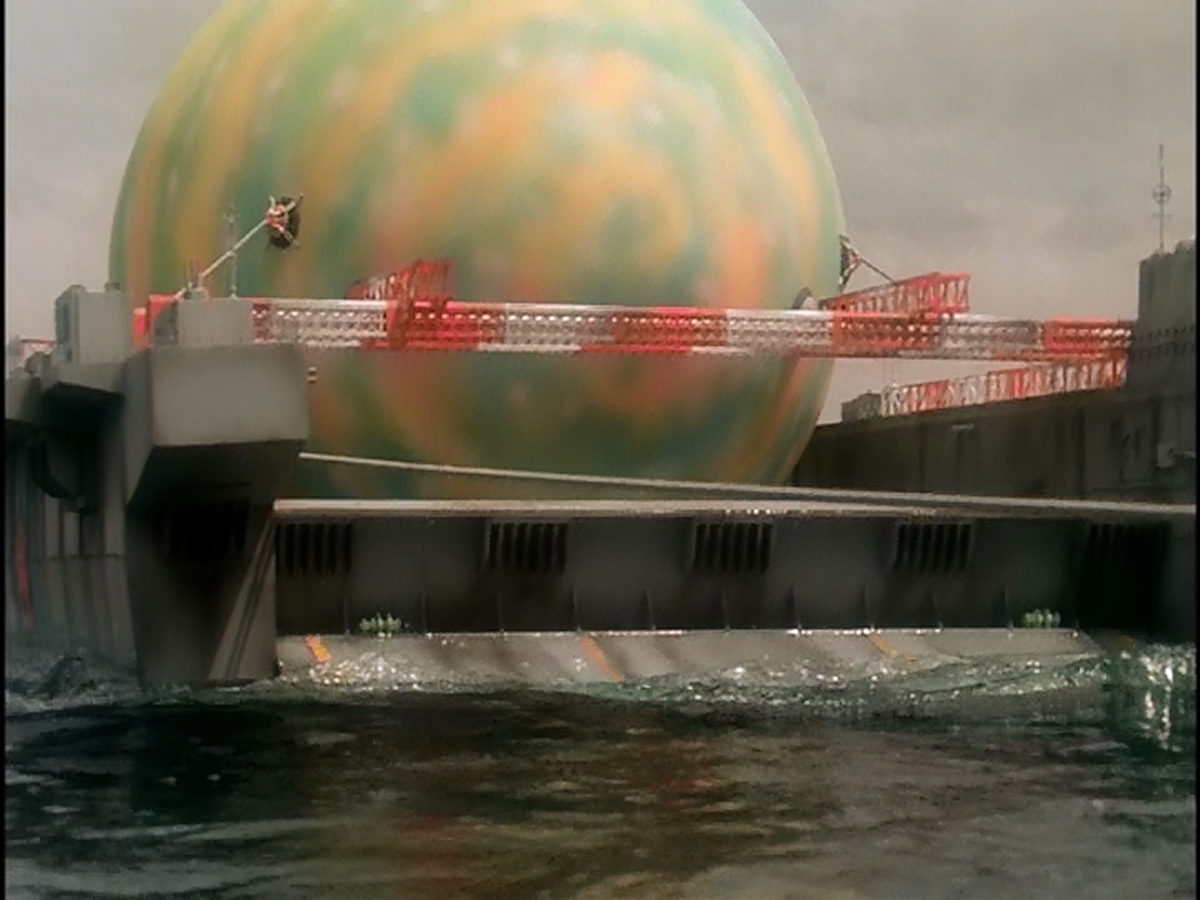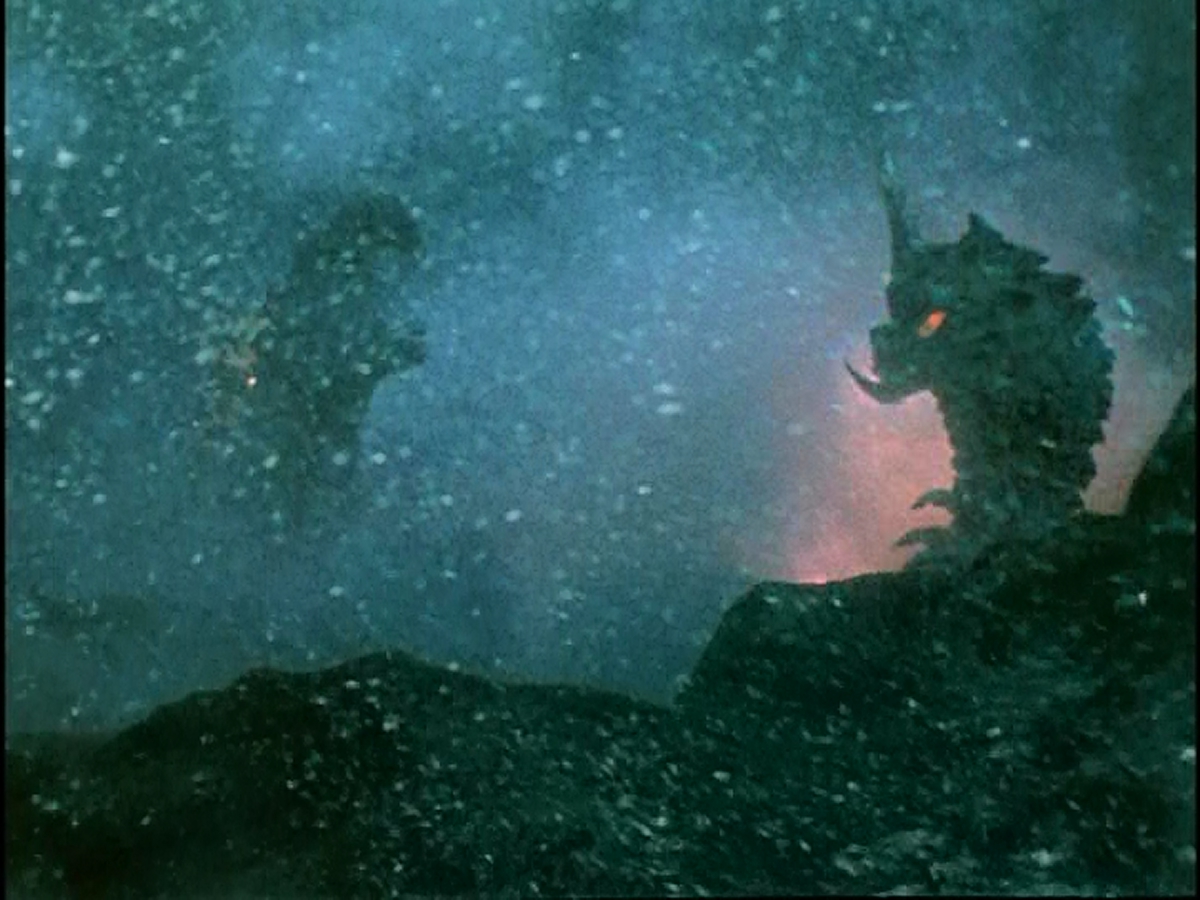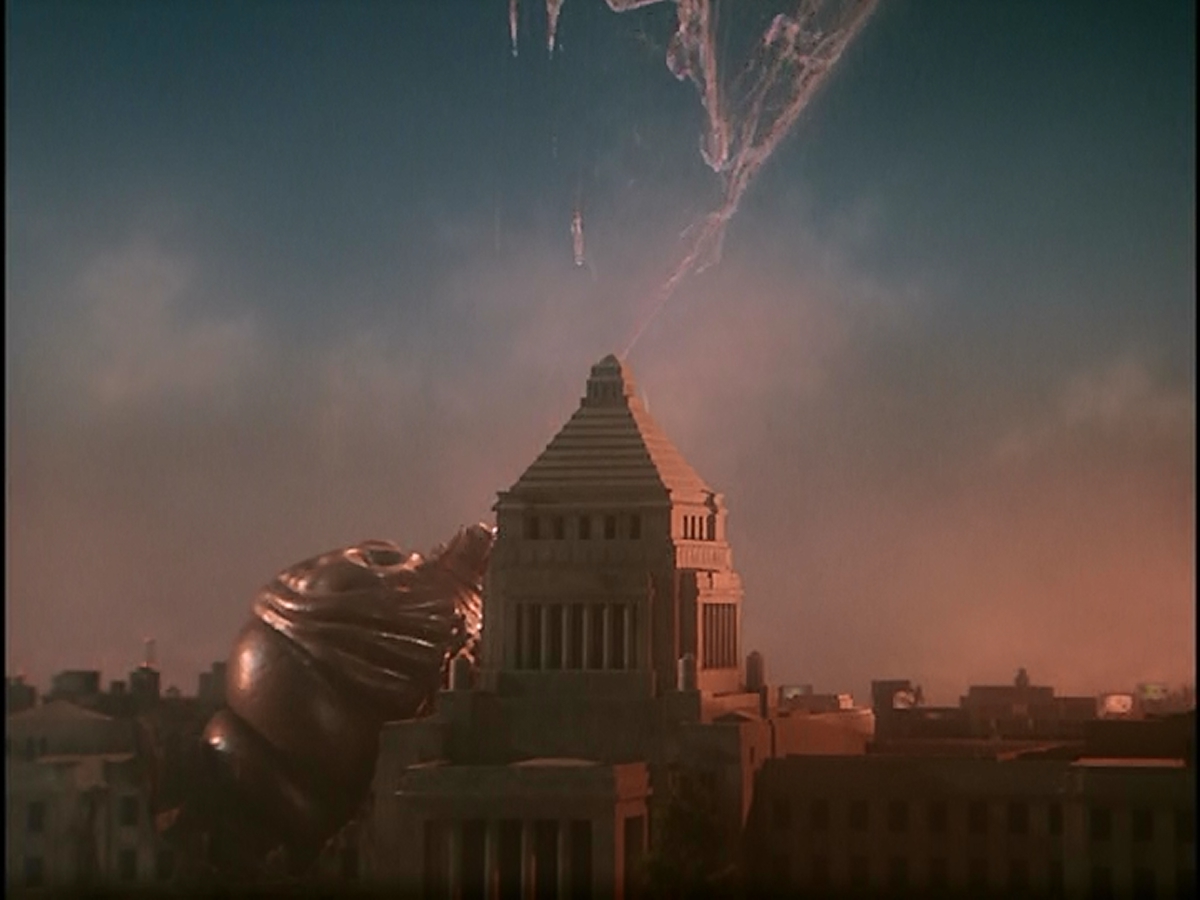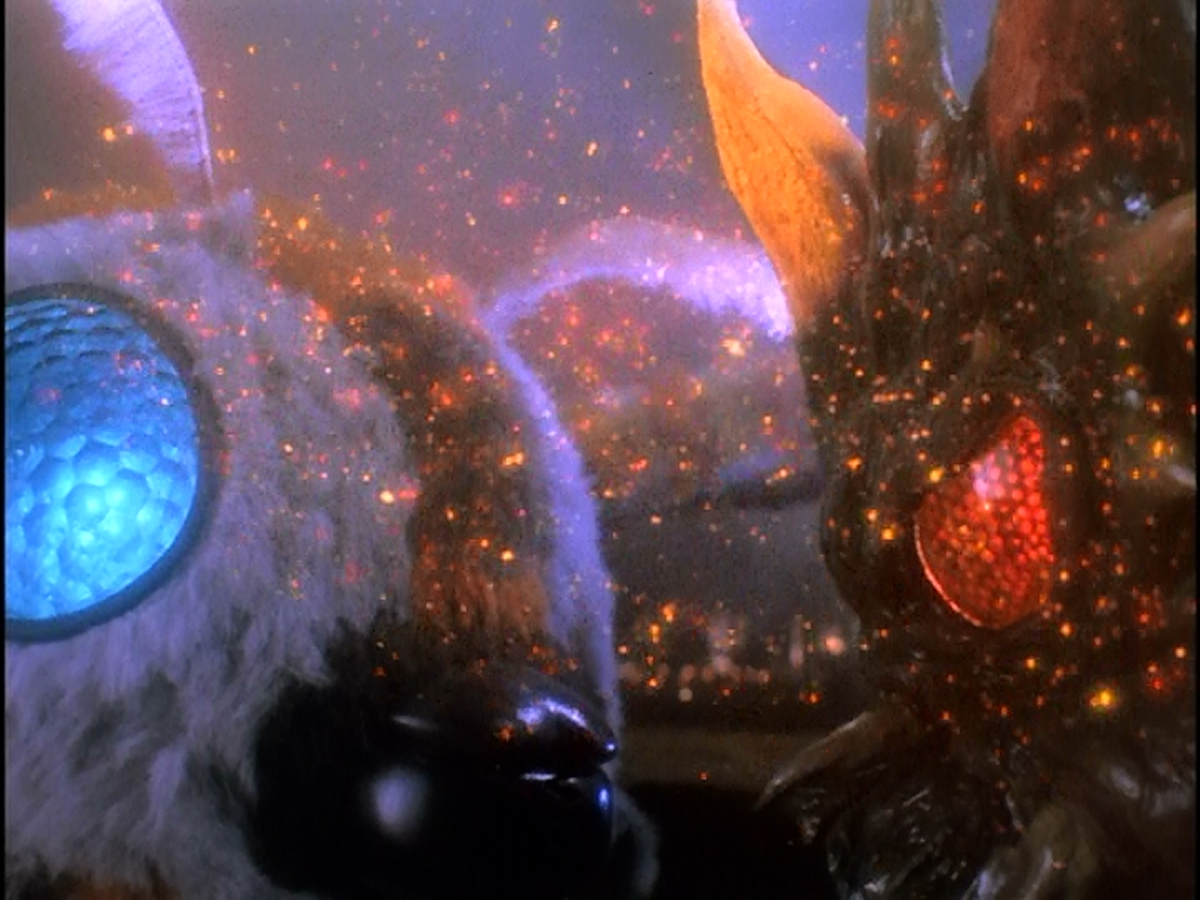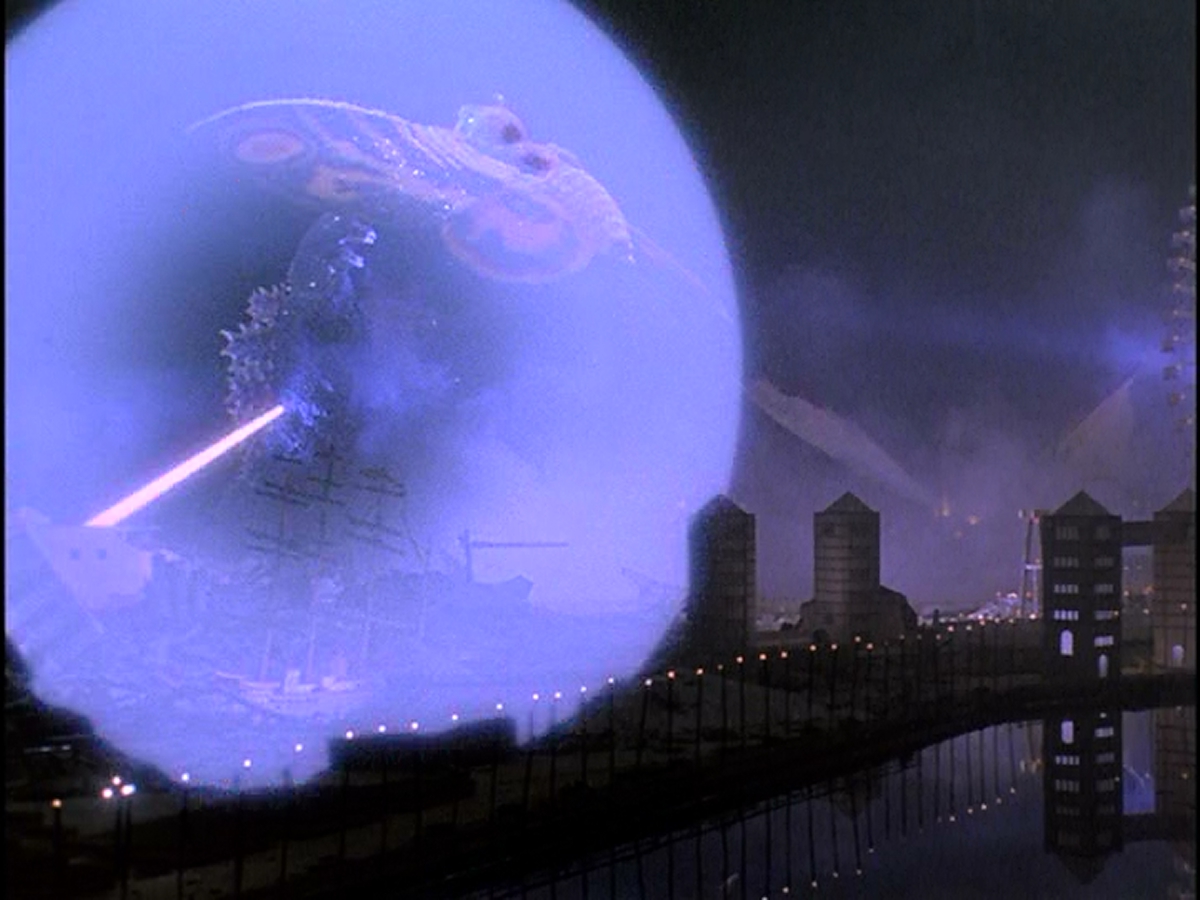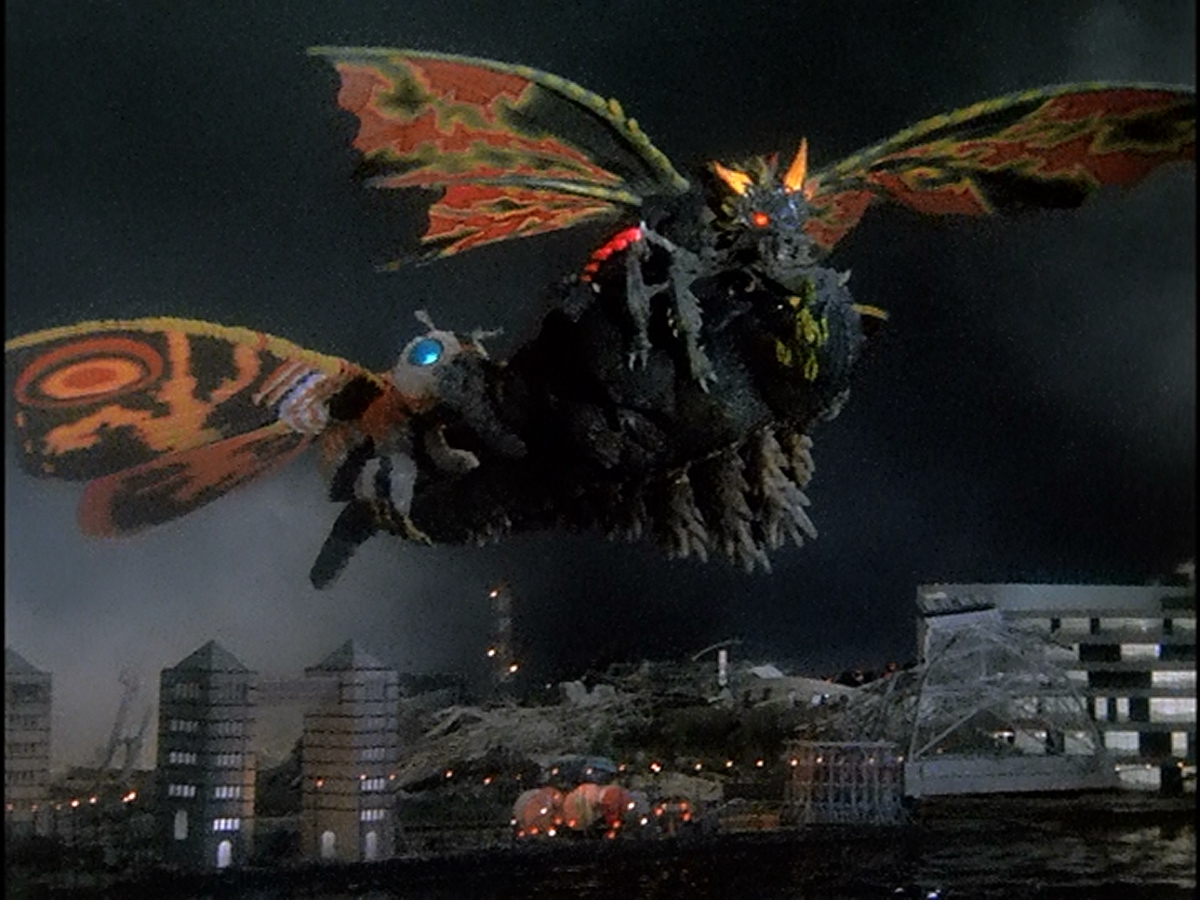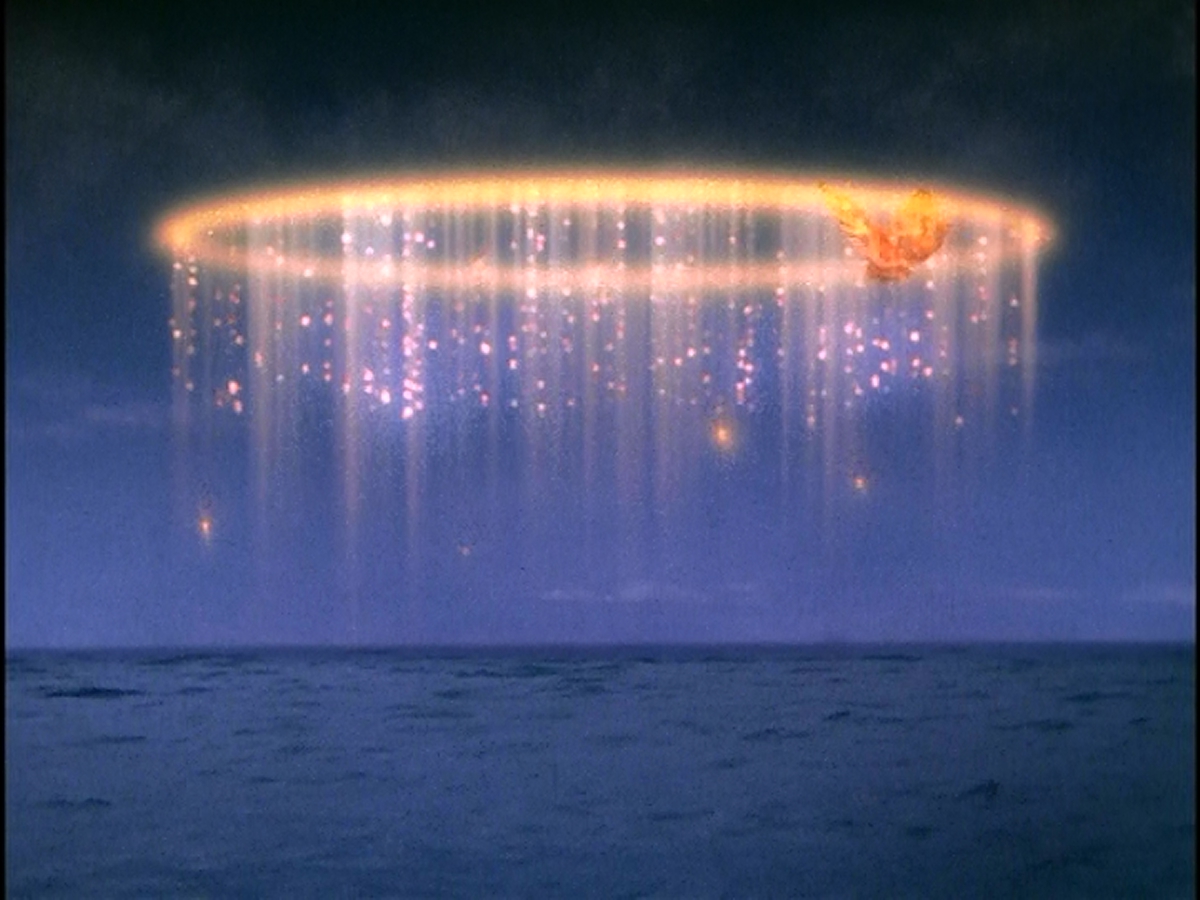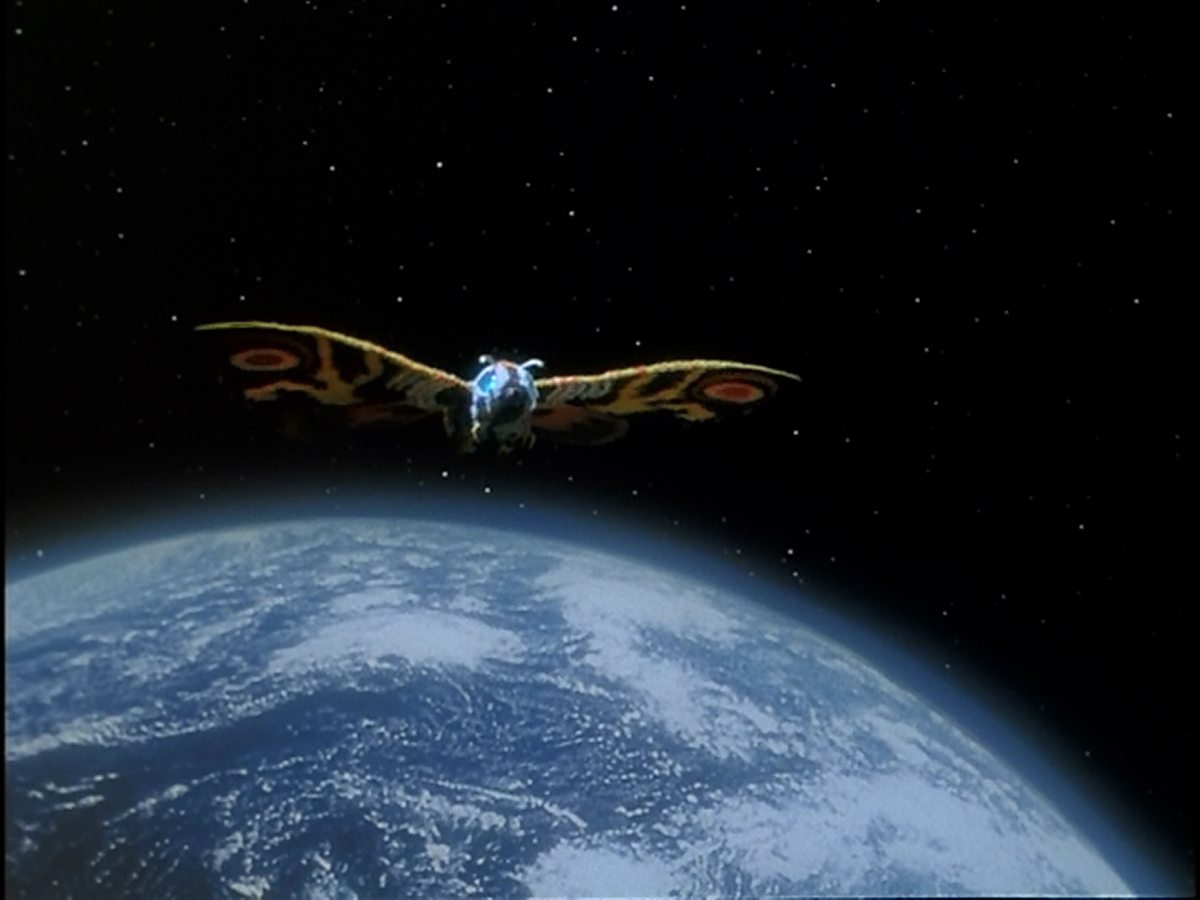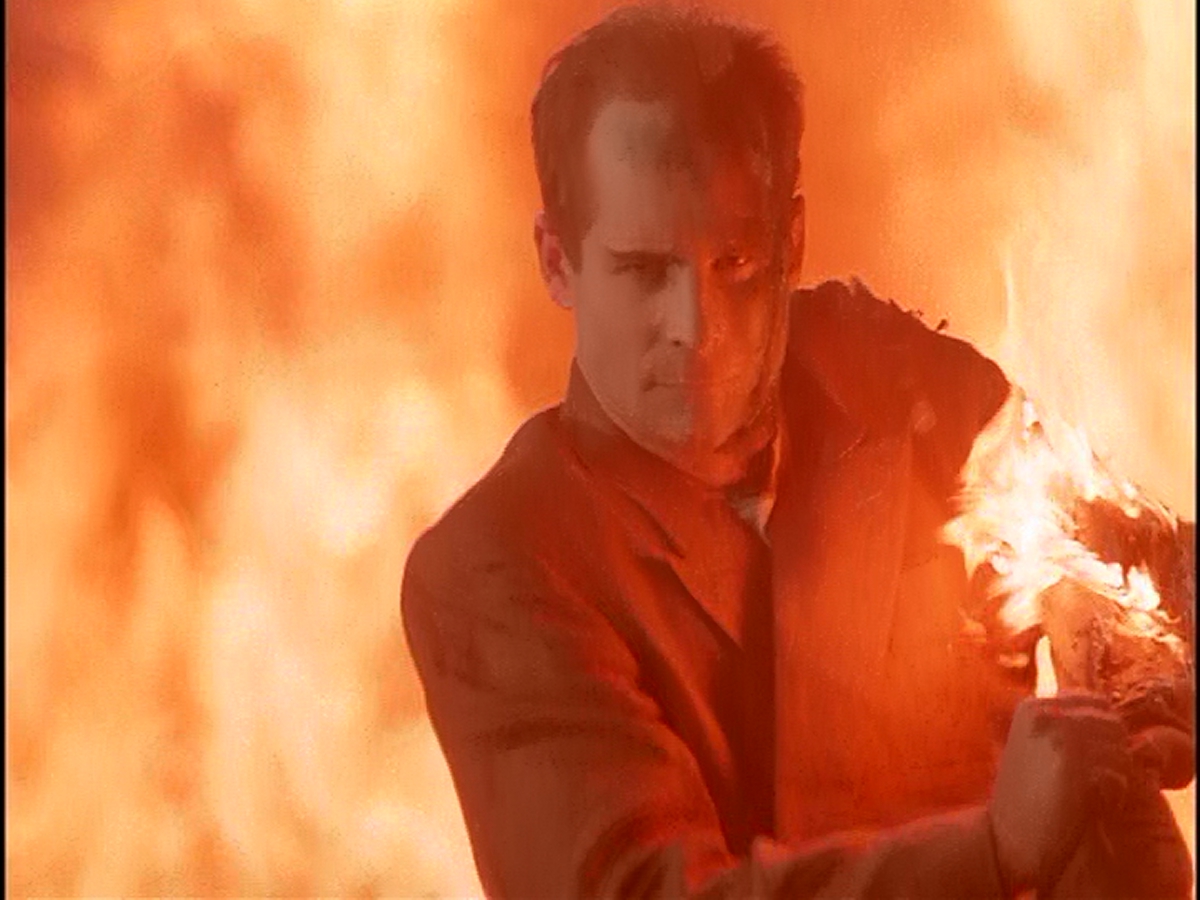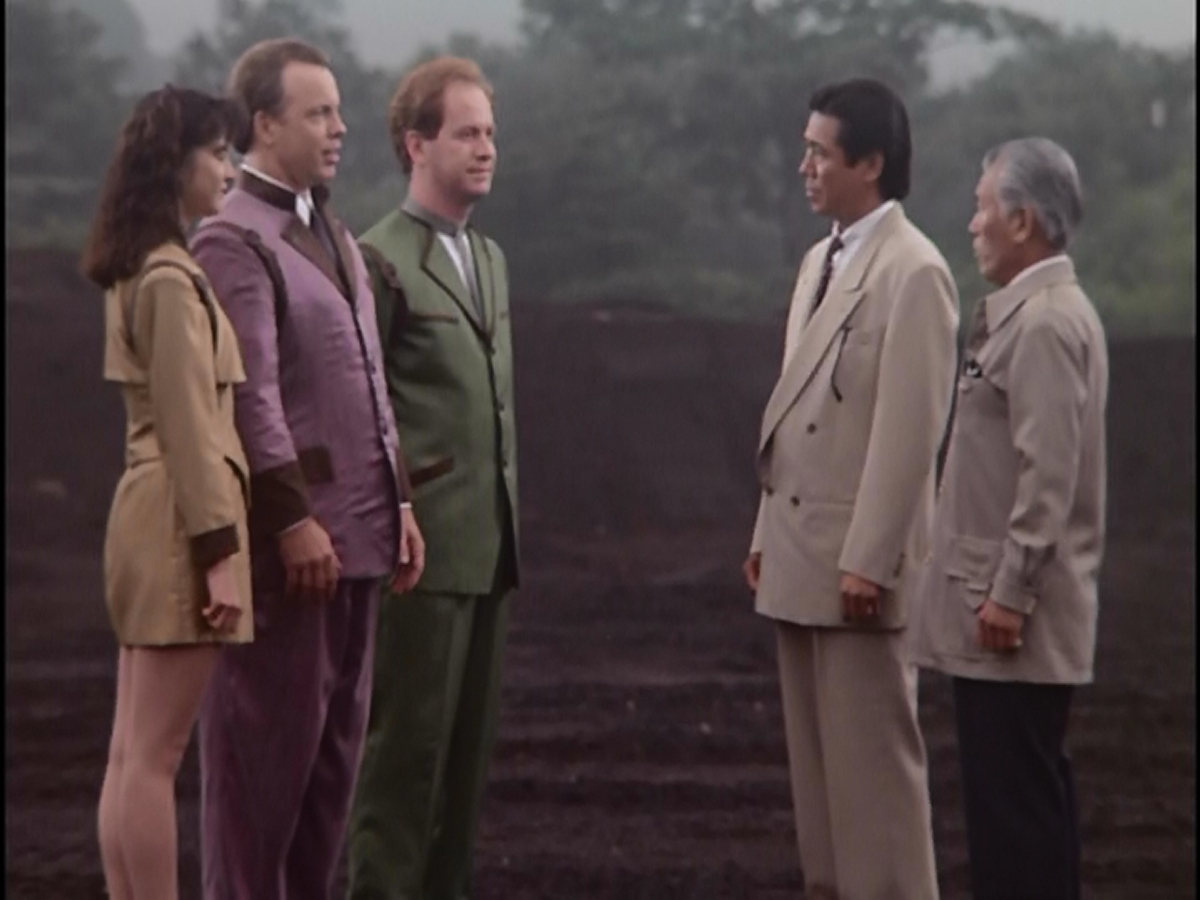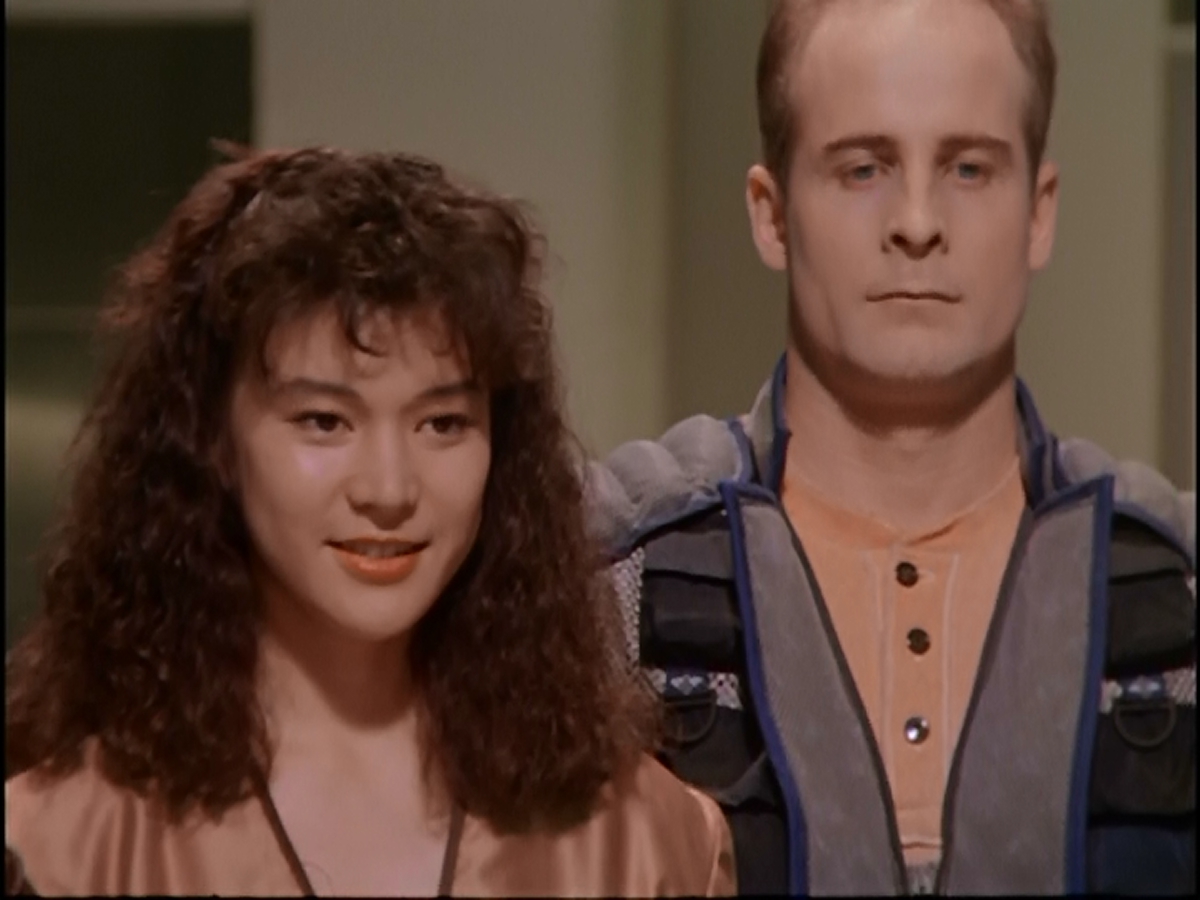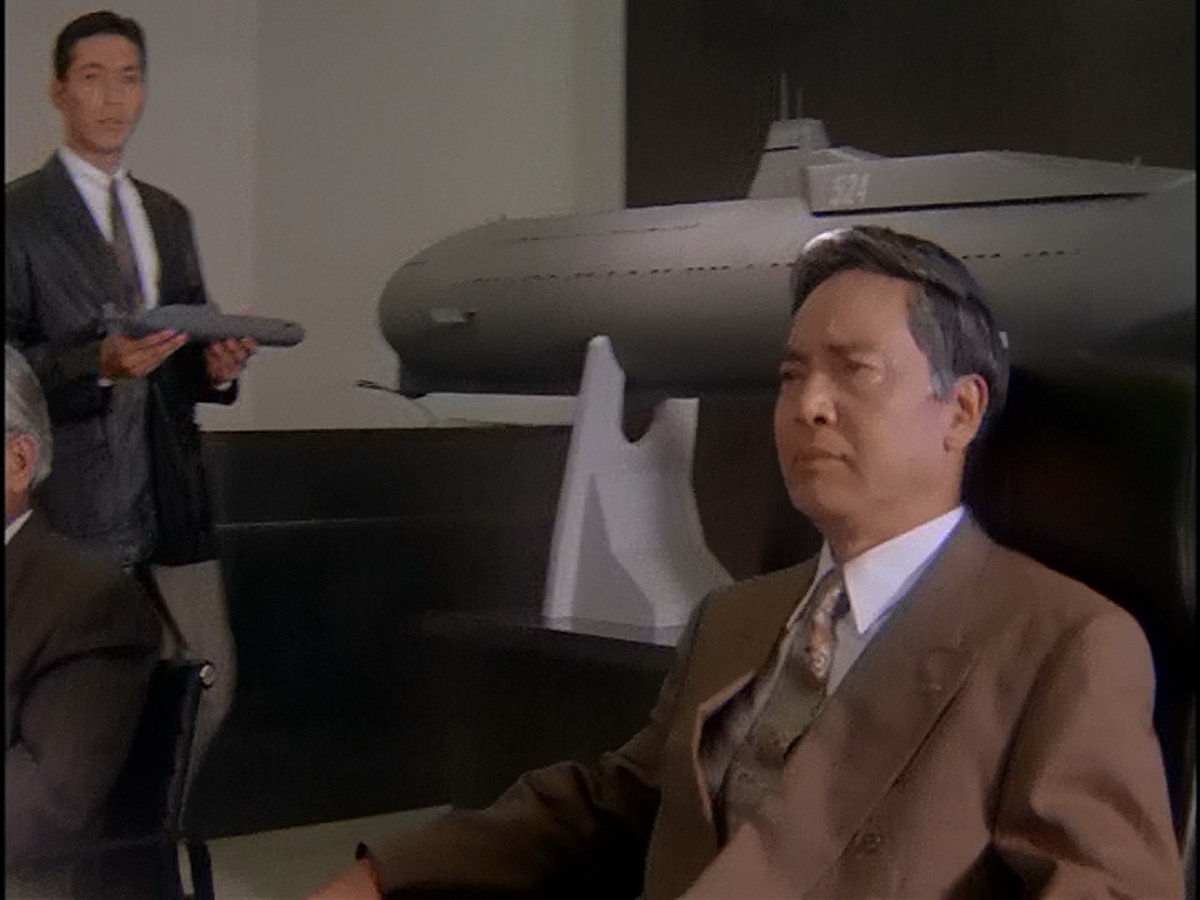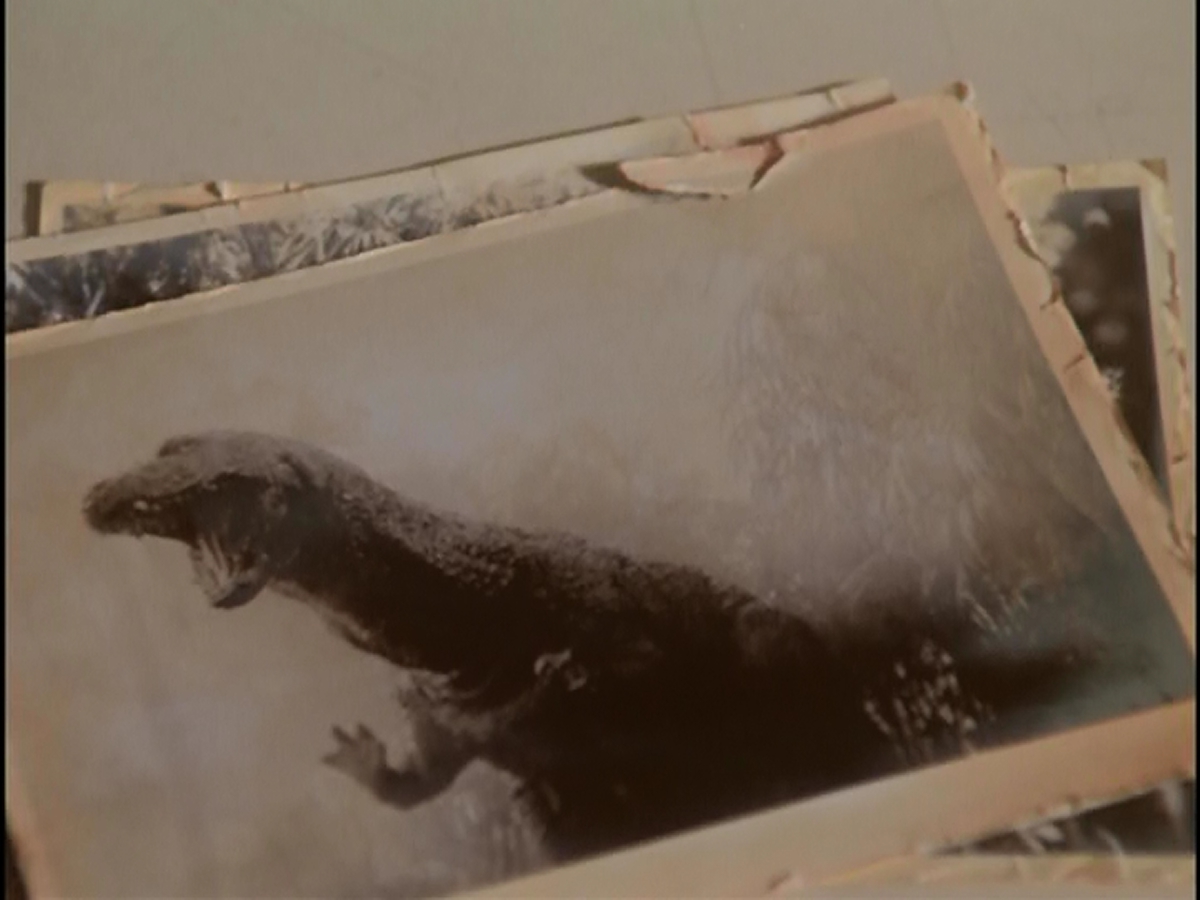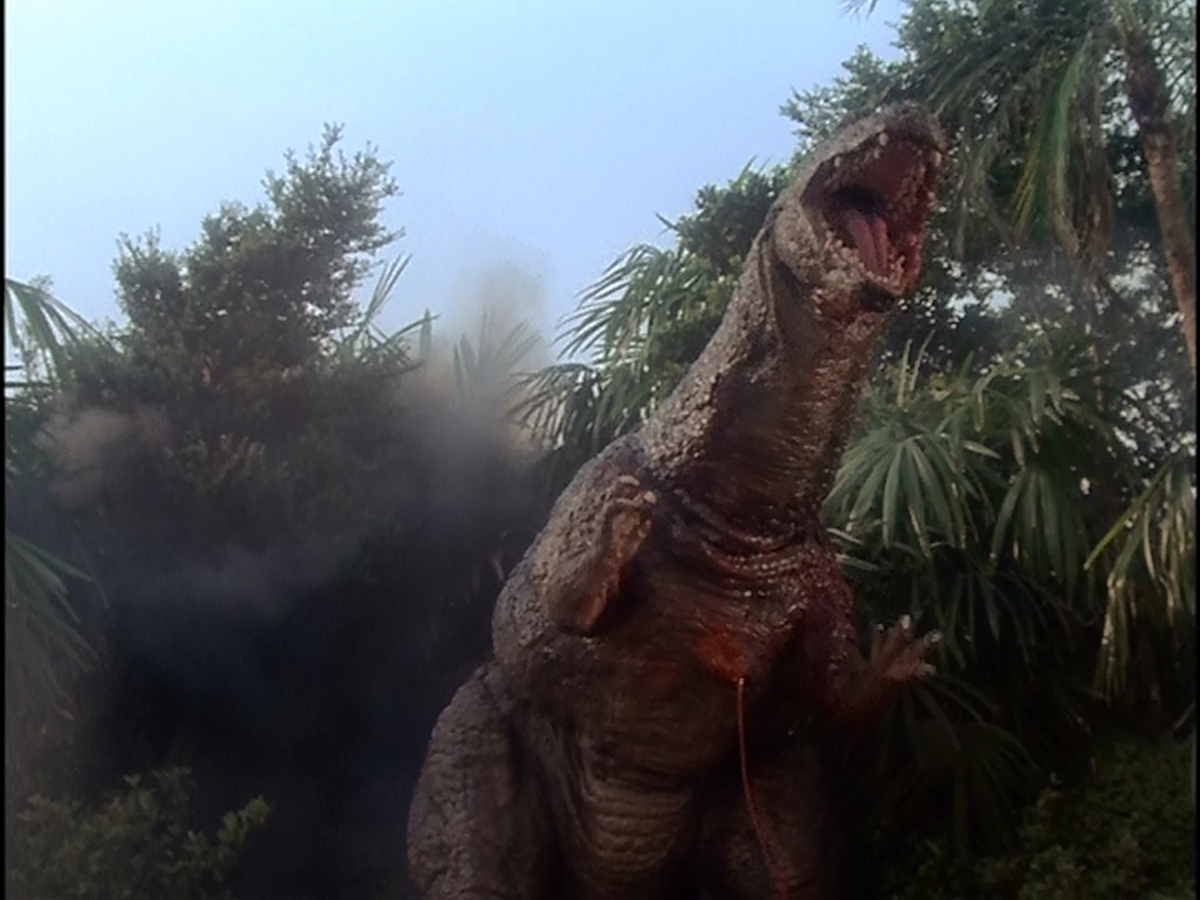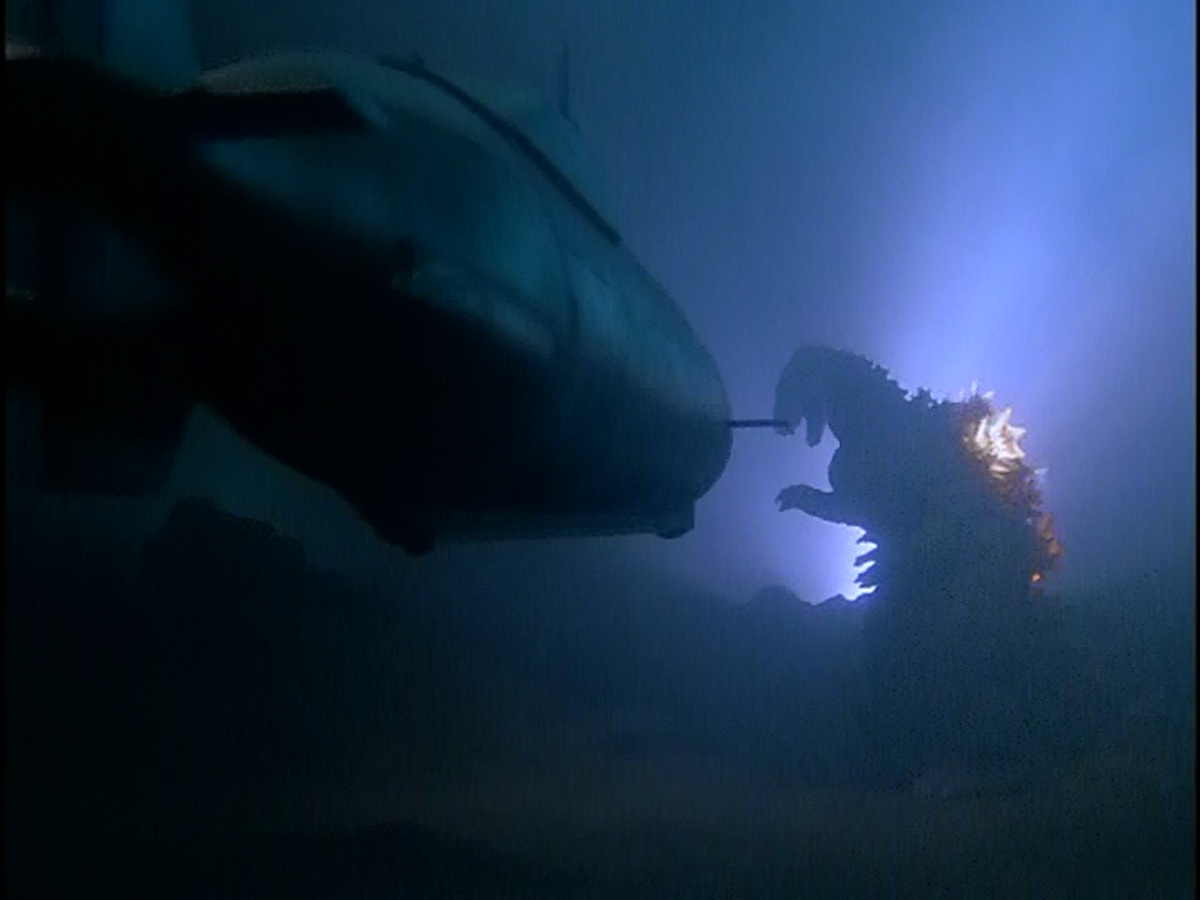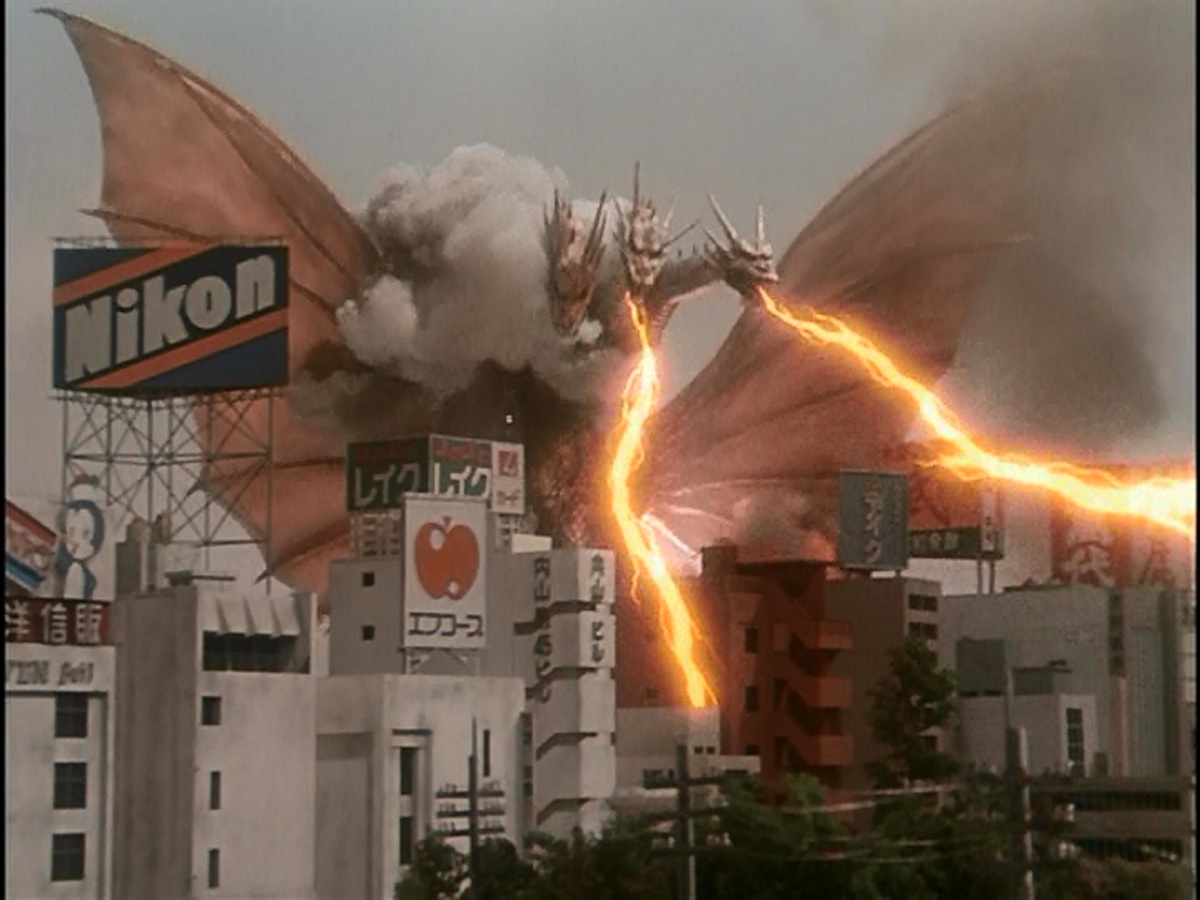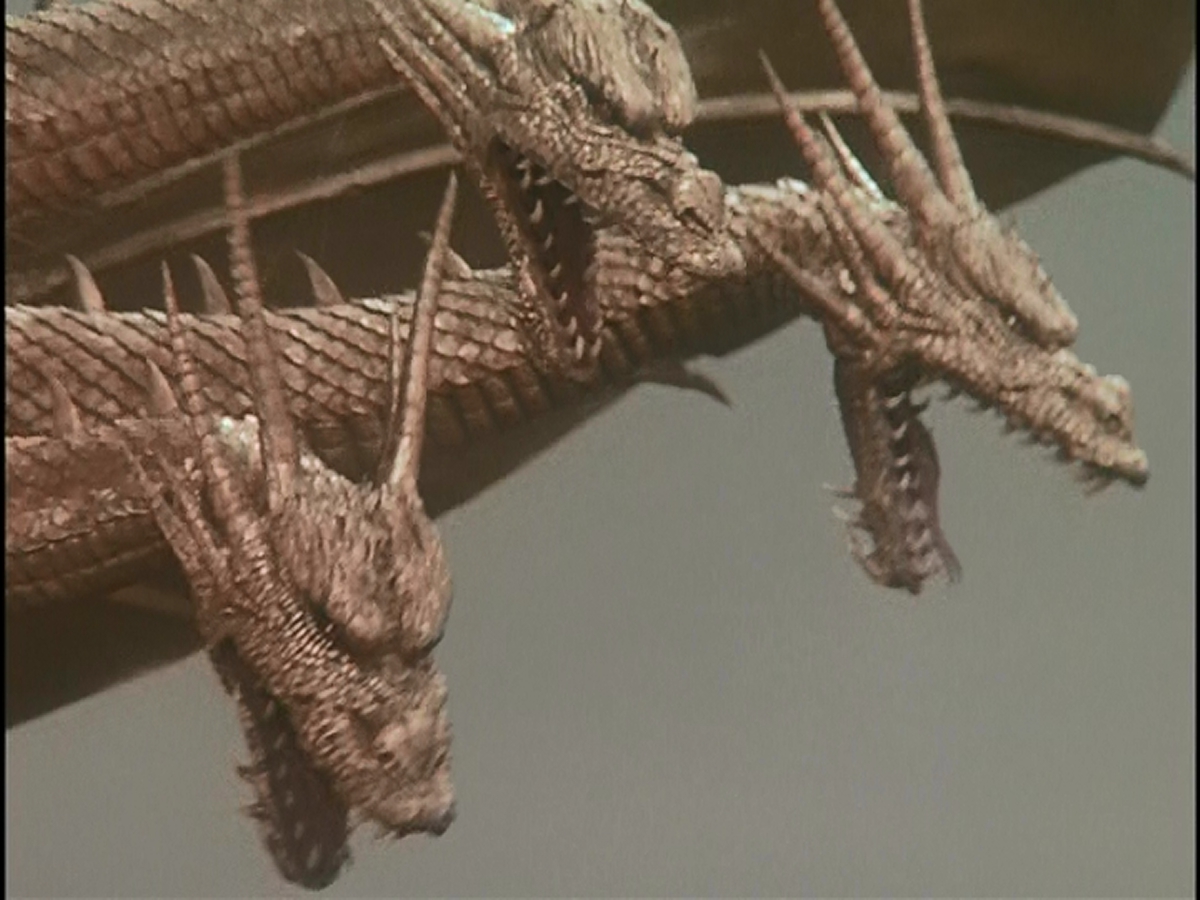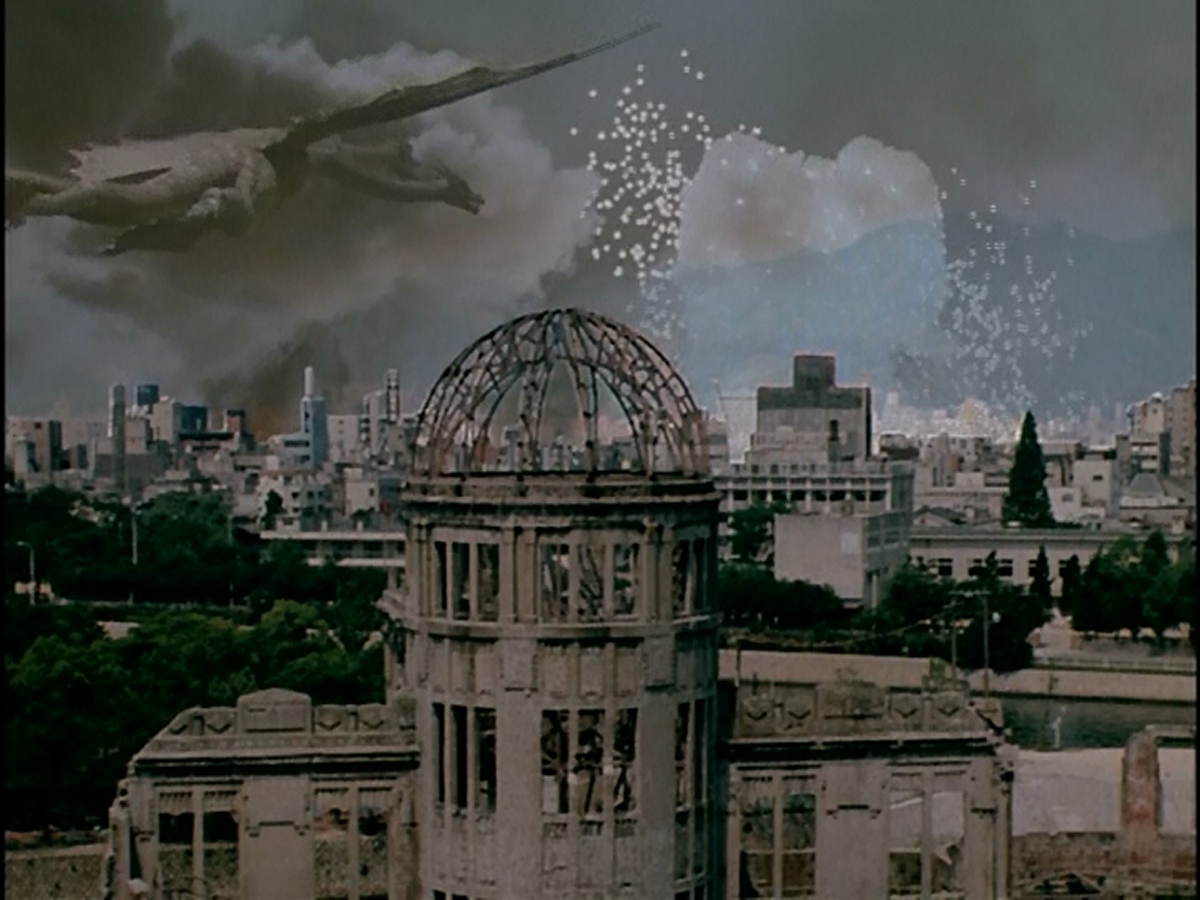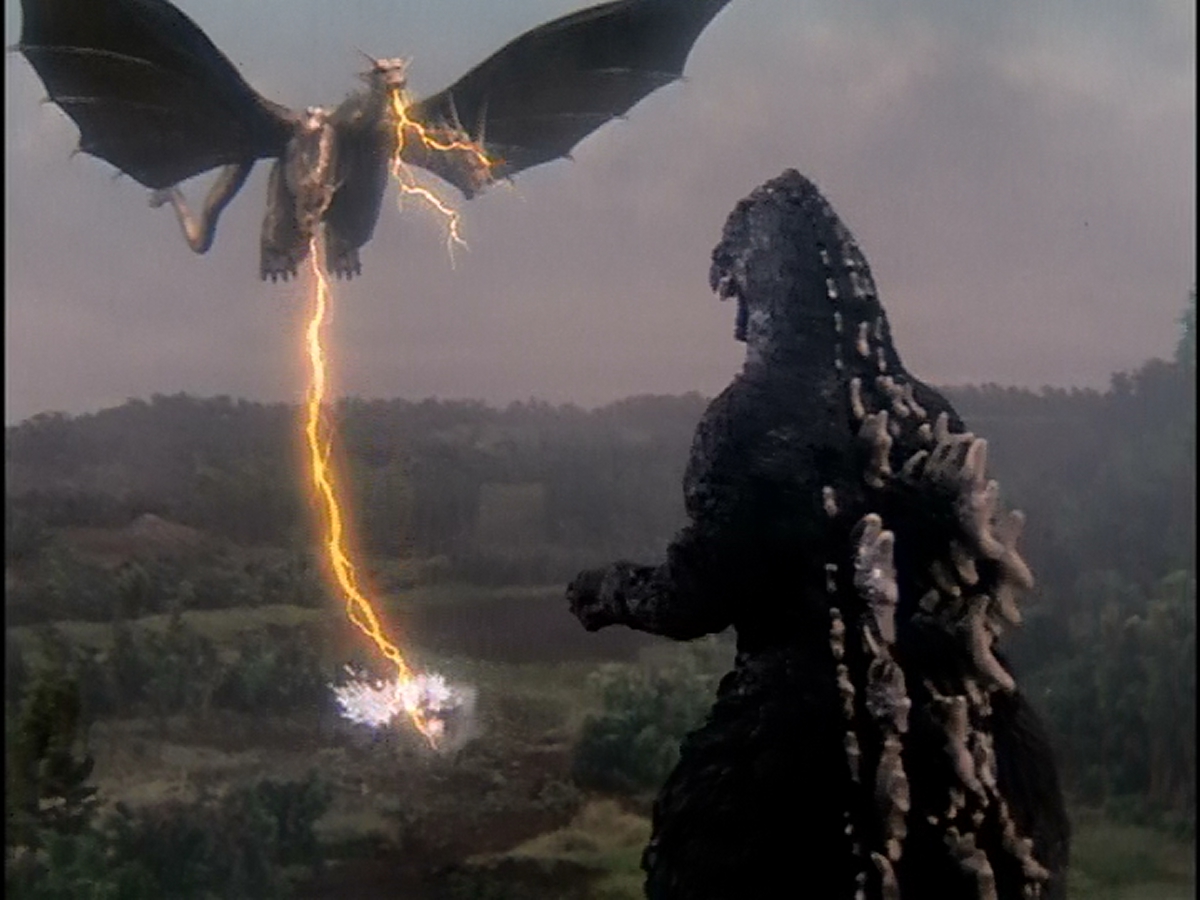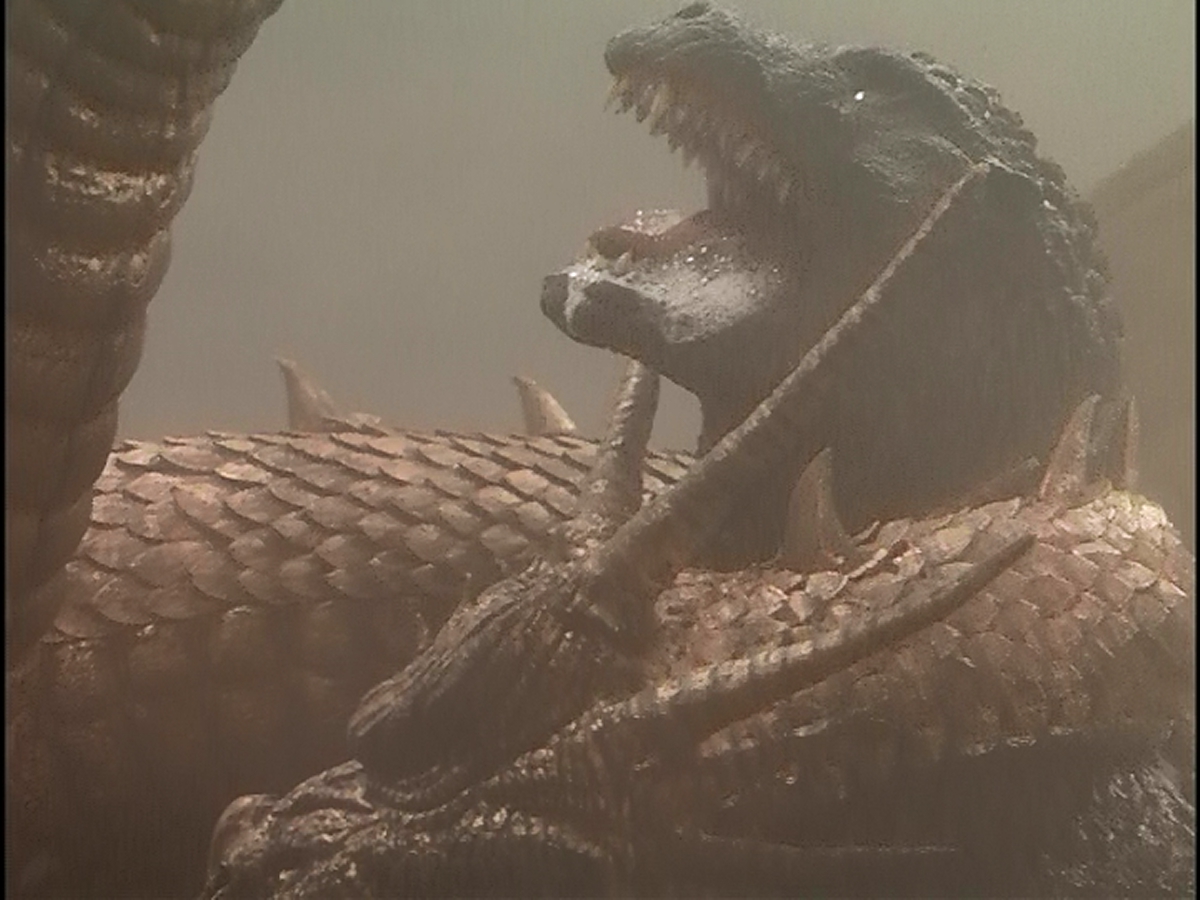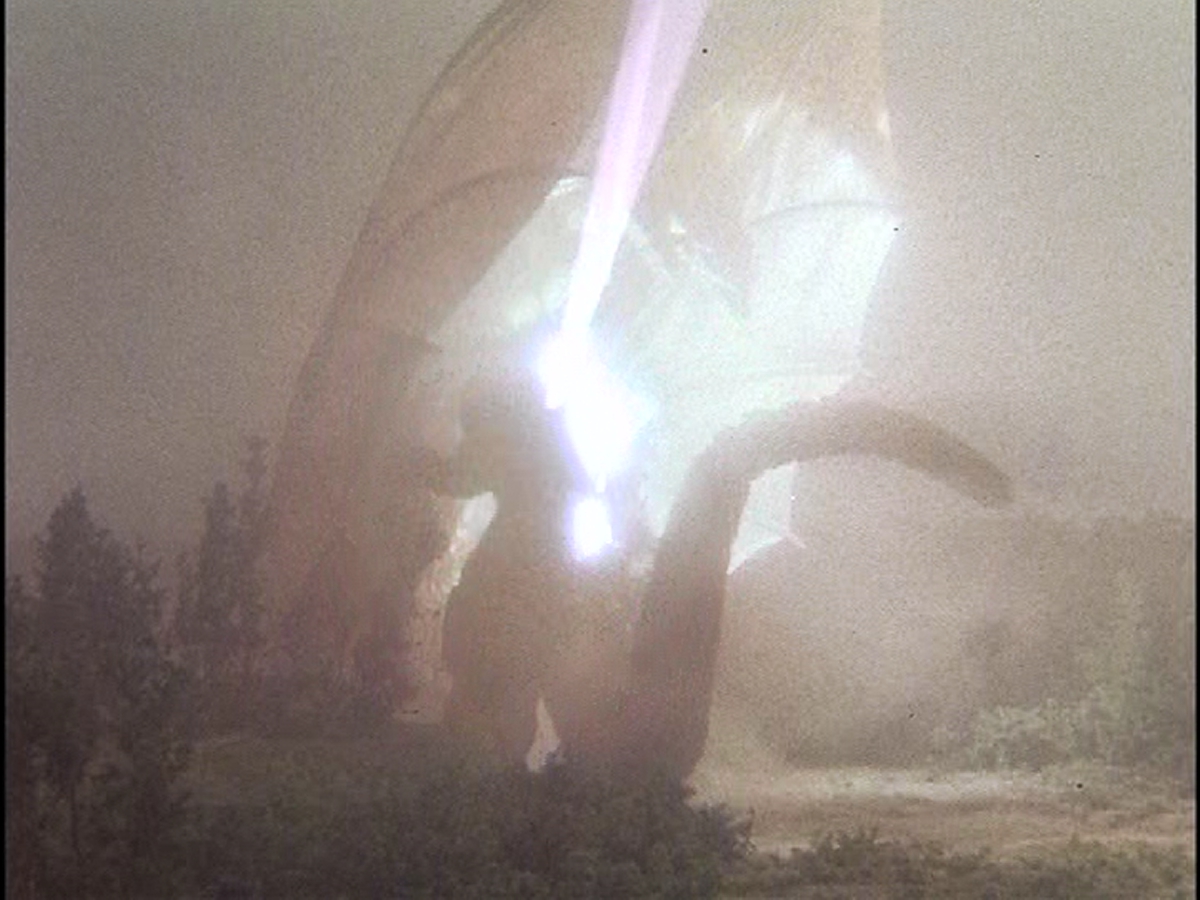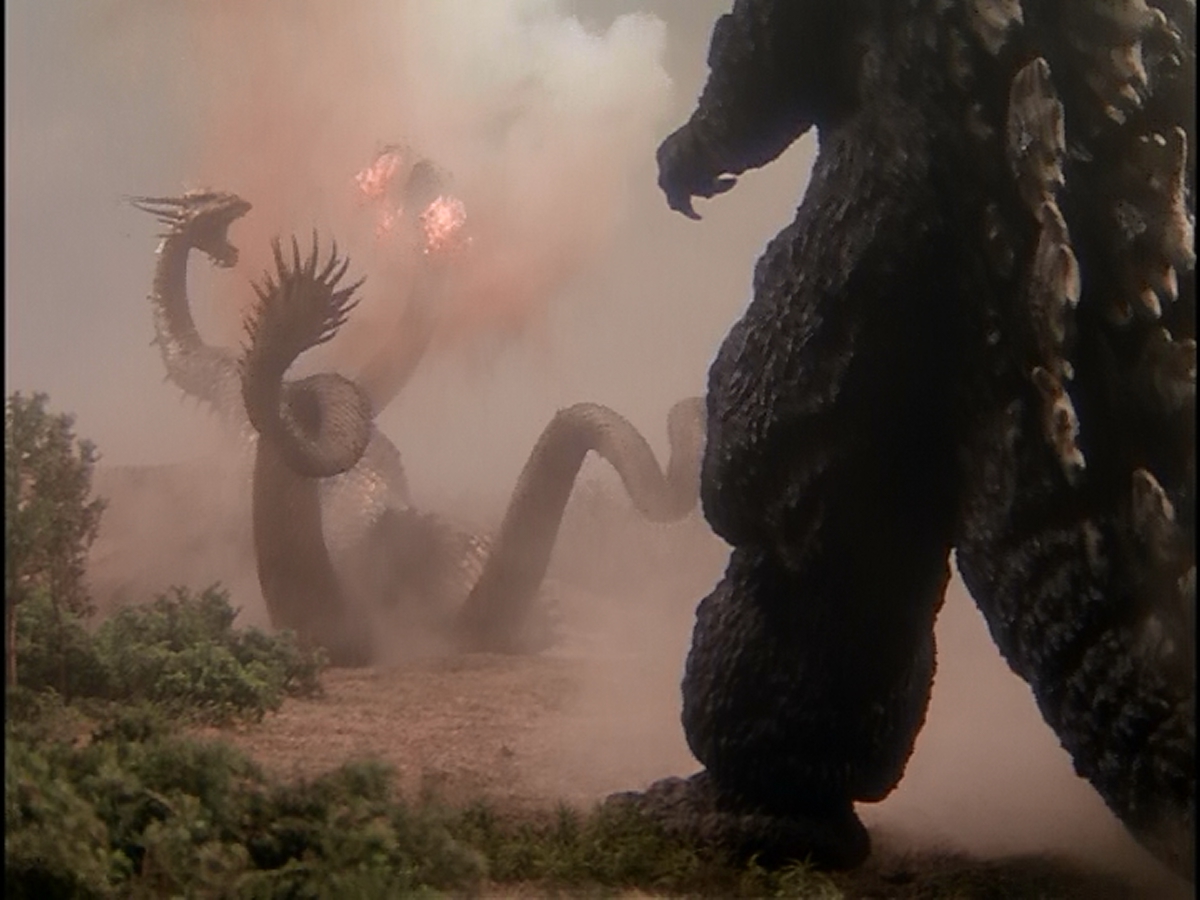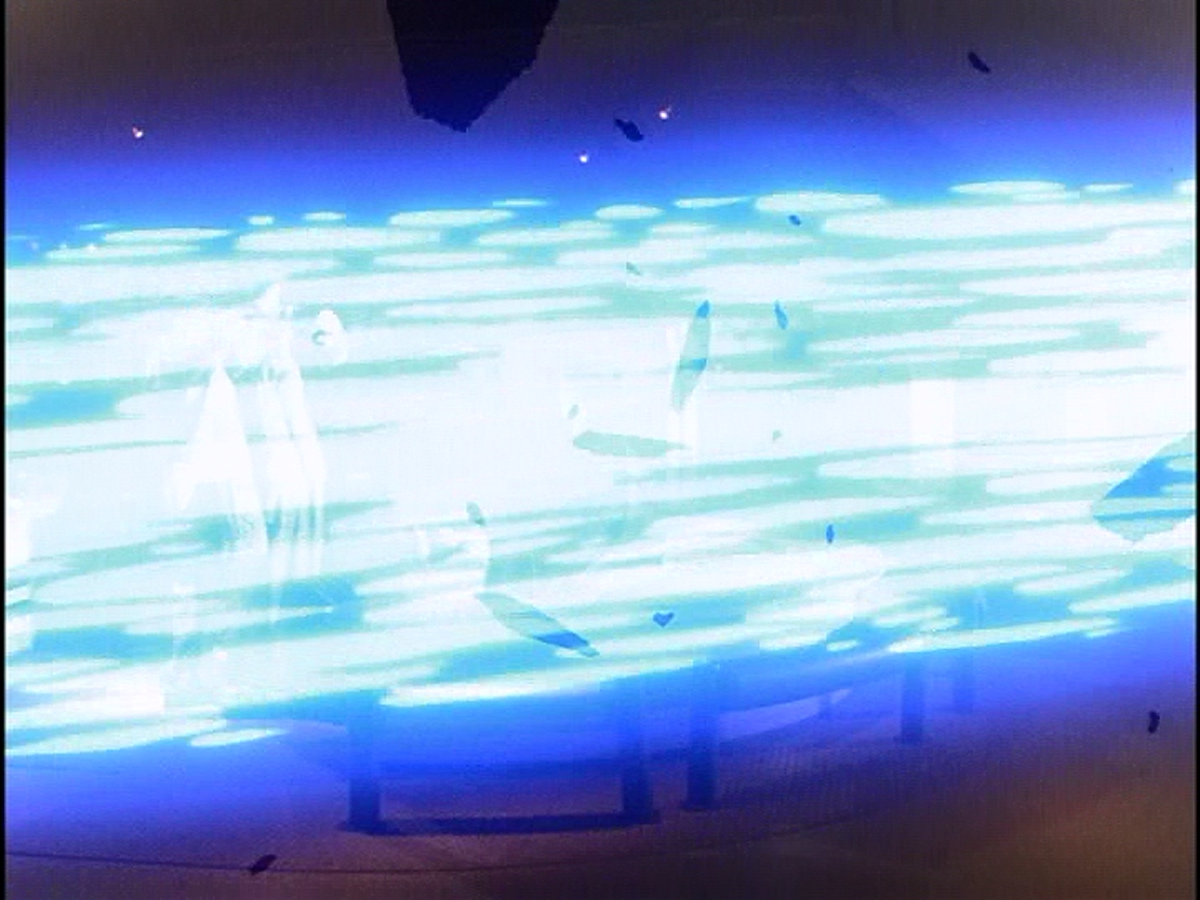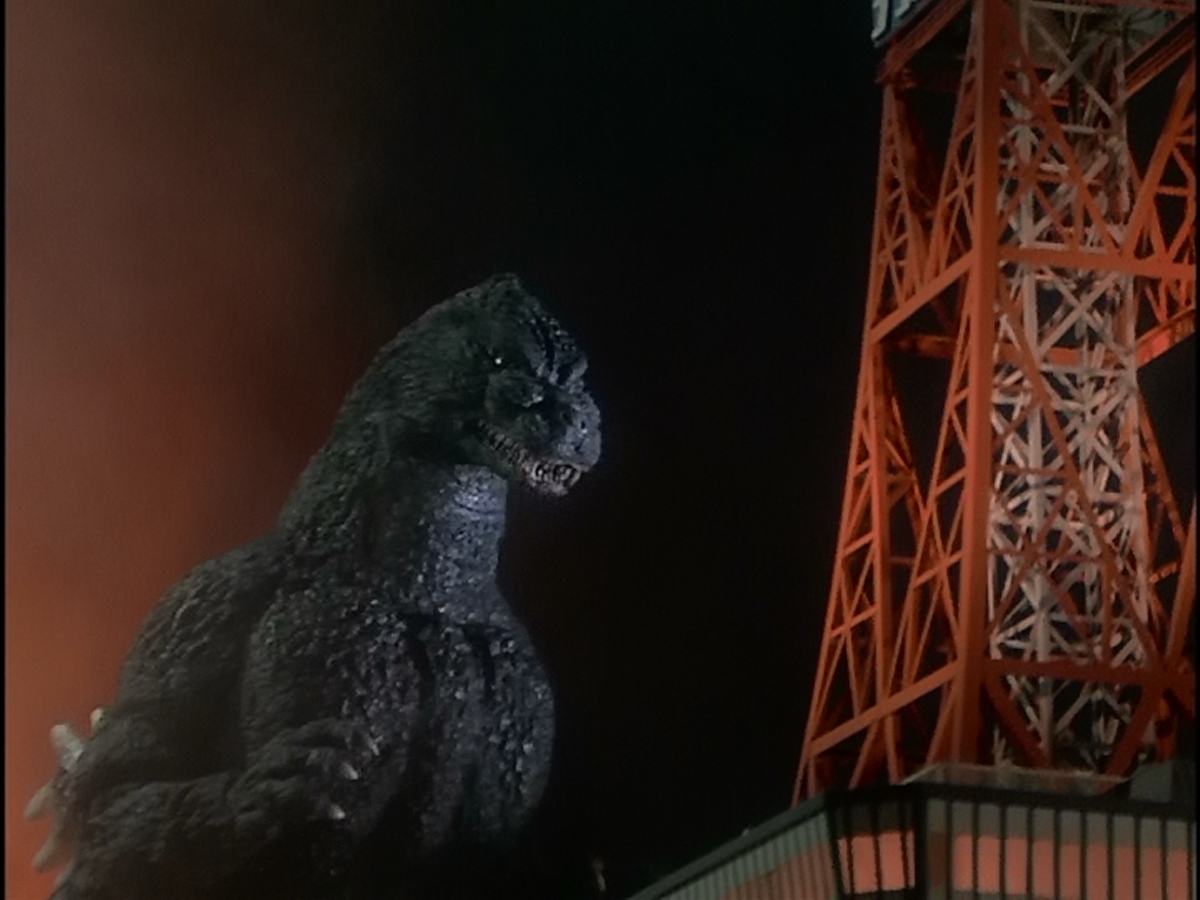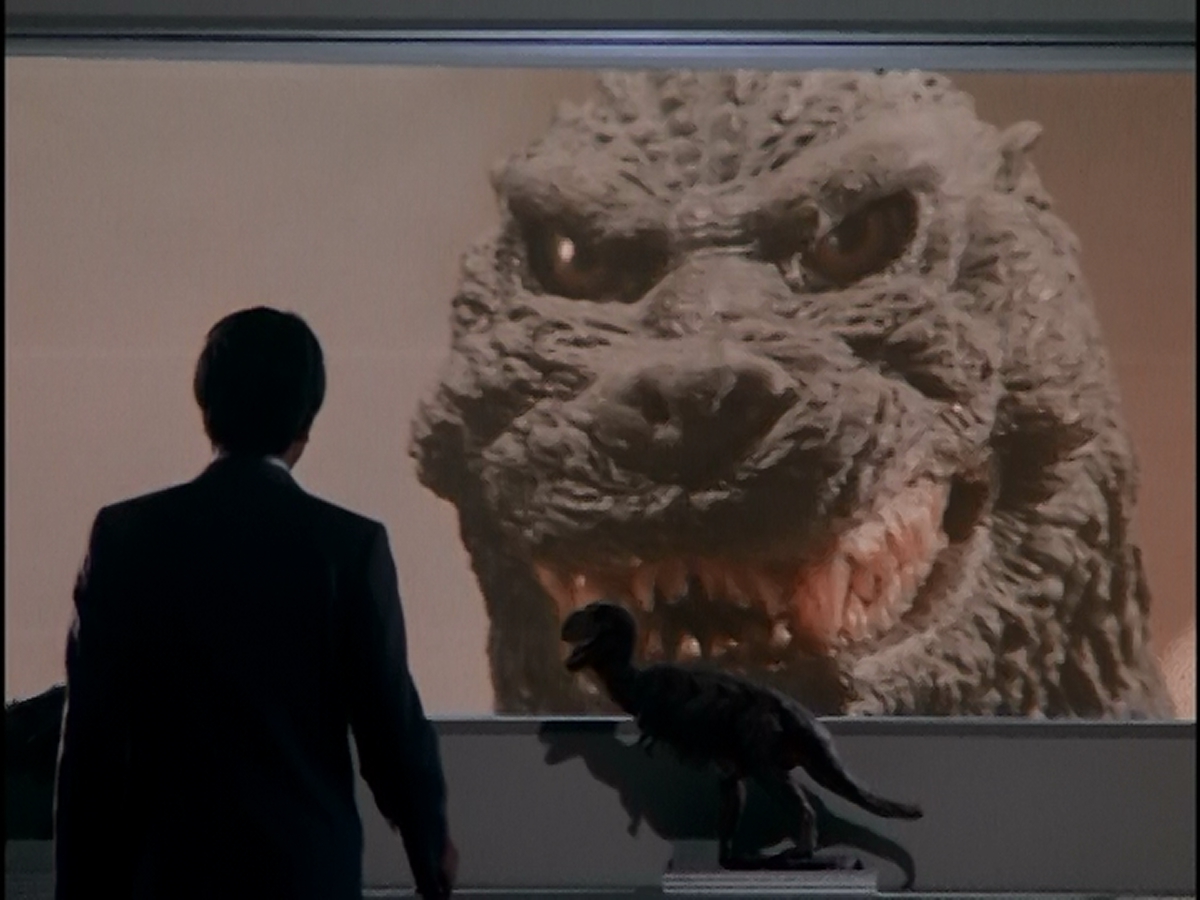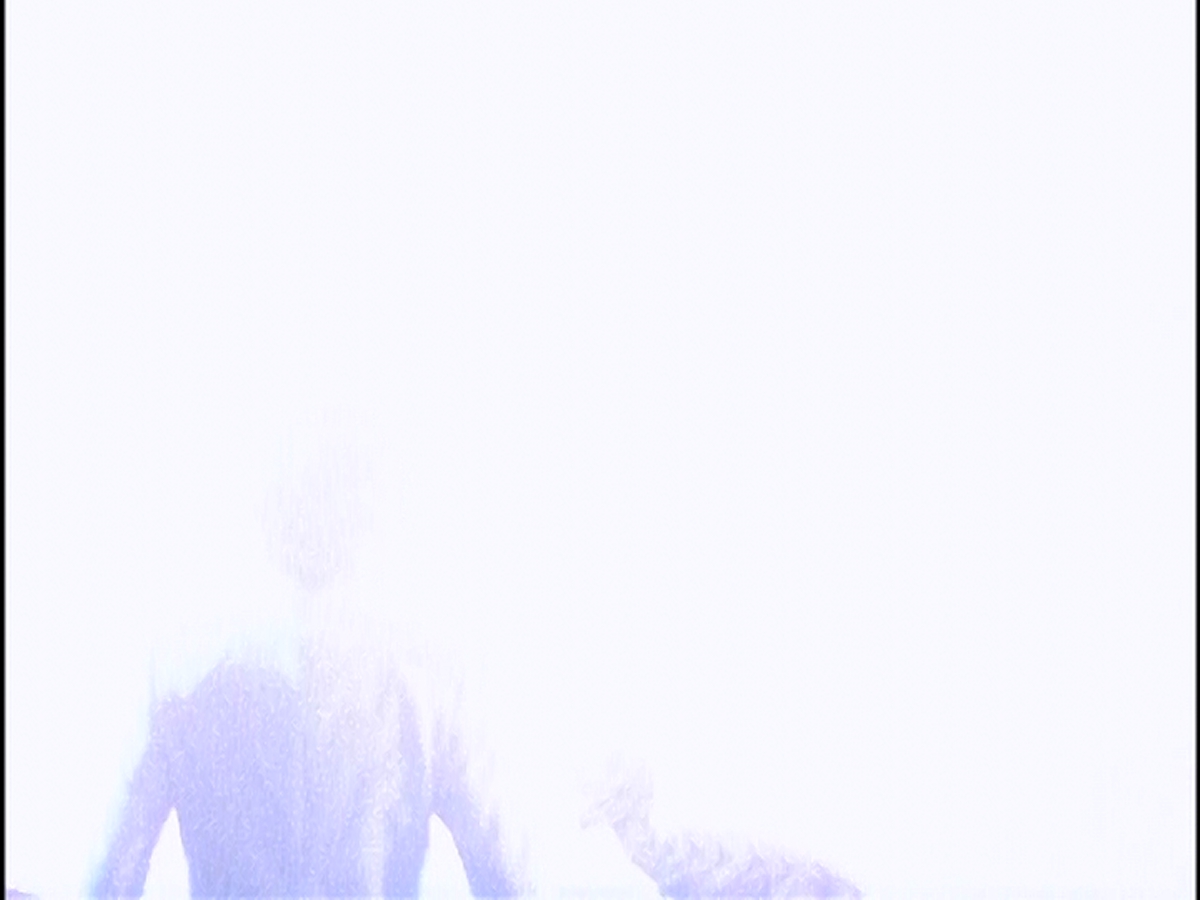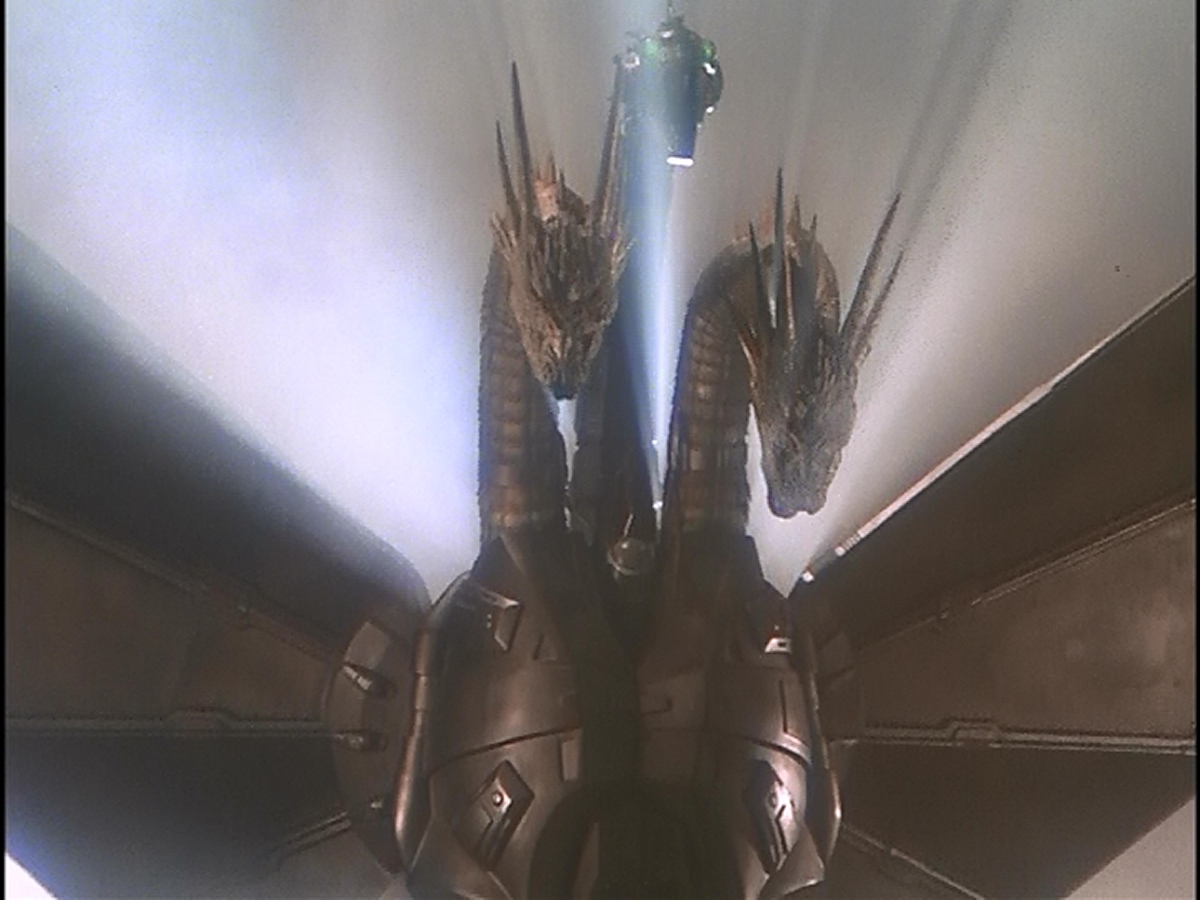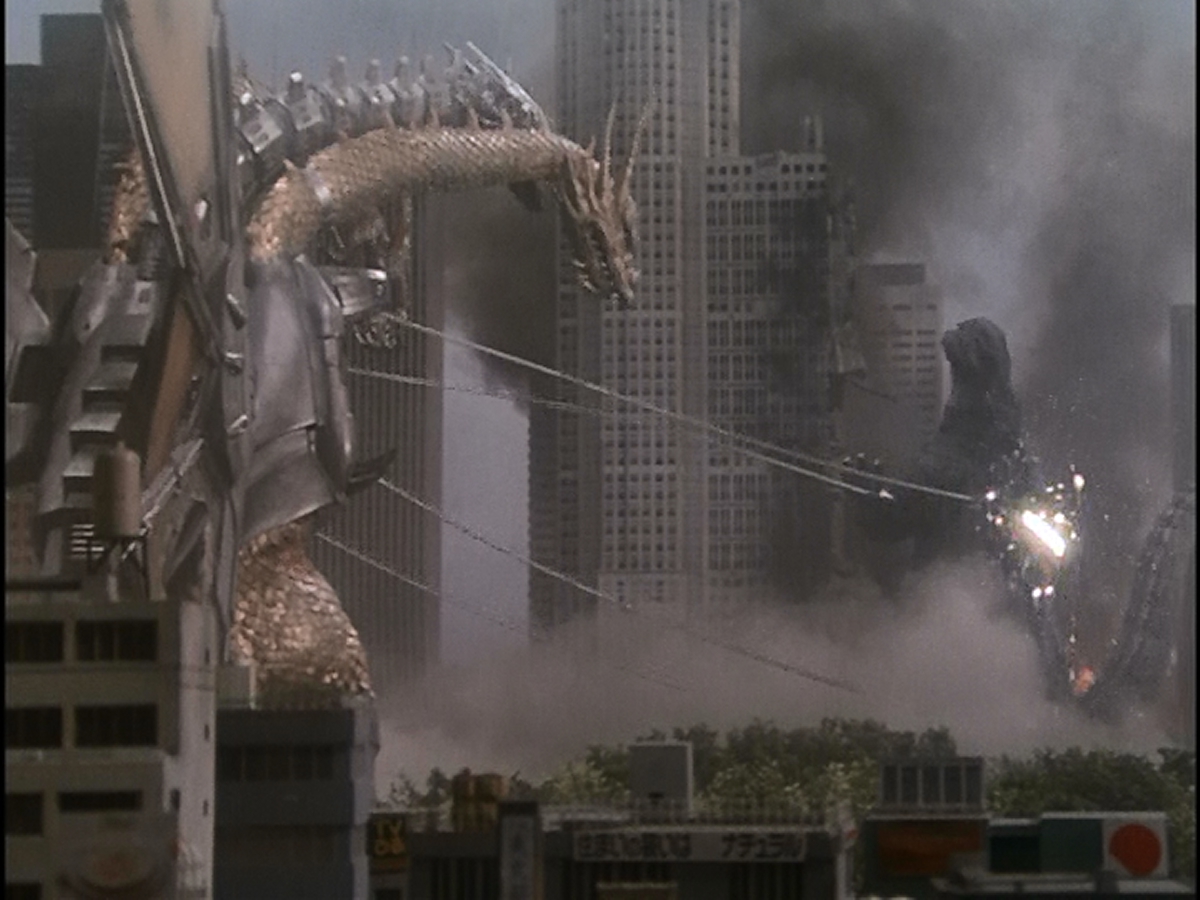Old Mechagodzilla has been scrapped for a new version, MOGERA, a call back to the 1957 Mysterians, which features a more subtle alien invasion. Like the previous Mechagodzilla, MOGERA can separate into two parts, a jet and a drilling machine. And it can reassemble itself into godzilla-like form. It also has a torso-based weapon, but it isn't a superweapon, unlike the last version. Nor does it have a mechanical jaw or cry, so it resembles Godzilla less. Still, I consider it part of the Mechagodzilla line.
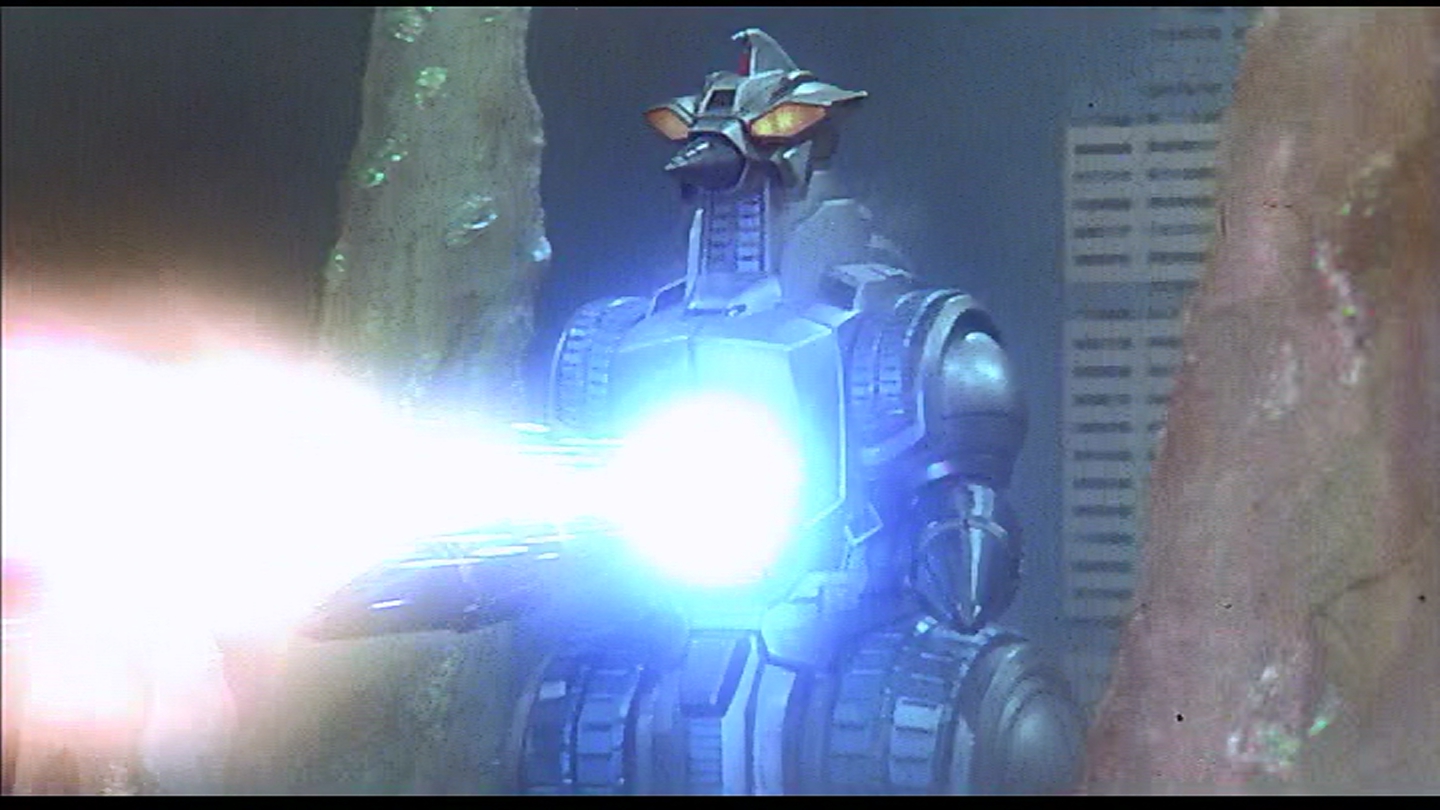
Space Godzilla is essentially the end result of the reasoning that nothing but Godzilla can stand up to Godzilla. So a powerful Godzilla comes from space. Space Godzilla is badass. Godzilla's basic upright lizard design with chunks of crystal erupting from the skin, and a couple of side-tusks similar to Biollante. It also has psychic abilities; levitation, and telekeisis and control over the crystals is has travelled through space with. It draws power from these crystals. Whatever it has instead of an atomic heat ray has a seeking function, even curling in on itself before striking its target. It can also use these powers to block Godzilla's heat ray. Nose to nose, it has enough power to perhaps destroy Godzilla. But Godzilla outsmarts it, attacking its weak point.
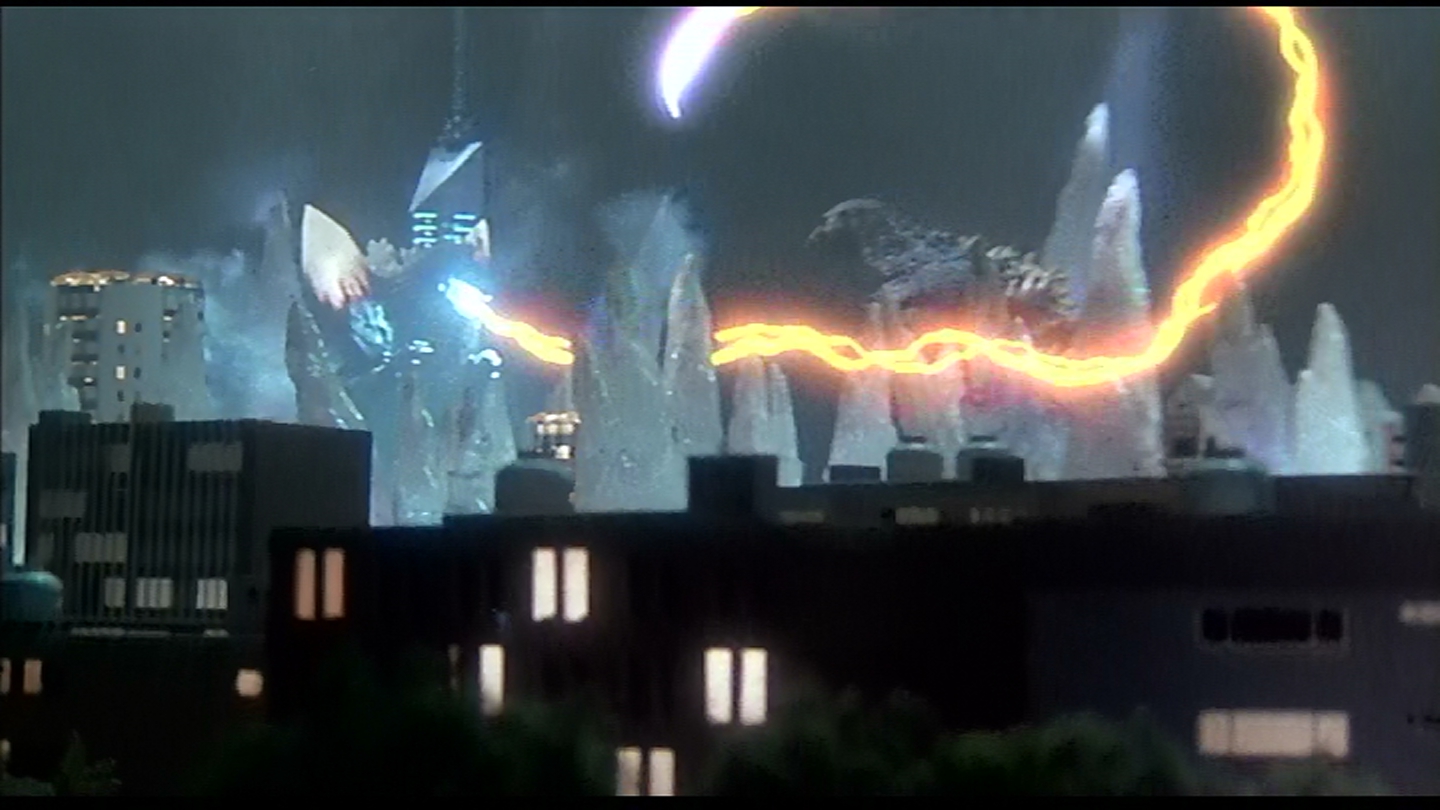
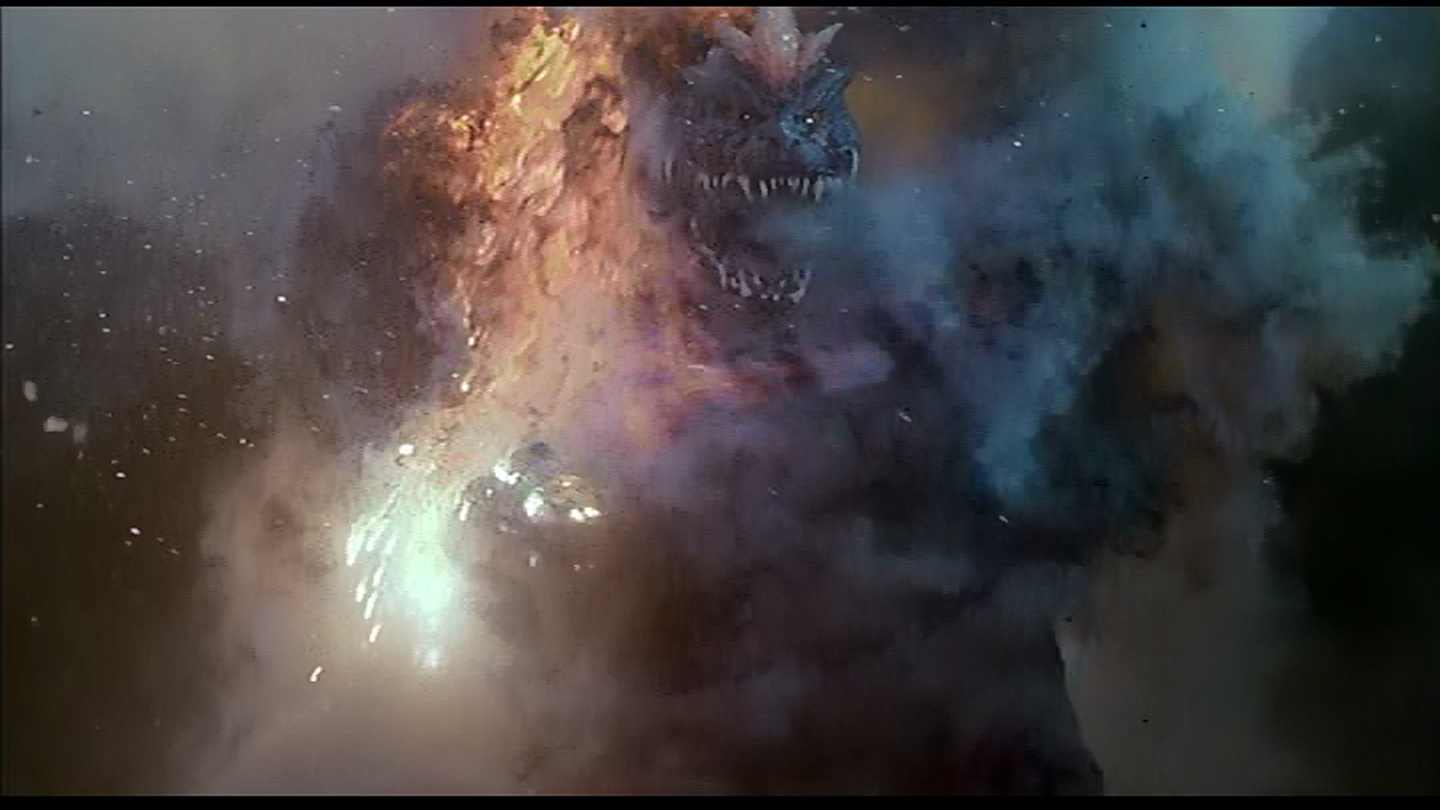
After languishing in the last three films, Miki Sagusa finally returns to the important role she had in Godzilla vs Biollante. Directing the psychic institute, she doubts that human psychics will ever be able to control Godzilla. However, it's a better alternative than attempting to kill him. Miki retains her softened position towards Godzilla from Godzilla vs Mechagodzilla II. It's something of a relief to see some growth in a character who has been neglected for so long. Using the amplifier, she exerts a certain amount if influence over Godzilla's behavior. What's surprising, given the continuity between the previous film and this one, is that Mikki is not on
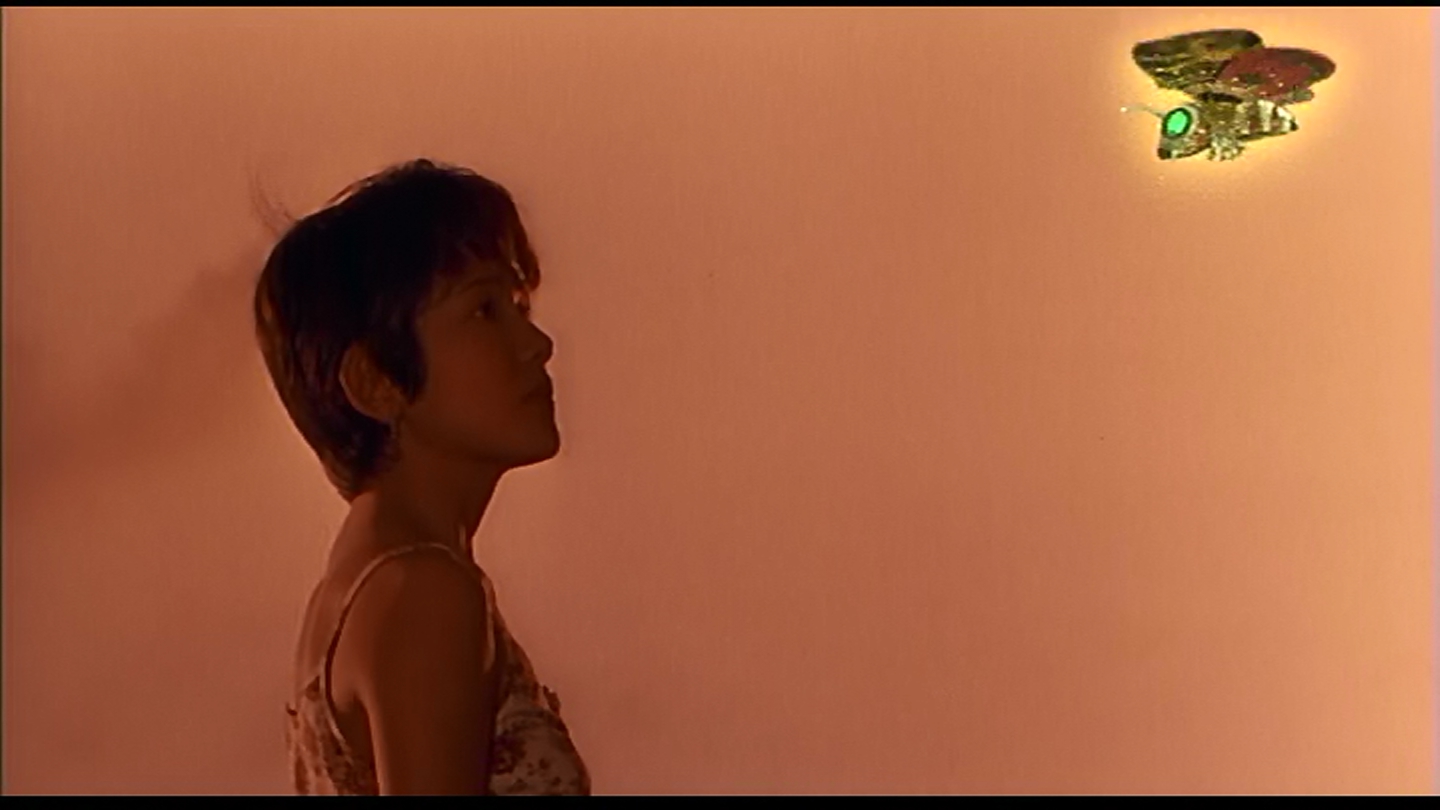
Godzilla Junior is back, and remains cute. Its first appearance, over a small ridge of rocks, echoes Godzilla's first appearance in the 1954 film. Juinior is essentially helpless, used as a hostage to get Godzilla to act. Still better than Minilla, though.
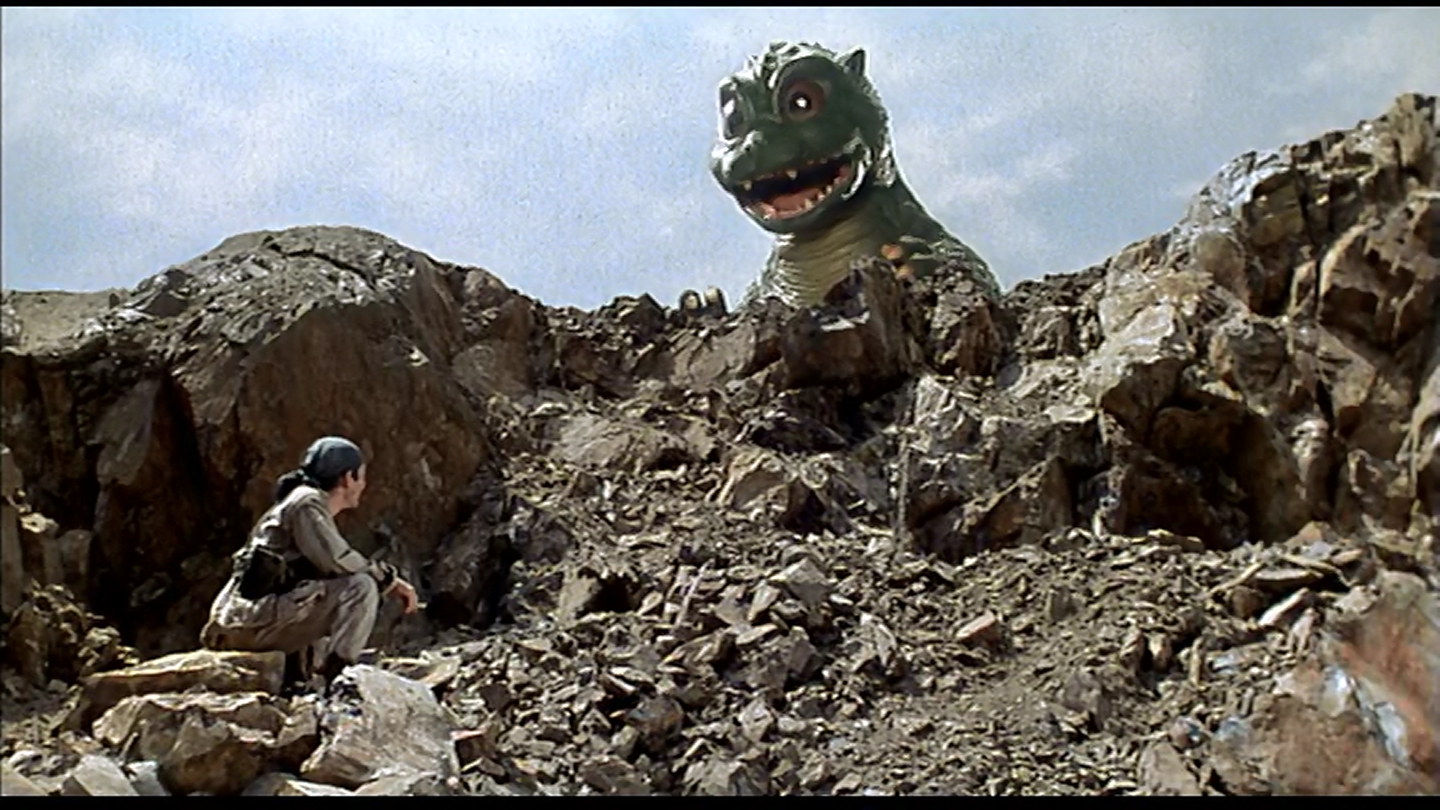
Godzilla Junior lives on a small island, similar to Monster Island from Son of Godzilla. But where the Son of Godzilla scientists had all the equipment they needed, the party here has a tent, a motorcycle, and not much else. The team, ostensibly military, stands in opposition to the scientists as to what to do about Godzilla. It's a nice continuation of the conflict from Godzilla vs Mechagodzilla II, which brought the two conflicting attitudes about Godzilla to the fore. In a call back to the military of the Showa era, the scientists tend to favor contol, rather than destruction, and paint the military as linear thinkers. Opposites attract, however, and romance brings the two sides together.
This is also a return to monster control, something that hasn't been brought up since
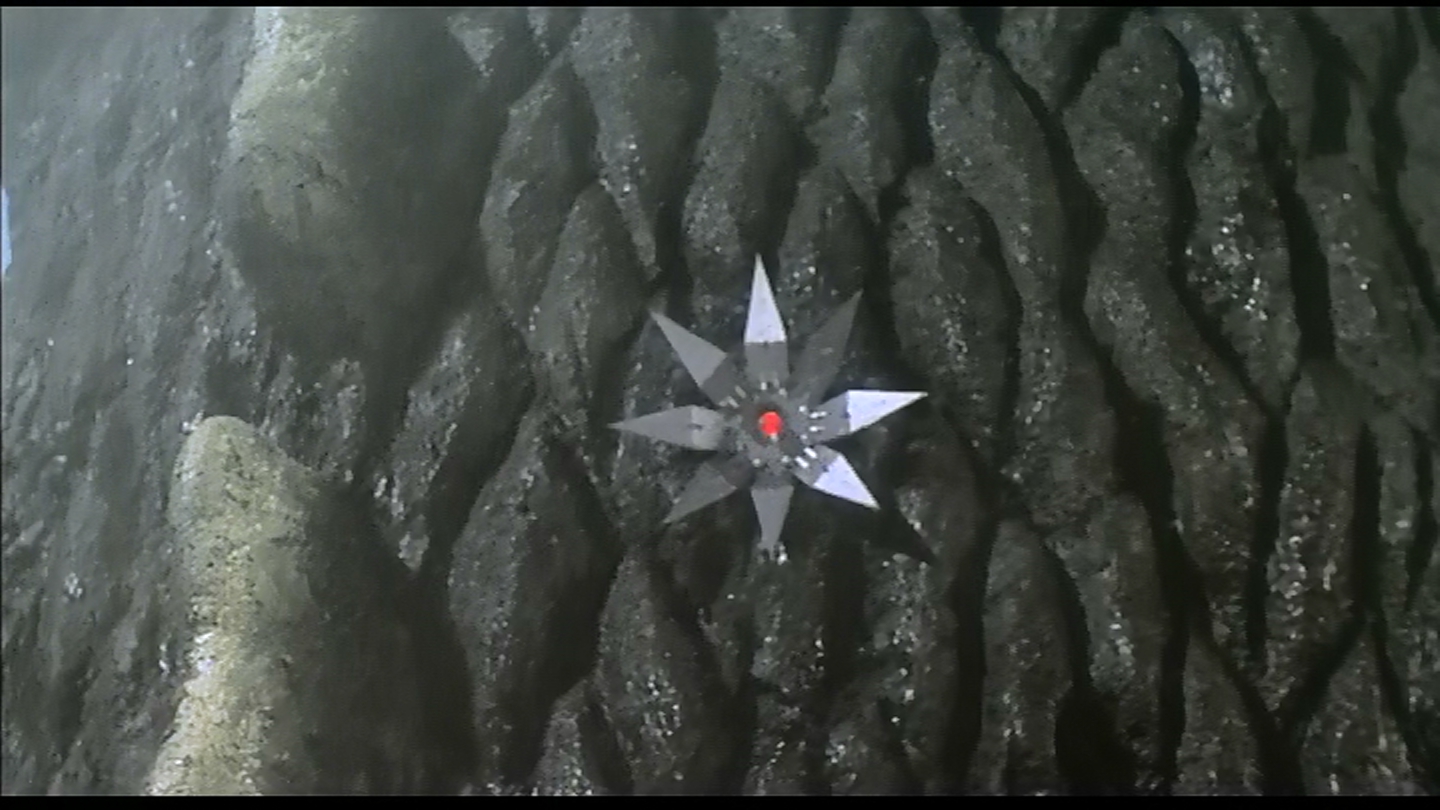
The film also features a rare appearance by the Cosmos (formerly the Shobijin) without Mothra being an active participant in the story. Unlike previous appearances, a tiny version of Mothra is shown, which in some ways ties into the Rebirth of Mothra trilogy, which would start in just two years. The Cosmos appear, deliver a warning that Earth is about to be invaded, and then fade away.
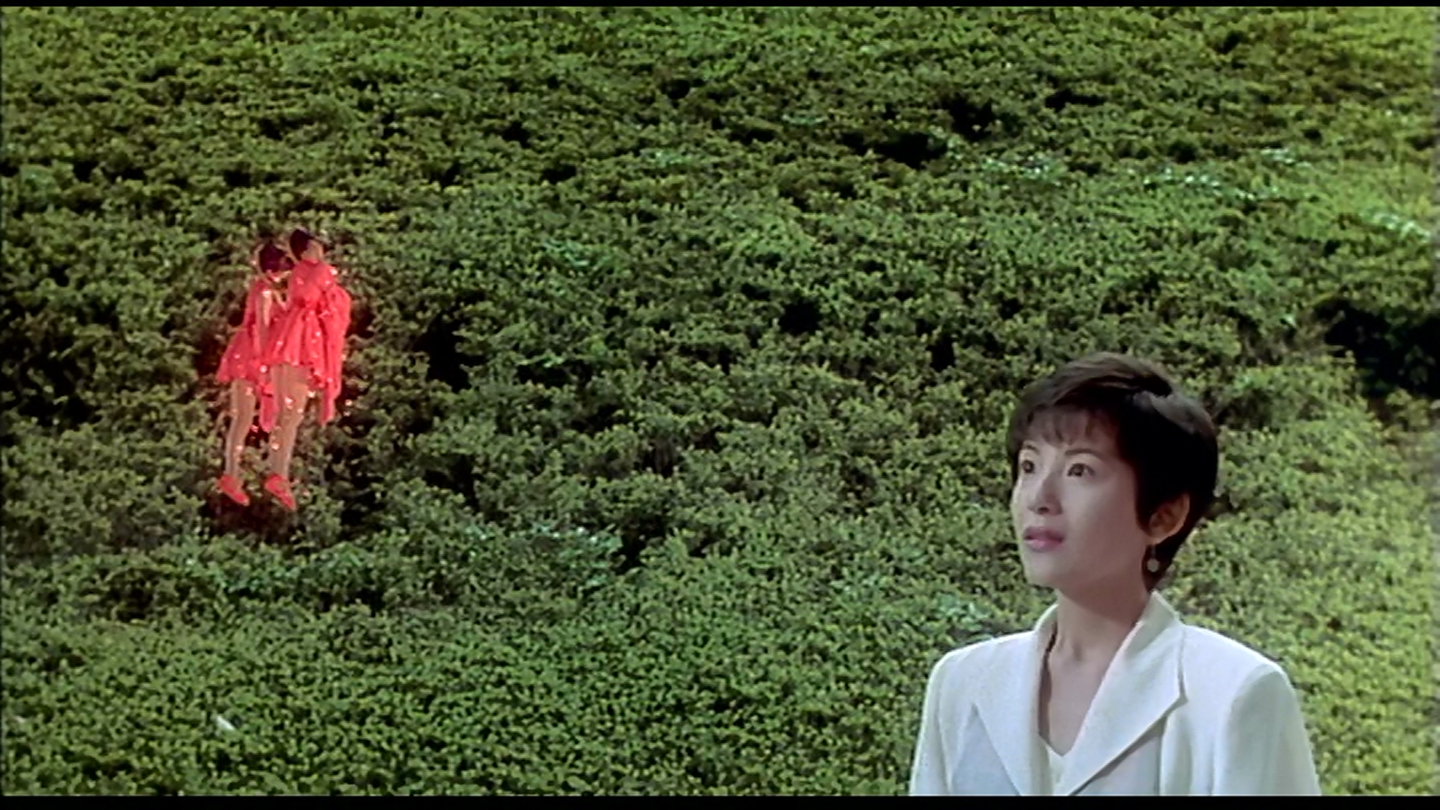
Tear Gas, as it turns out, works well against Godzilla Junior. This is a rare call back to King Kong, where Kong is knocked out by gas. In addition, anti-Godzilla Yuki has a bullet of blood coagulant. This magic bullet calls back to the isotope grenade fired into the Beast's neck in Beast from 20,000 Fathoms. One bullet to take down a massive creature.
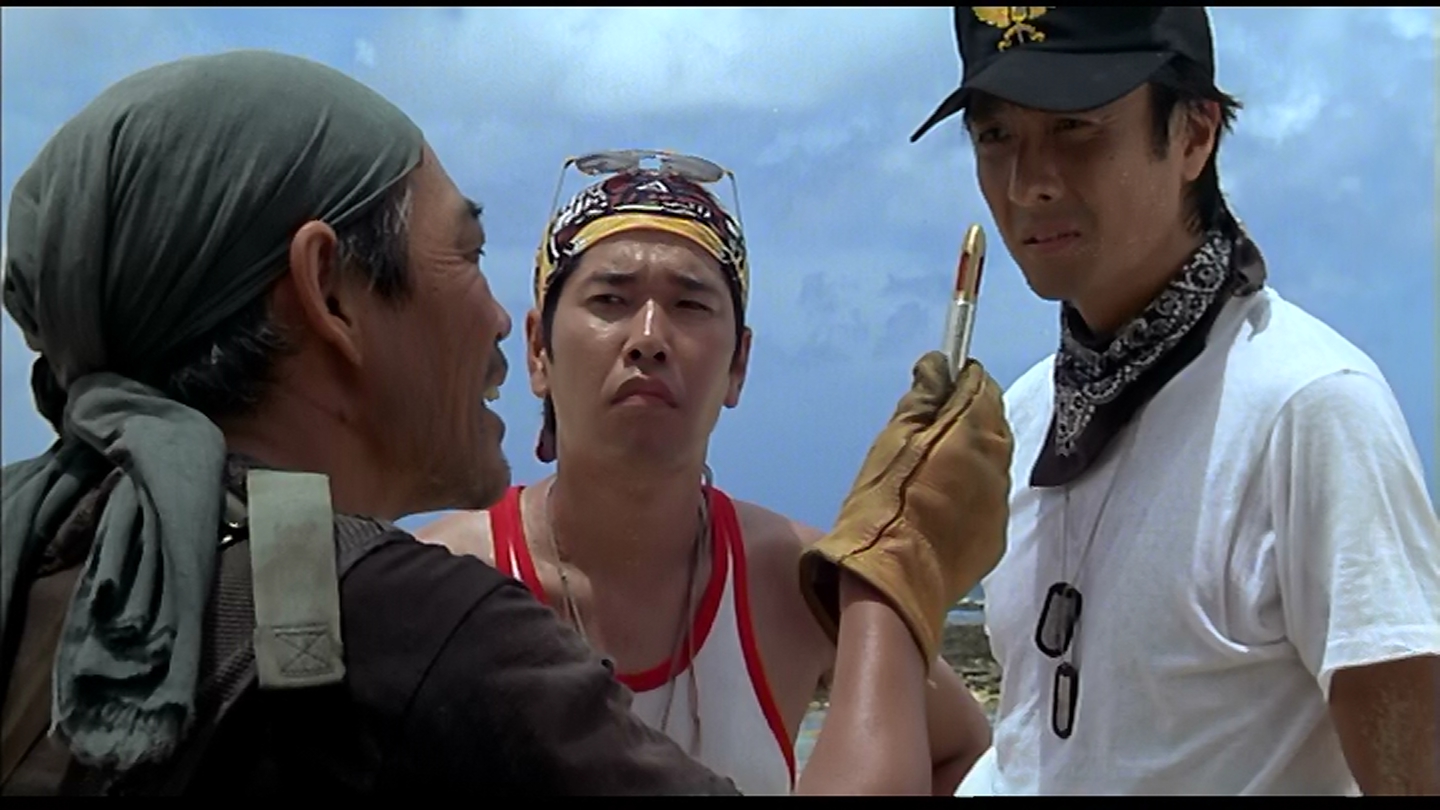
Godzilla's red atomic breath has been regraded to the blue version, until the very end. Perhaps the power-up from Rodan was only temporary, or optional. And as the times have changed, so has Godzilla's parenting style. In cotnrast to Son of Godzilla, and Godzilla's Revenge, Godzilla now protects Junior from the attacks, shielding him with his body. In some moments, it's quite touching as Godzilla hunches over Junior, shielding him Space Godzilla's onslaught.
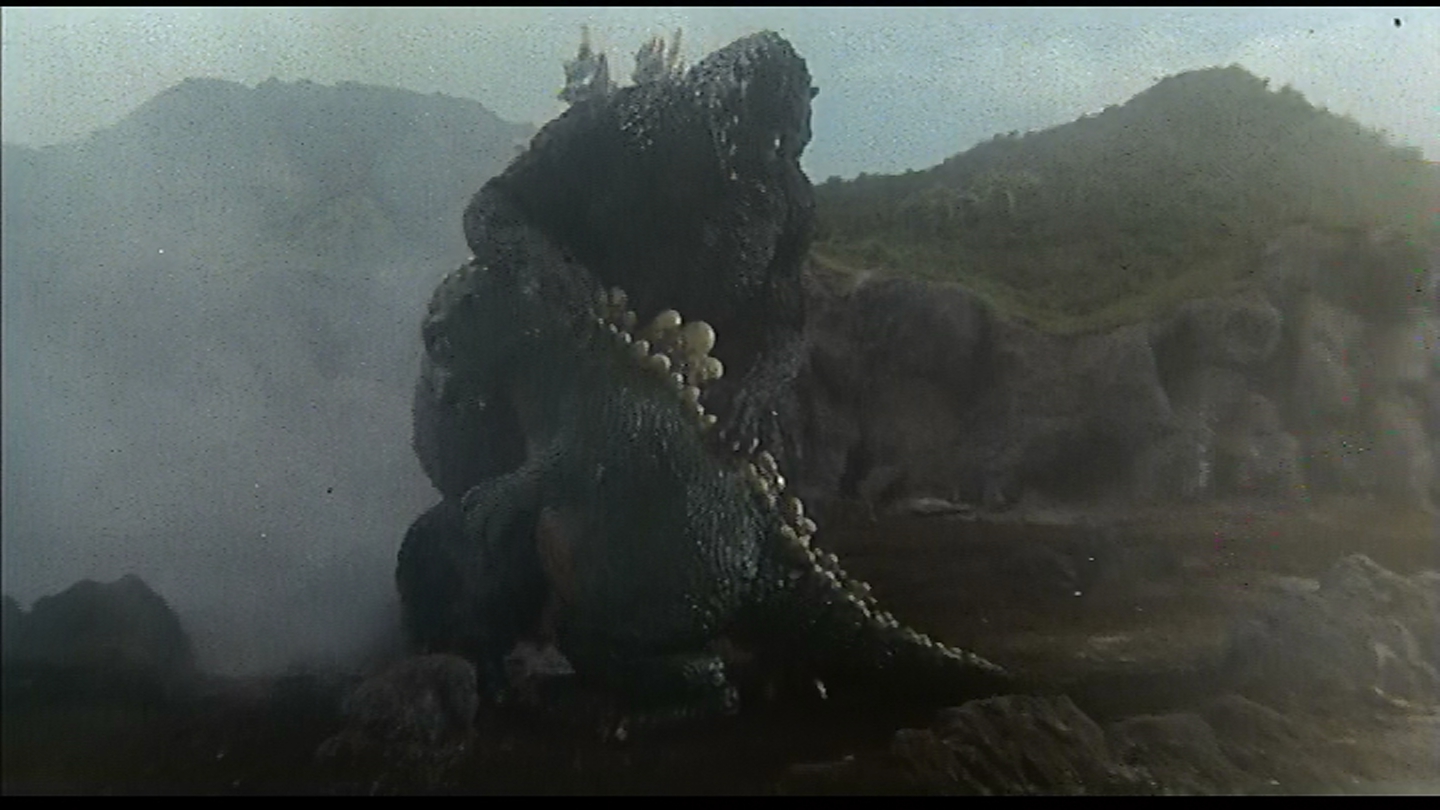
Part of the reason this film gets a terrible reputation is due to the laughably bad encoutner between MOGERA and Space Godzilla in the first half hour. MOGERA intercepts Space Godzilla in what appears to be an asteroid zone, because of course the anti-Godzilla weapon is space worthy. The fight looks awful.
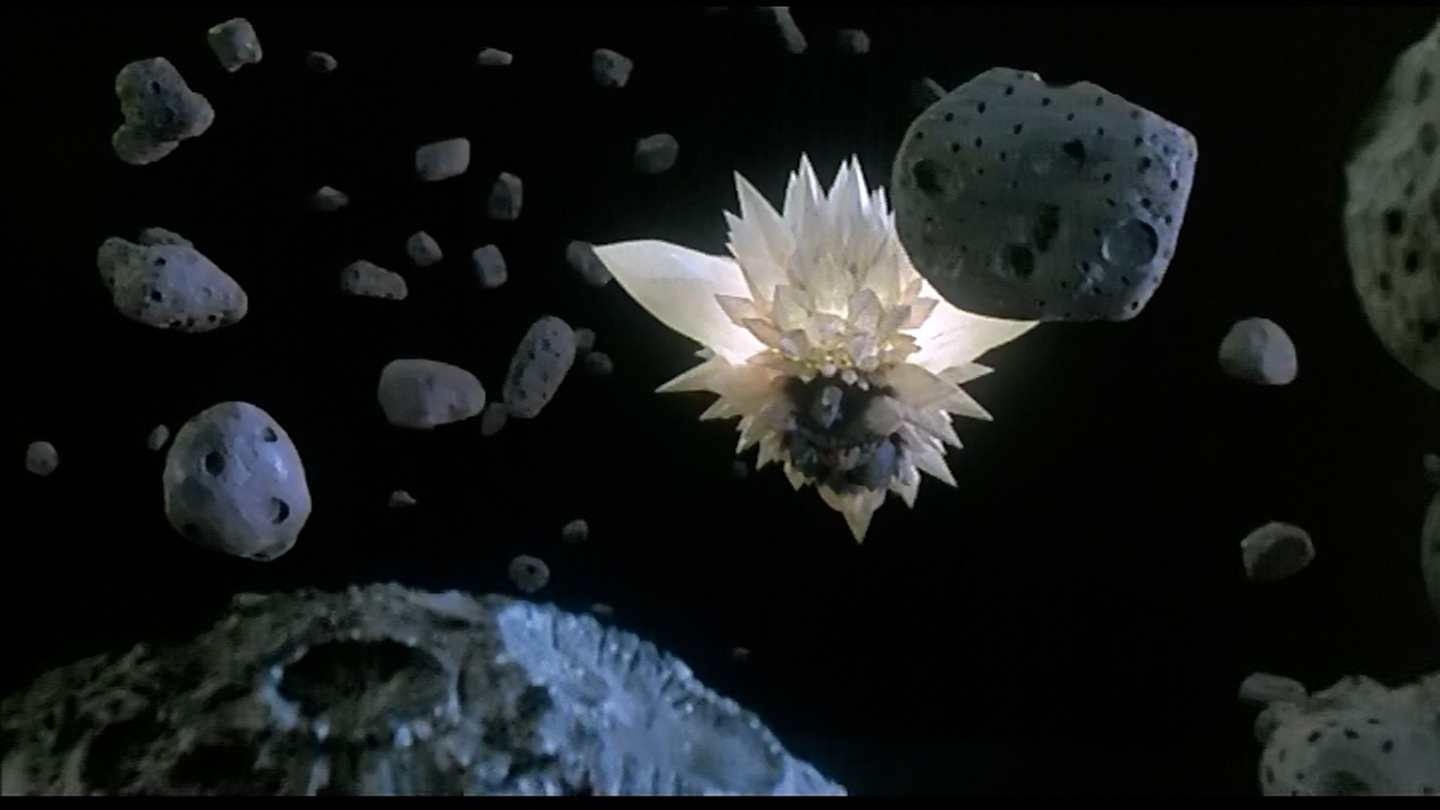
The final battle, however, is strangely beautiful. Godzilla and Space Godzilla face off in a field of giant crystals. MOGERA gets to the battle first, but the real show starts when Godzilla shows up. In addition to using its breath attack, Space Godzilla also uses telekenesis to throw Godzilla into a building. And it levitates, like some sort of enlightened Buddhazilla.
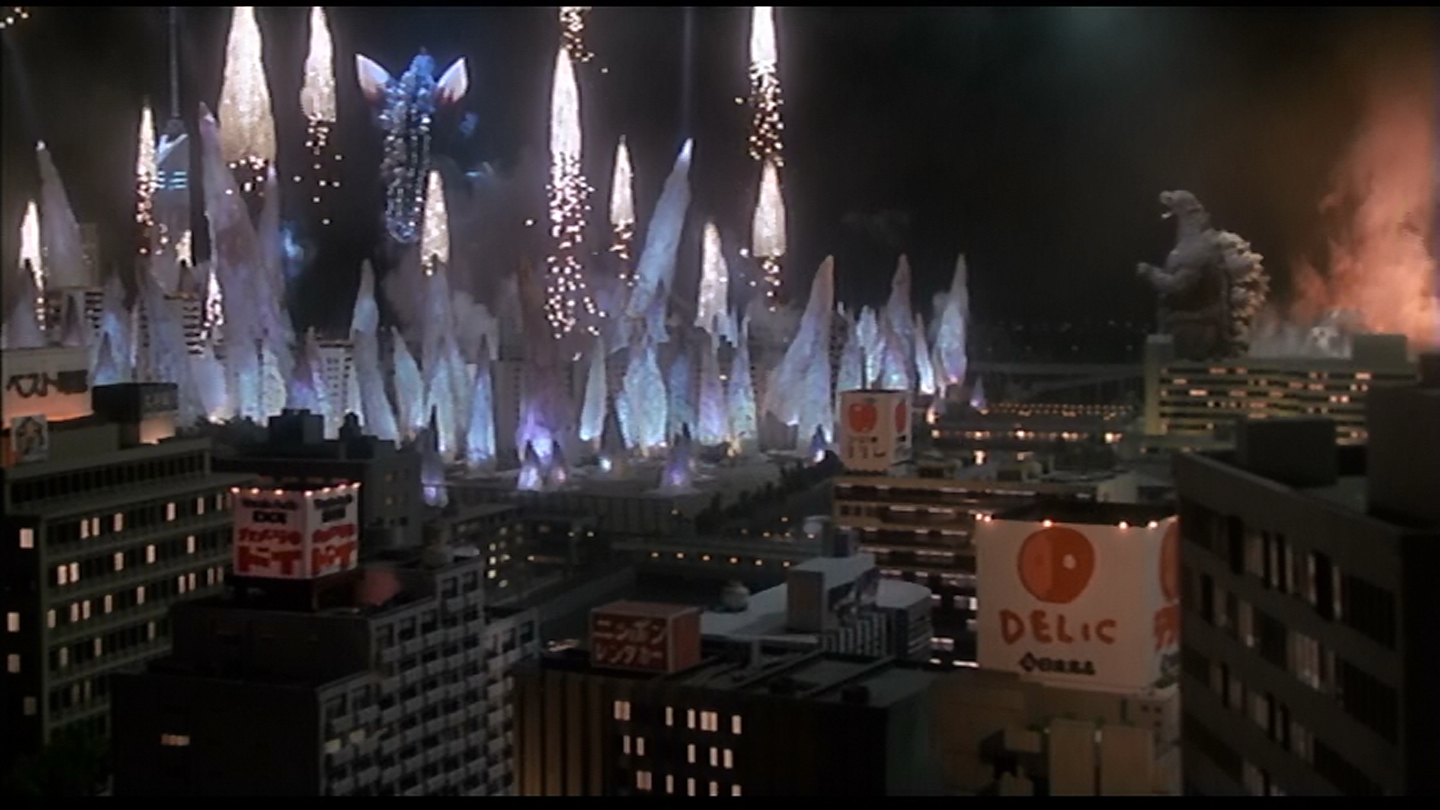
It also uses the crystals as projectiles, throwing them at Godzilla.
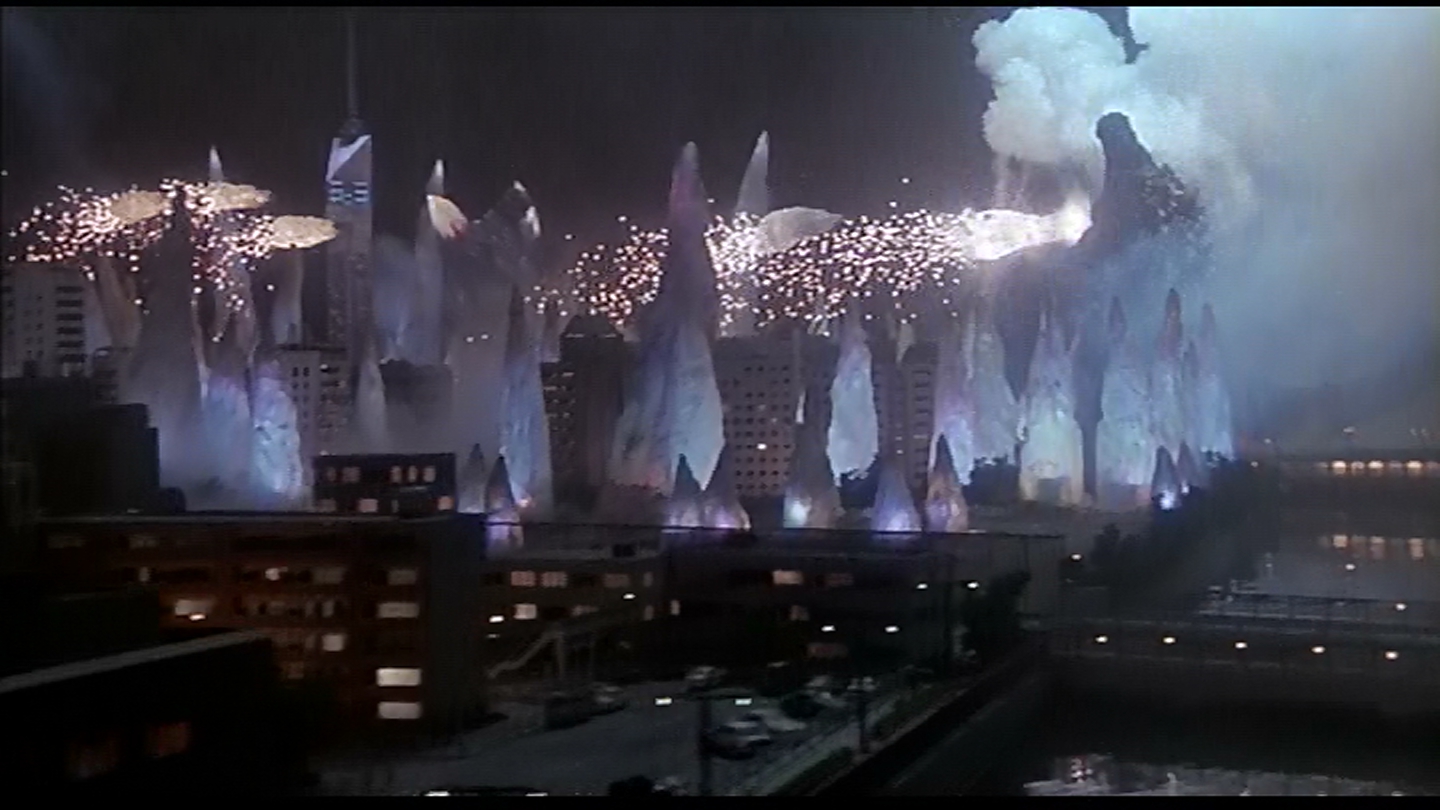
But its vulnarability is the crystals embedded in its shoulders. MOGERA smashes these, and Space Godzilla's power decreases markedly. And then Godzilla does what he does best.
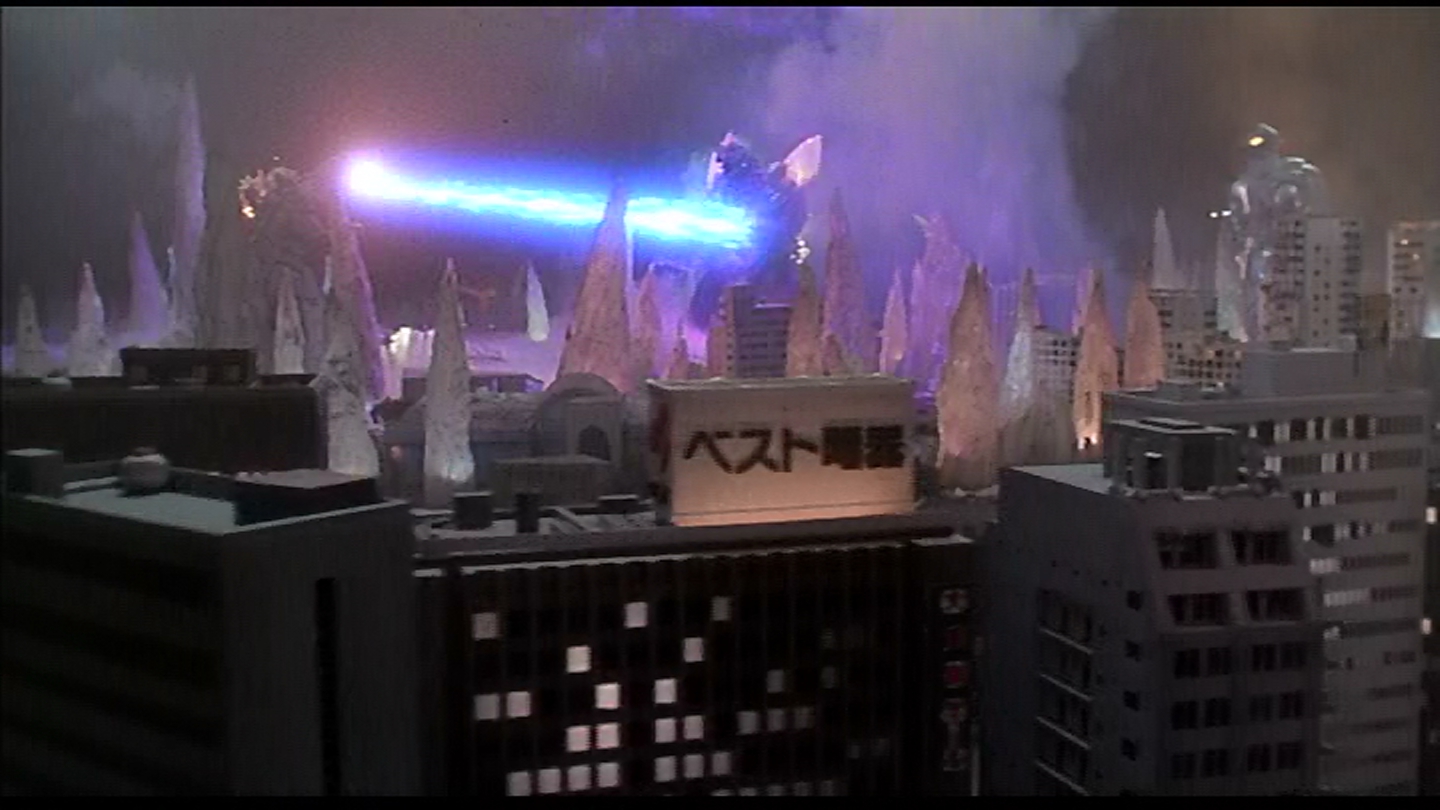
Once both of its opponents are down, Godzilla unleashes the red atomic heat ray, incinerating both MOGERA and the remains of Space Godzilla.
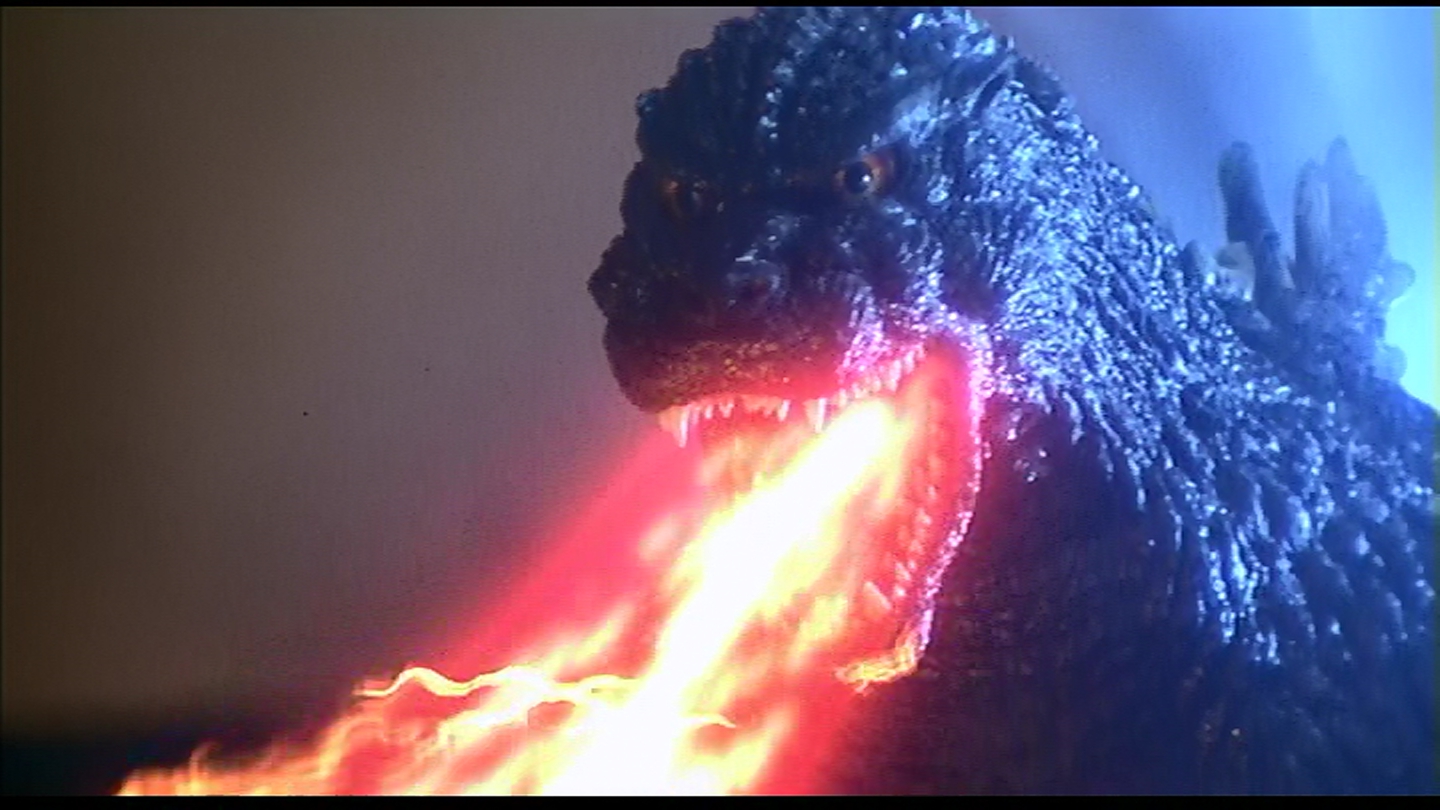
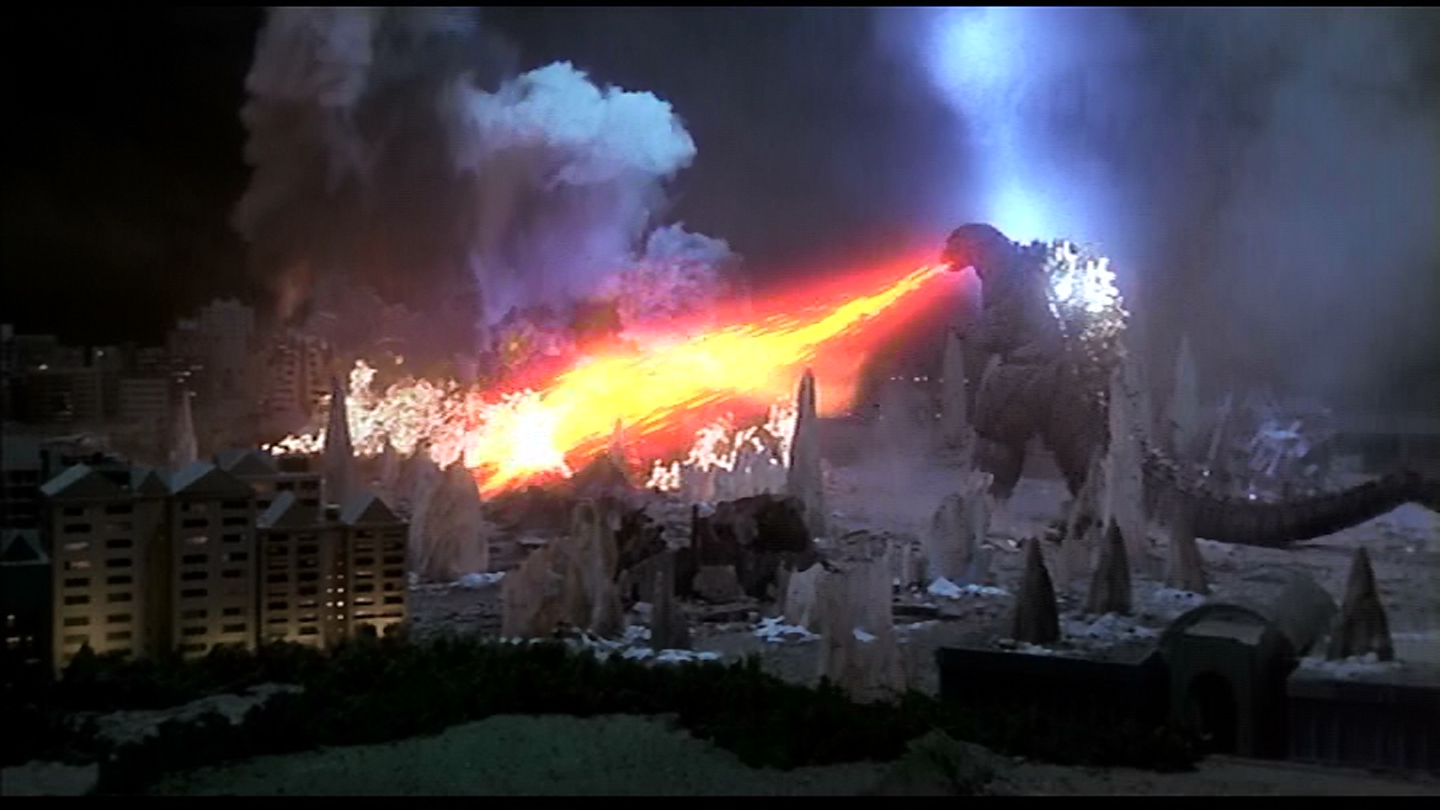
The final confrontation between Space Godzilla, MOGERA, and Godzilla is excellent. Unfortunately, there's some stuff to wade through before the reward. I haven't mentioned the completely extraneous plot to kidnap Miki, because it doesn't affect the rest of the plot at all. So I can see the dislike of the film, but it's certainly not the worst Godzilla film, or even the worst of the Heisei films.
Next up, the return of old fiends, and enemies.
